The document is an introductory guide to Python programming, covering topics such as installing Python, using the Spyder IDE, and fundamental language concepts including variables, operators, data types, and control flow structures like if/else statements and loops. It emphasizes the differences between Python 2 and 3, outlines the structure of Python code, and provides tutorials for hands-on practice. The tutorial is provided by Brian Gregor and addresses users with varying levels of experience in Python and other programming languages.
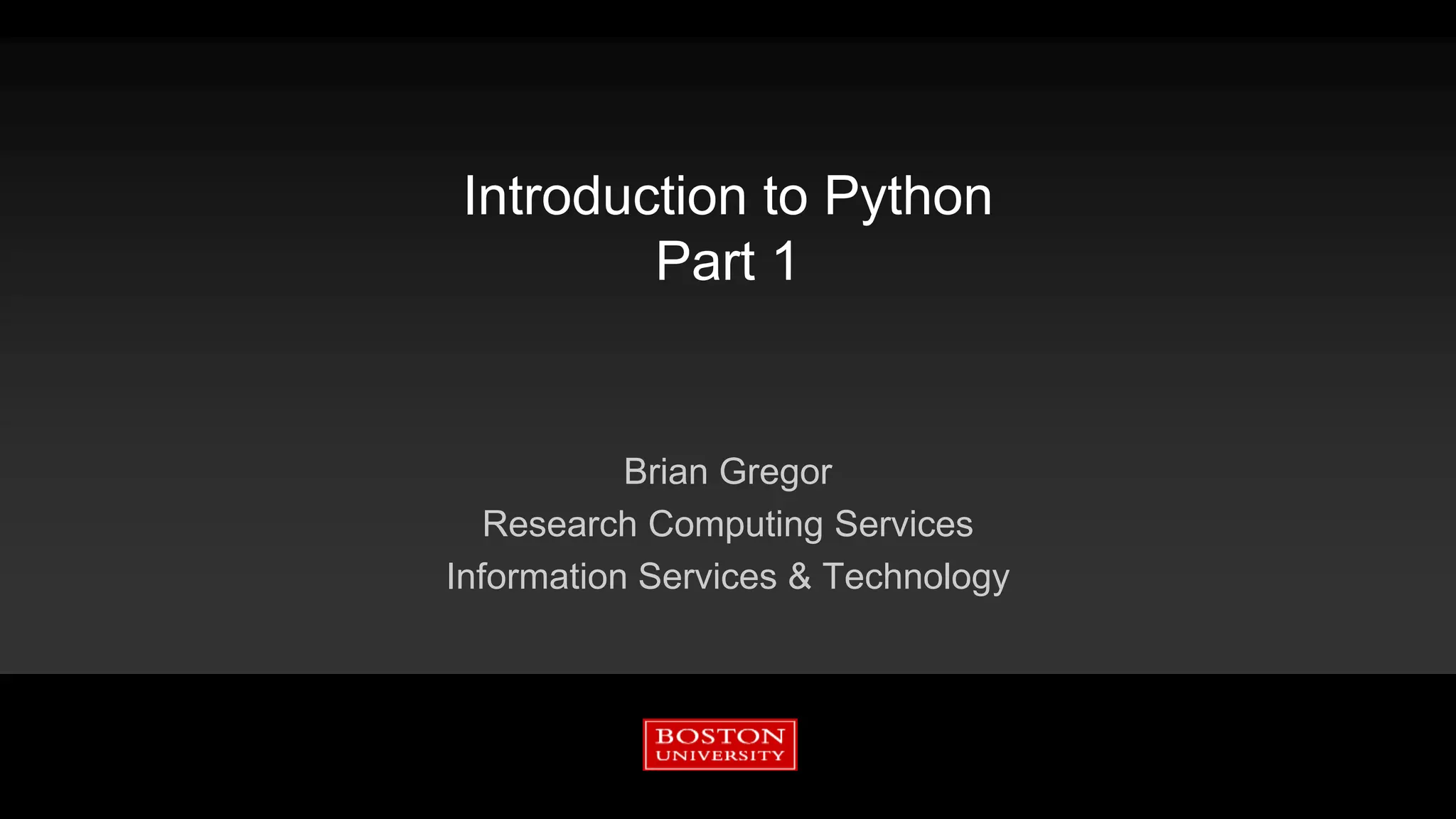
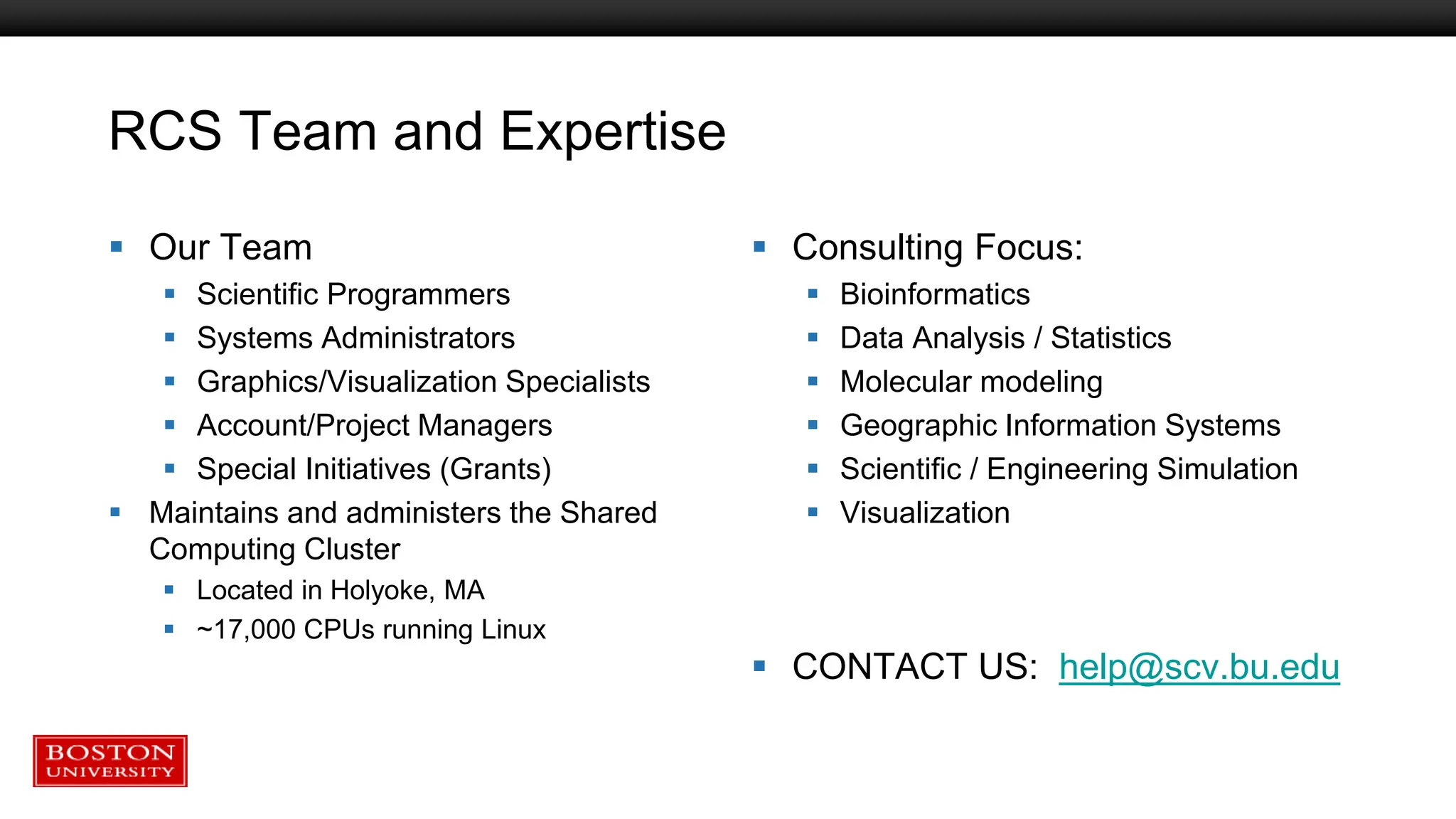
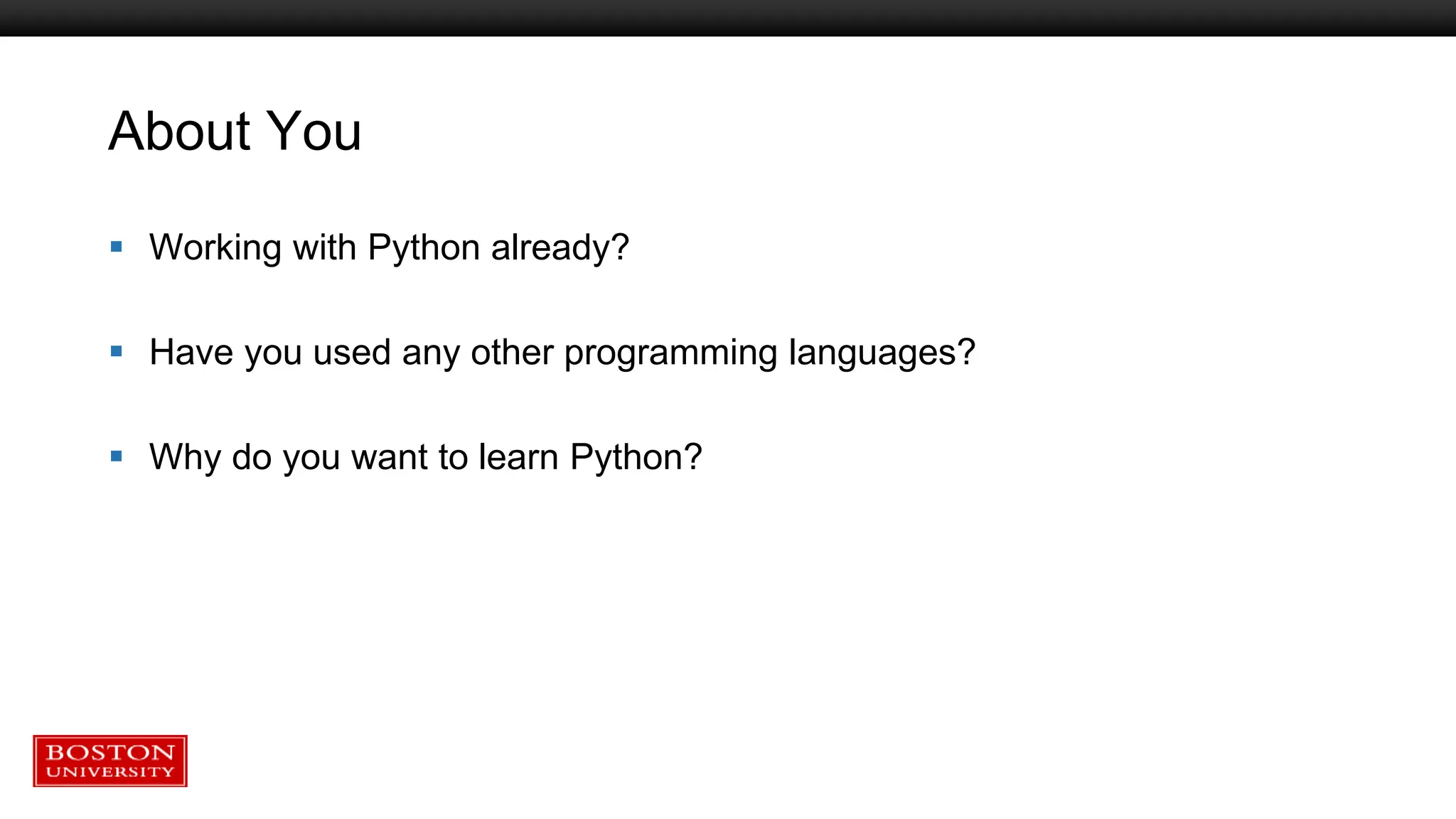
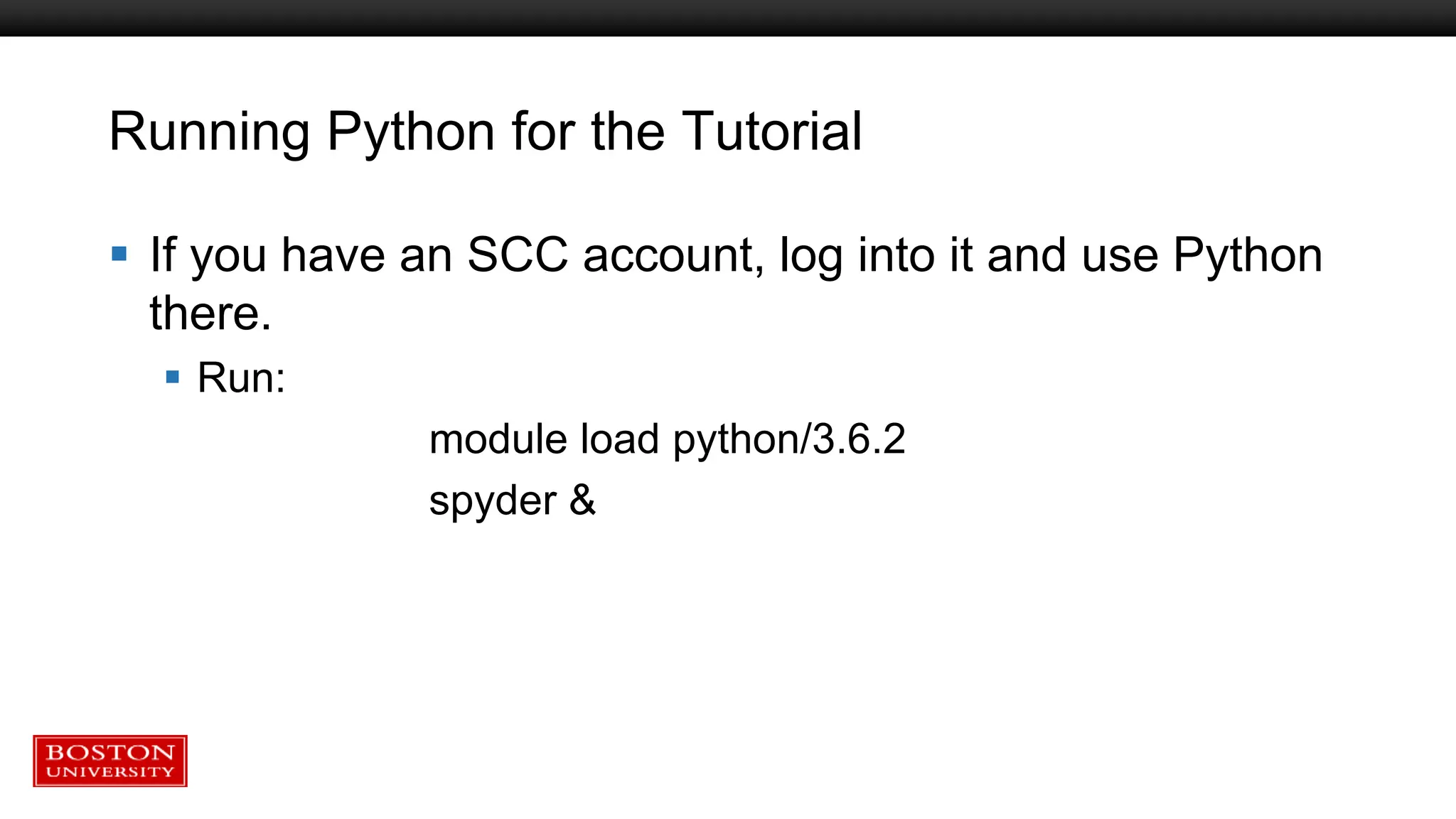
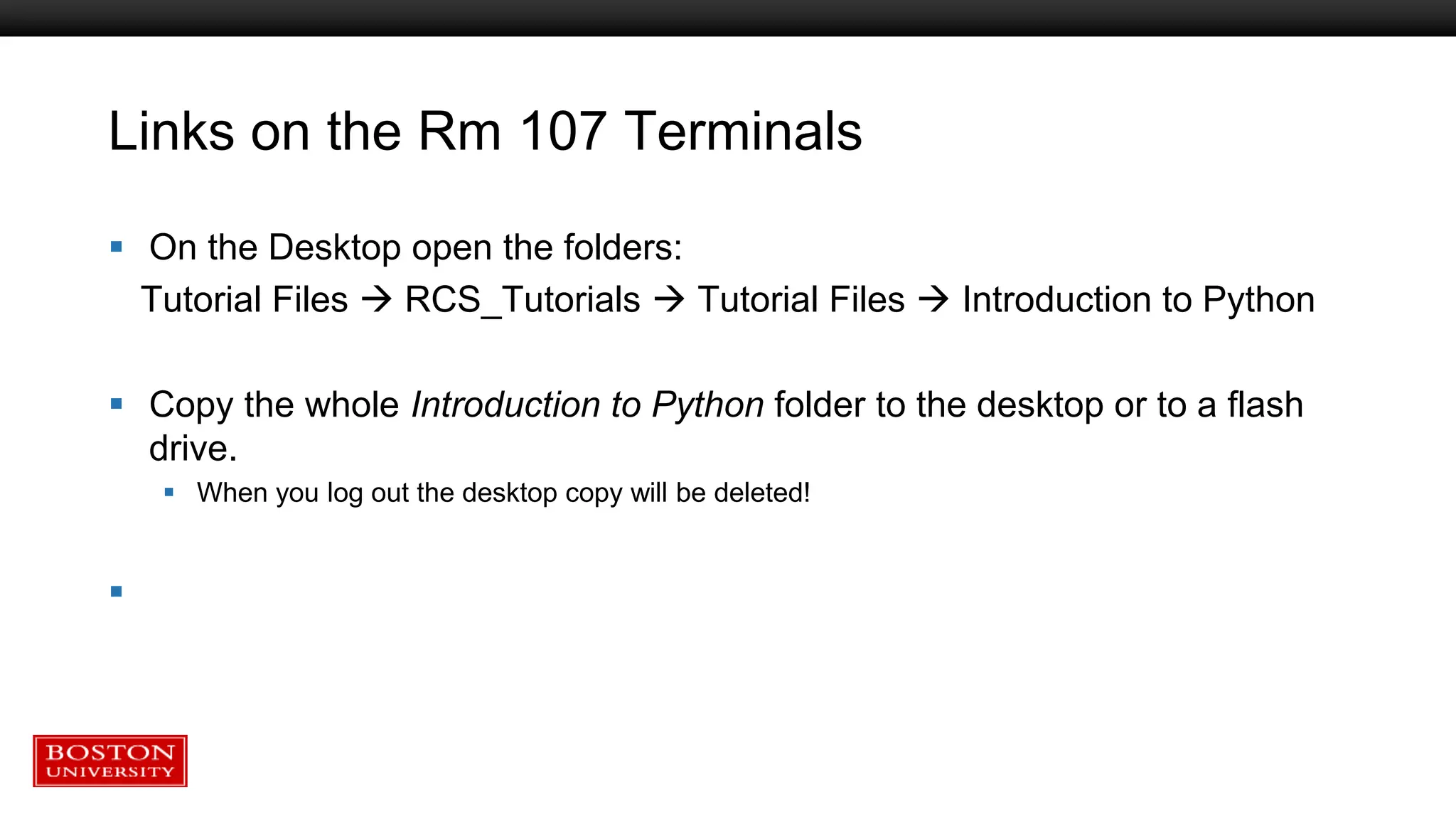
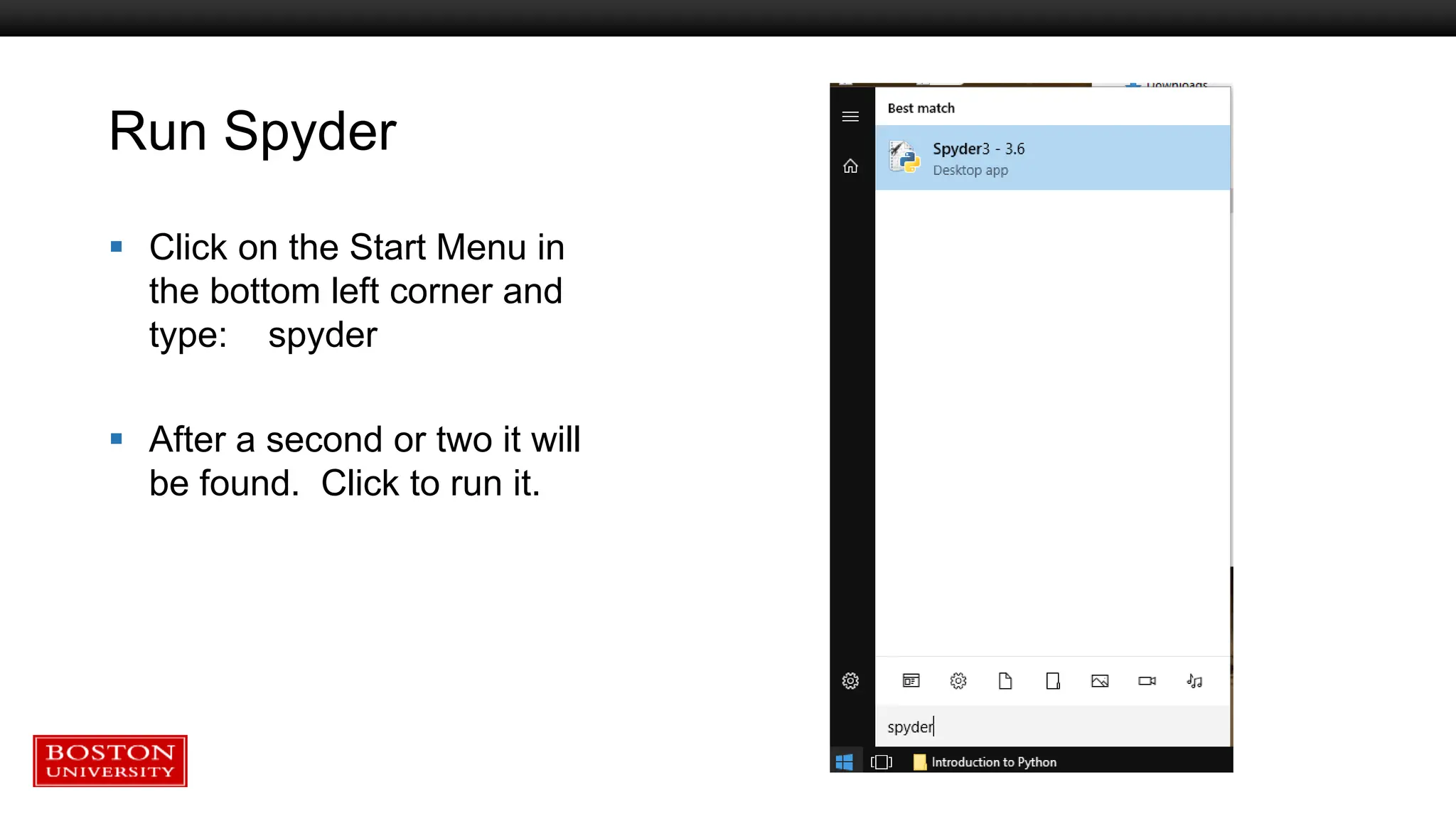
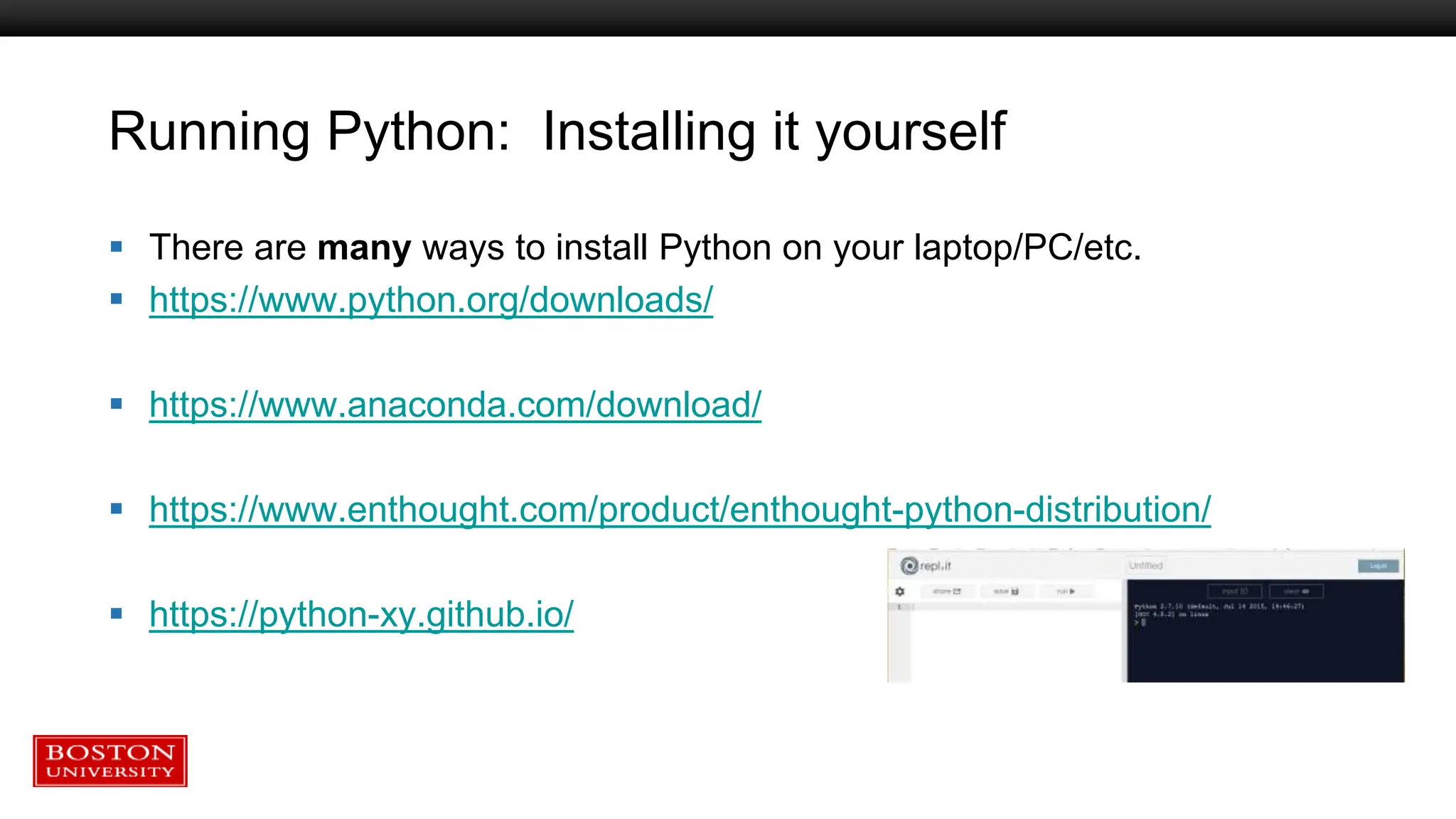
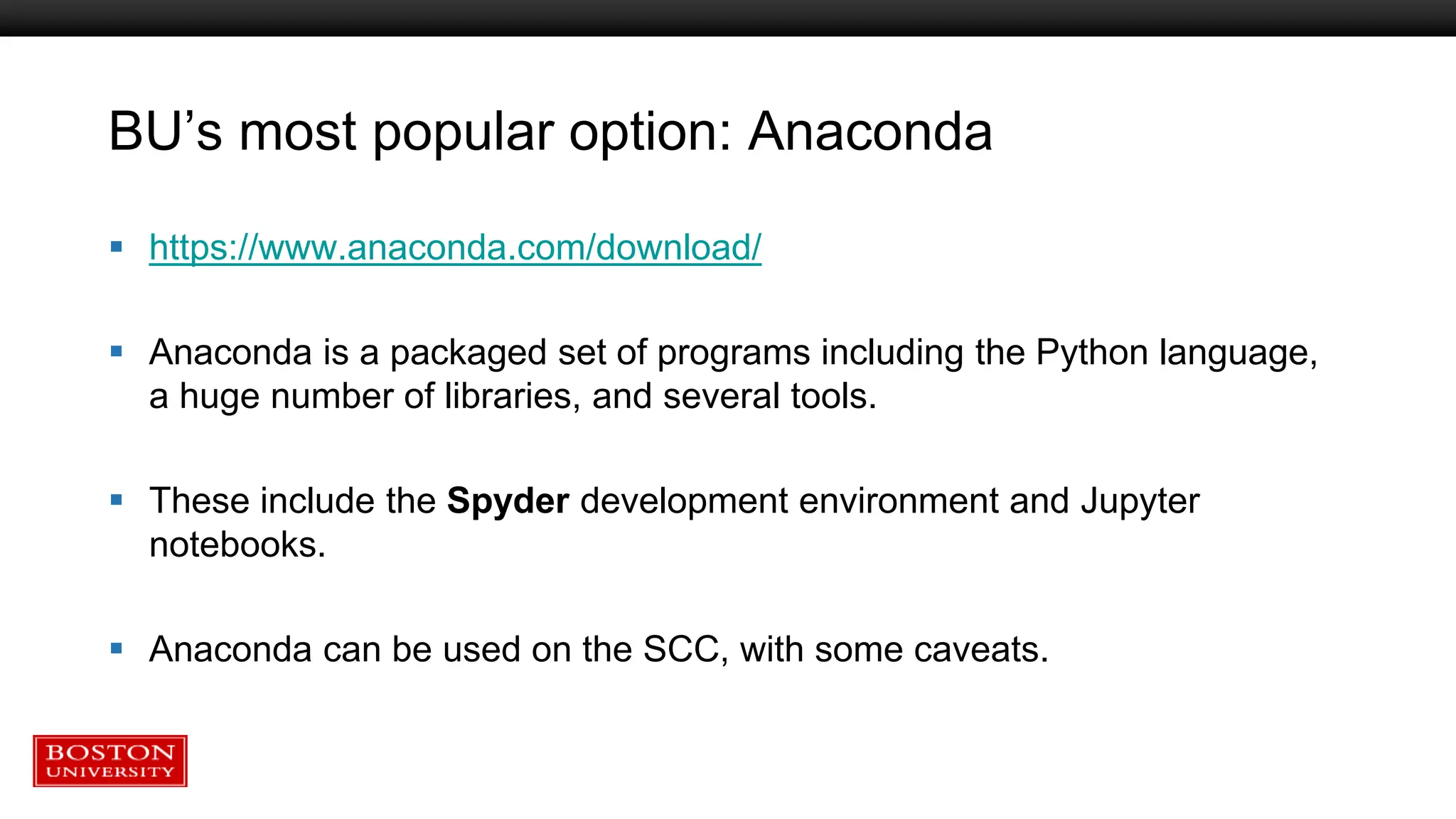
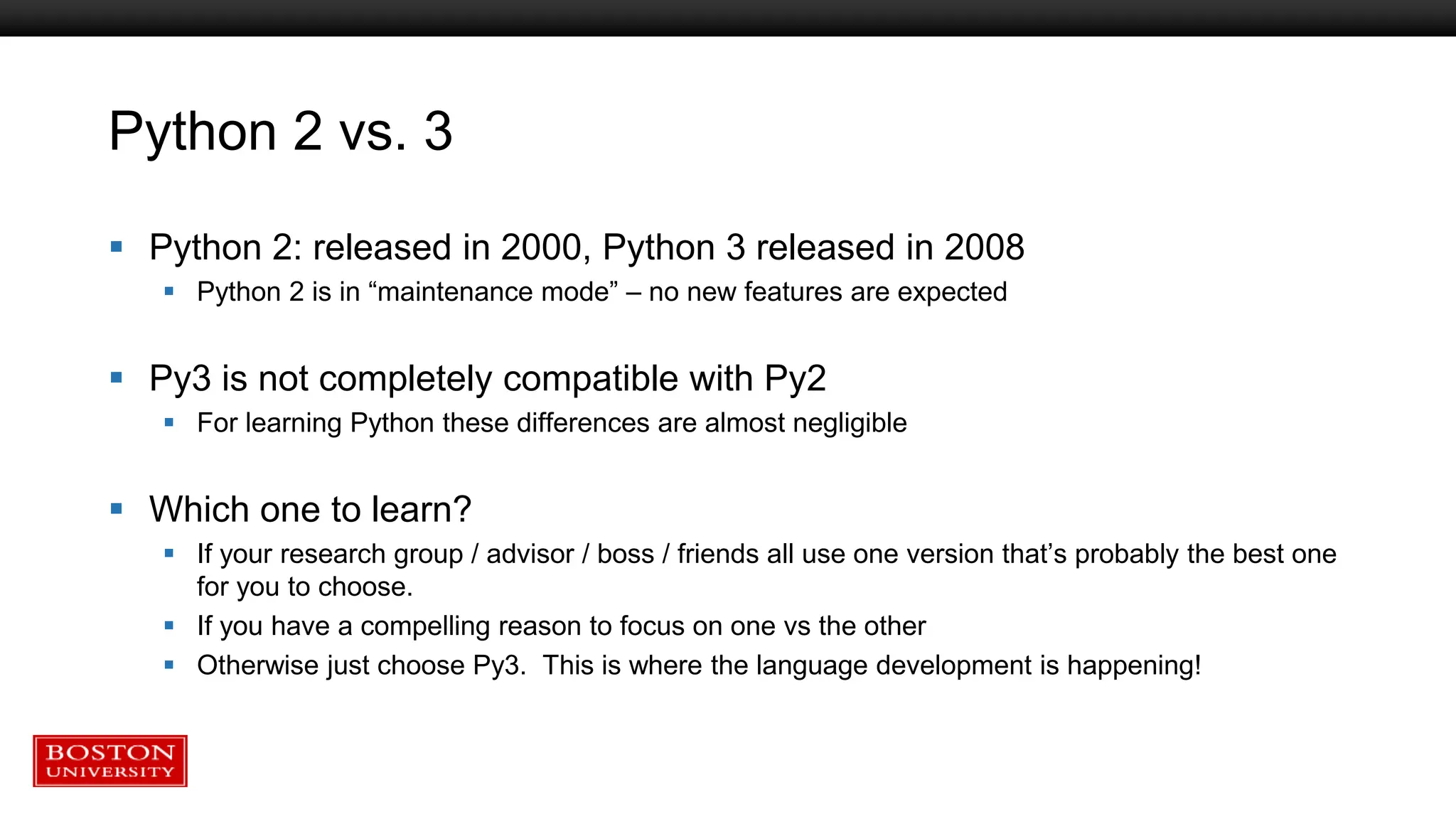
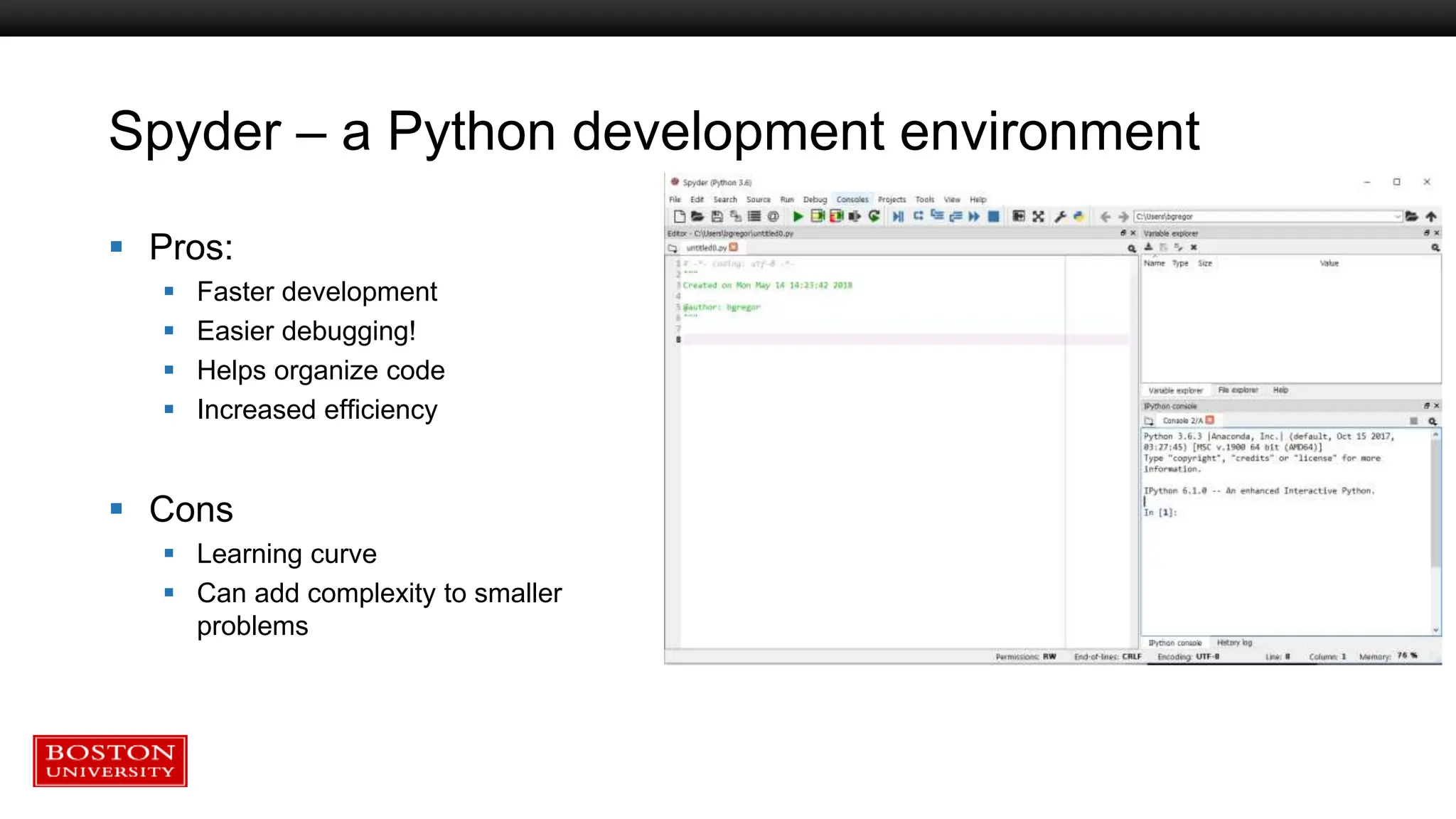
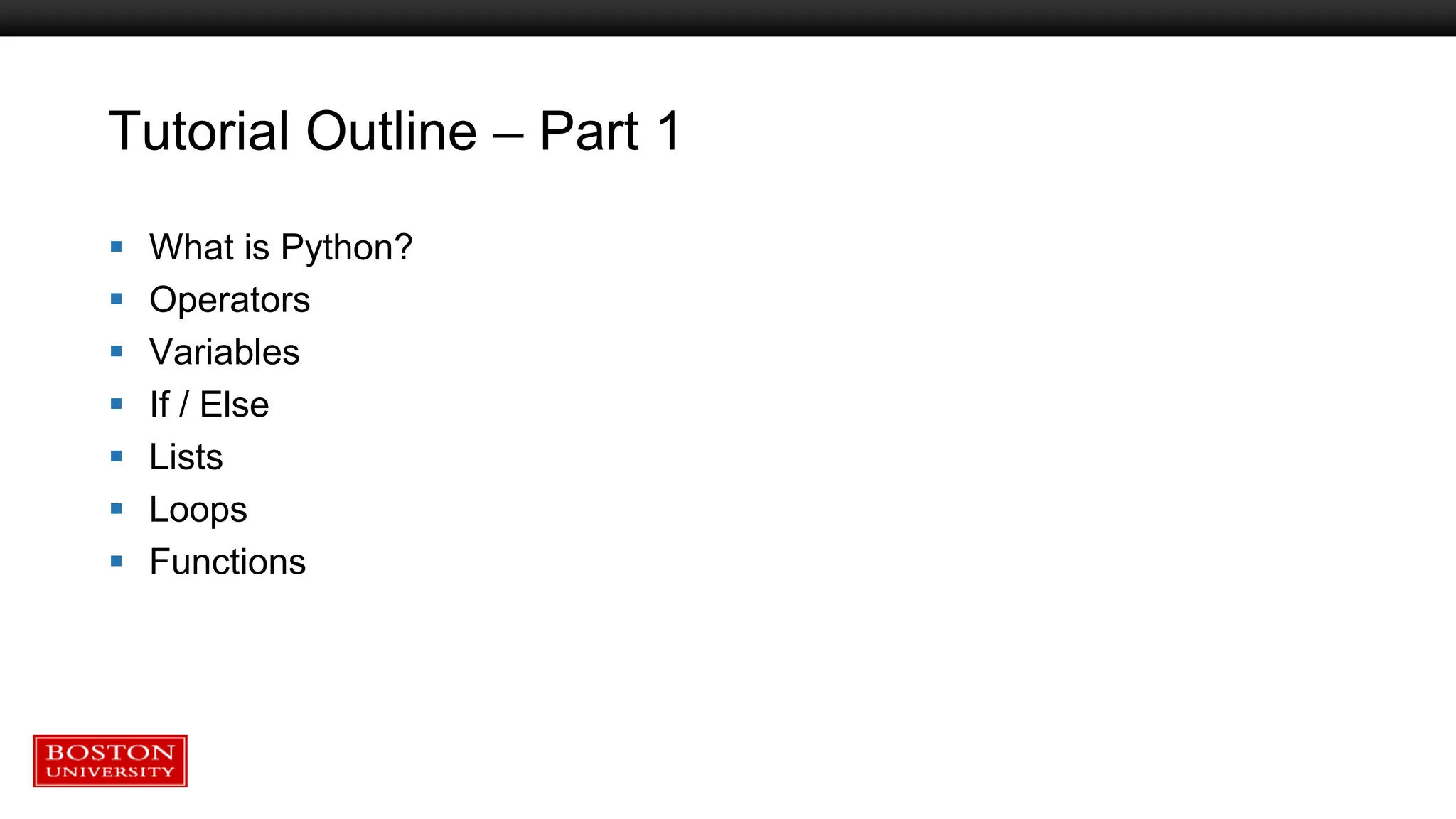
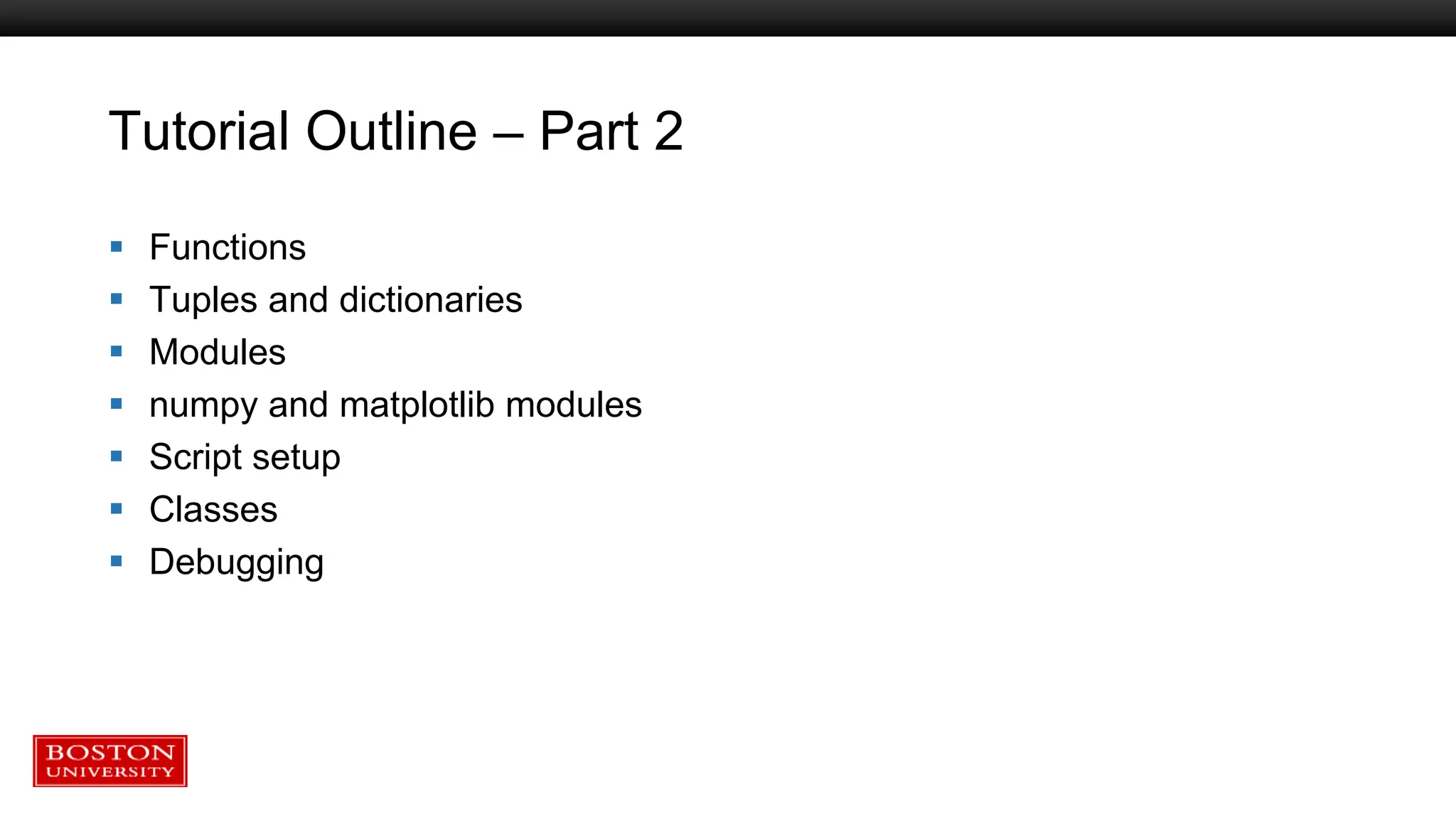
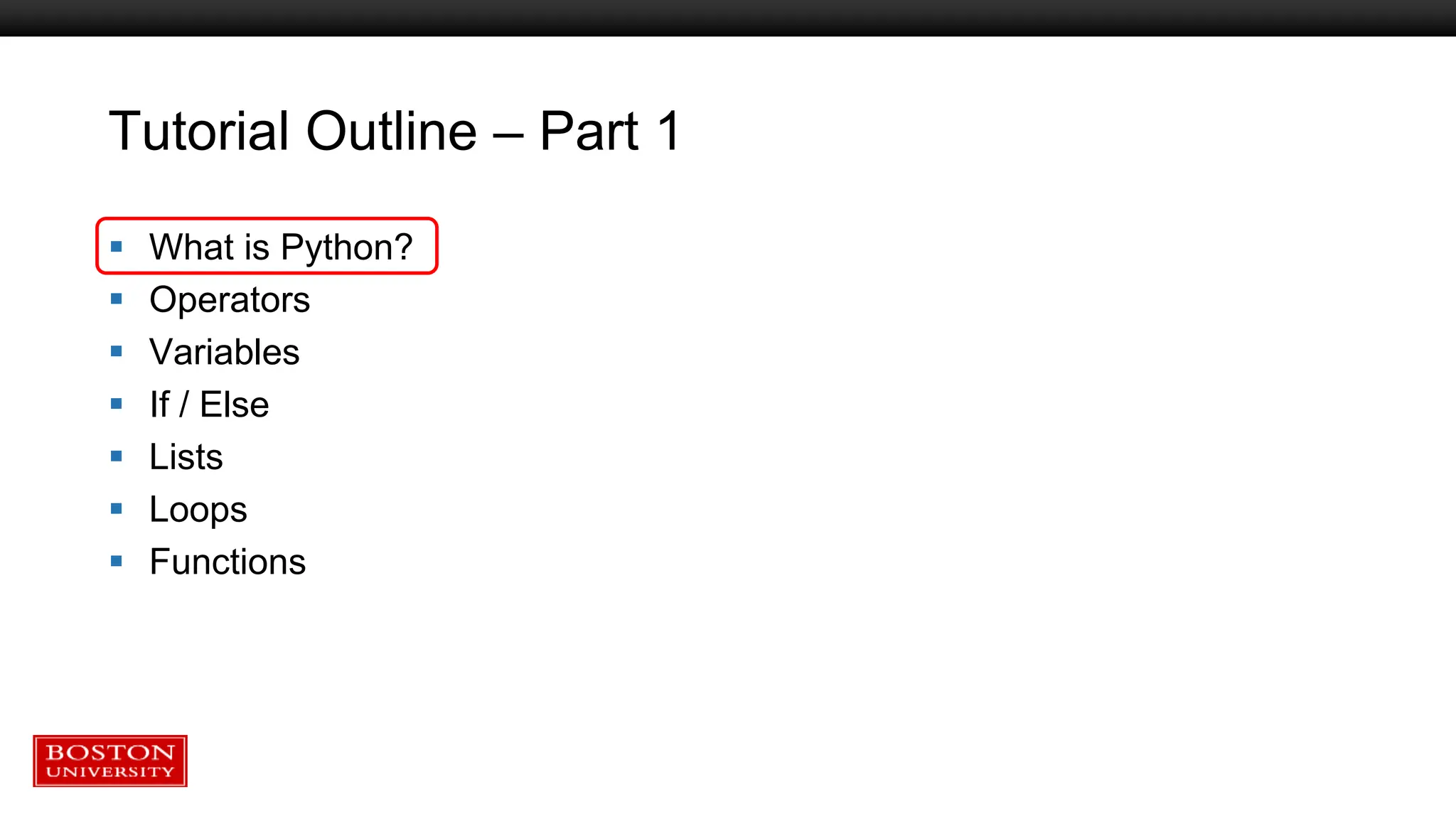
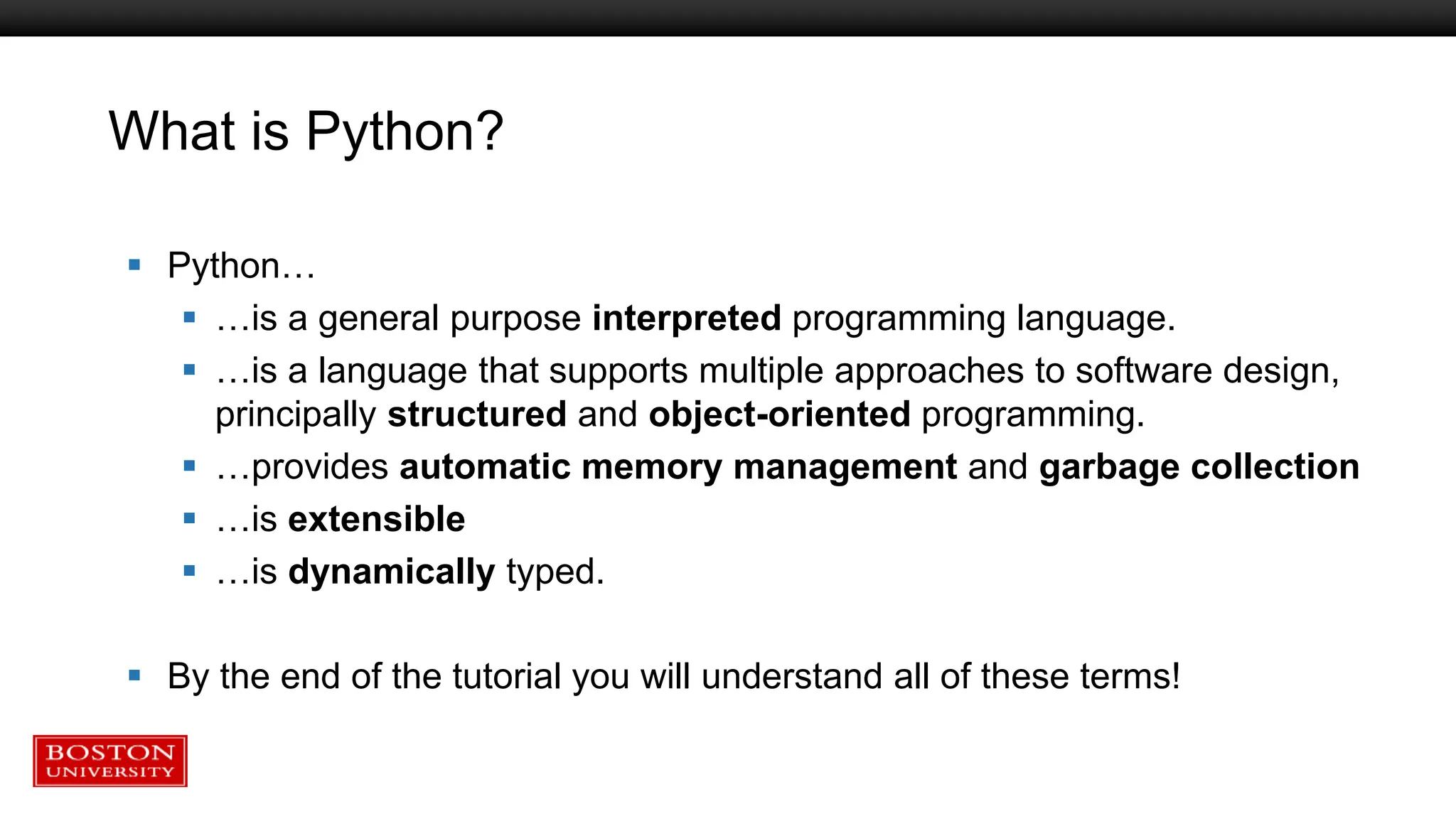
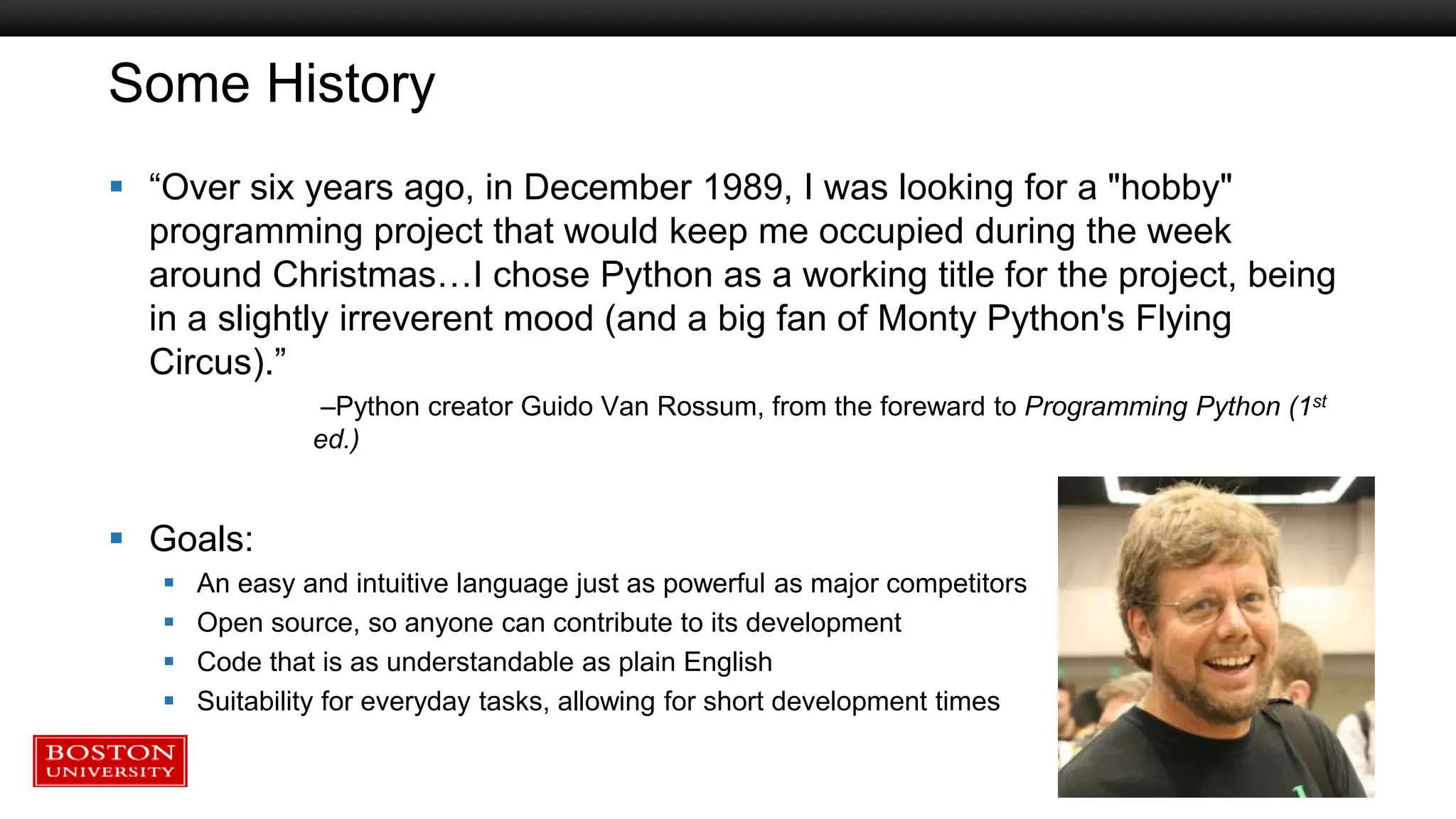
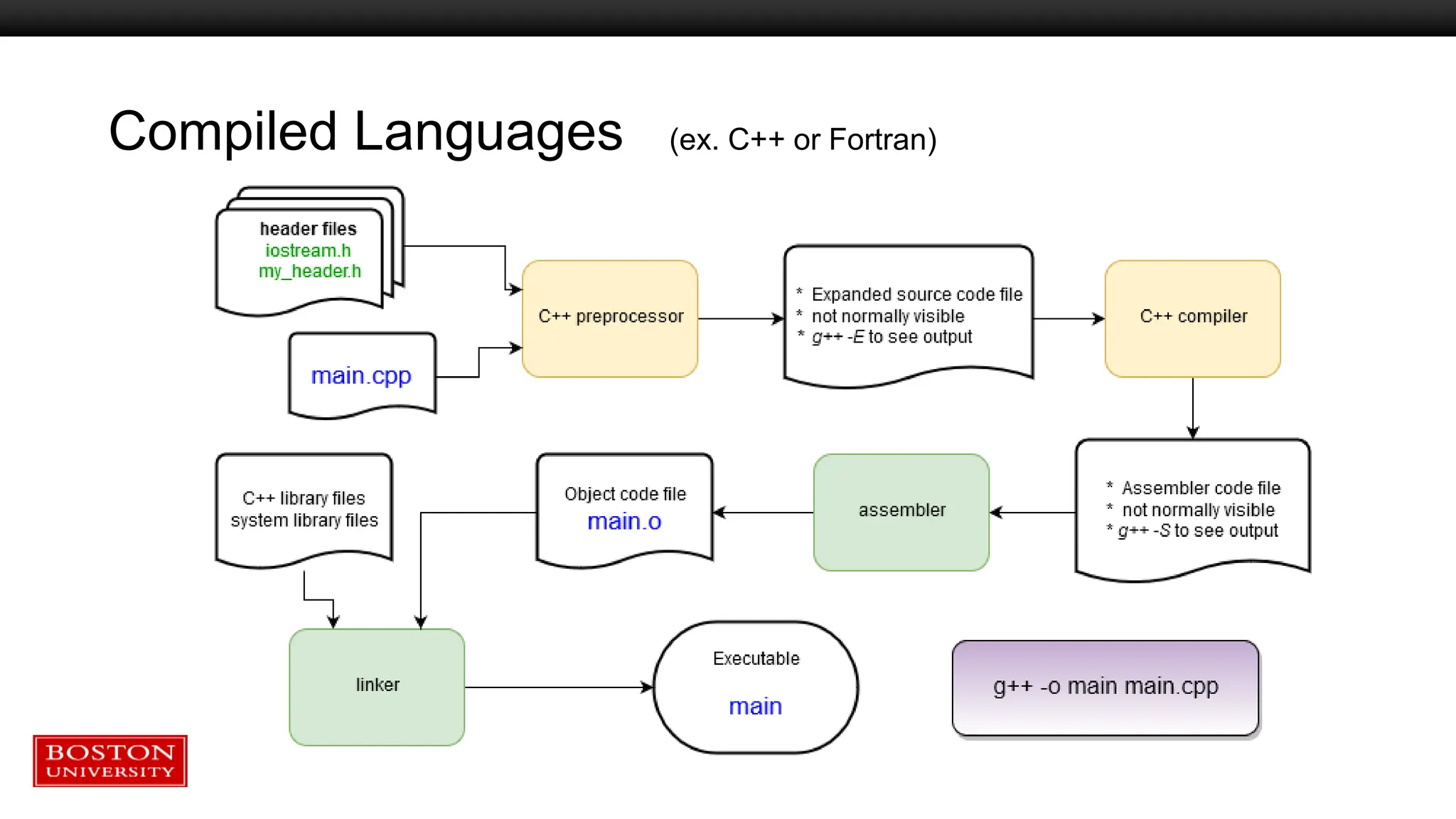
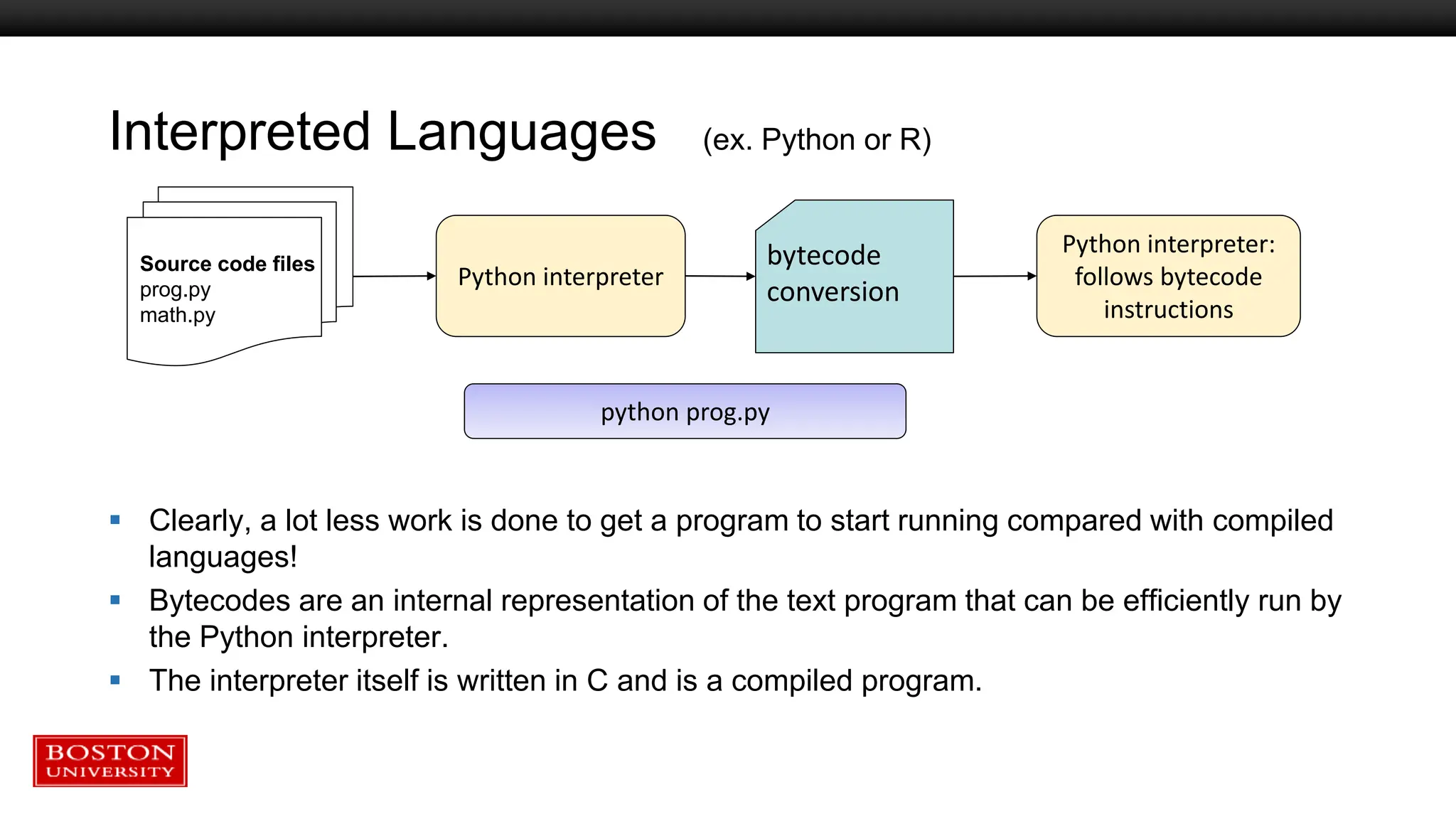
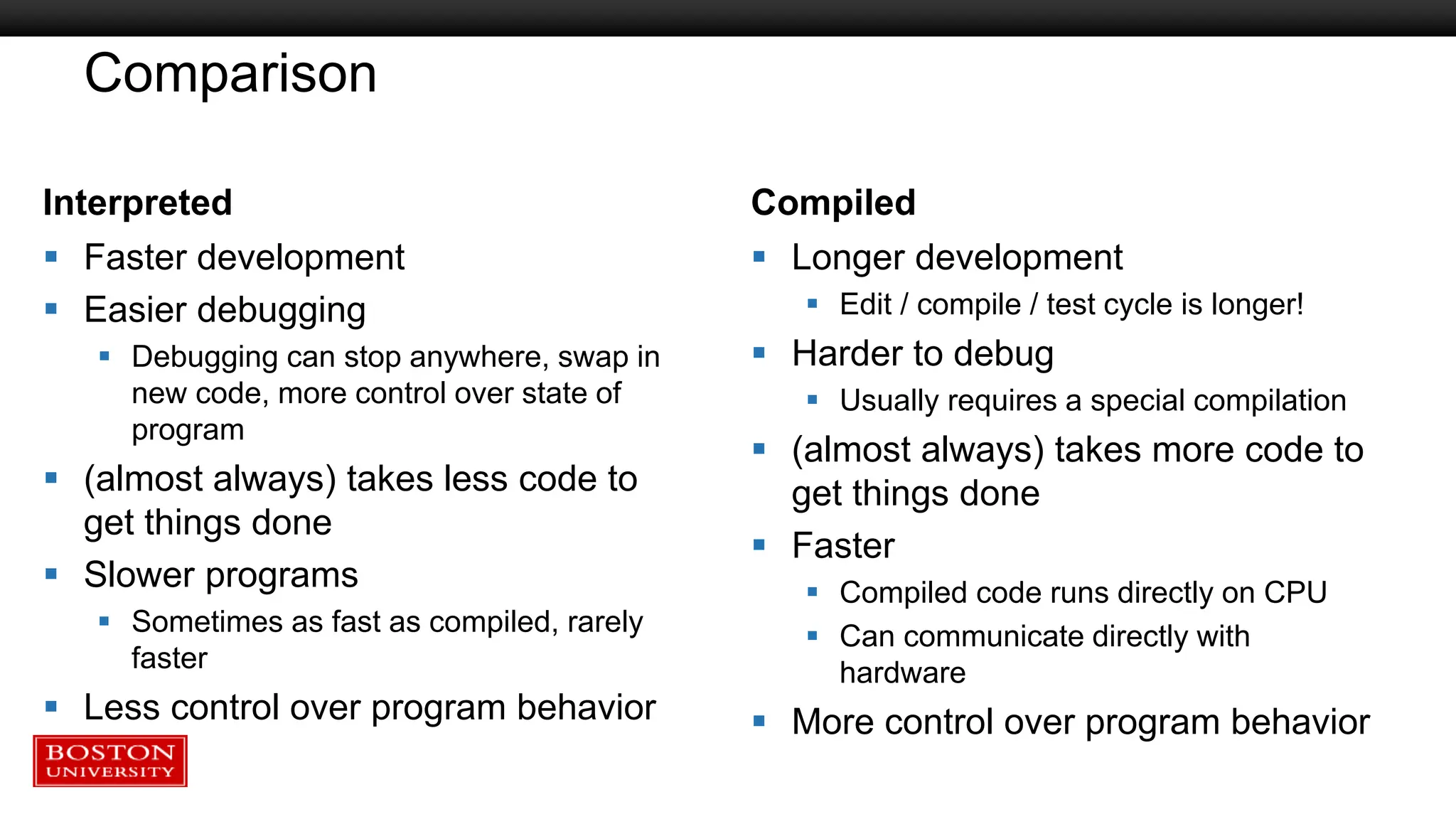
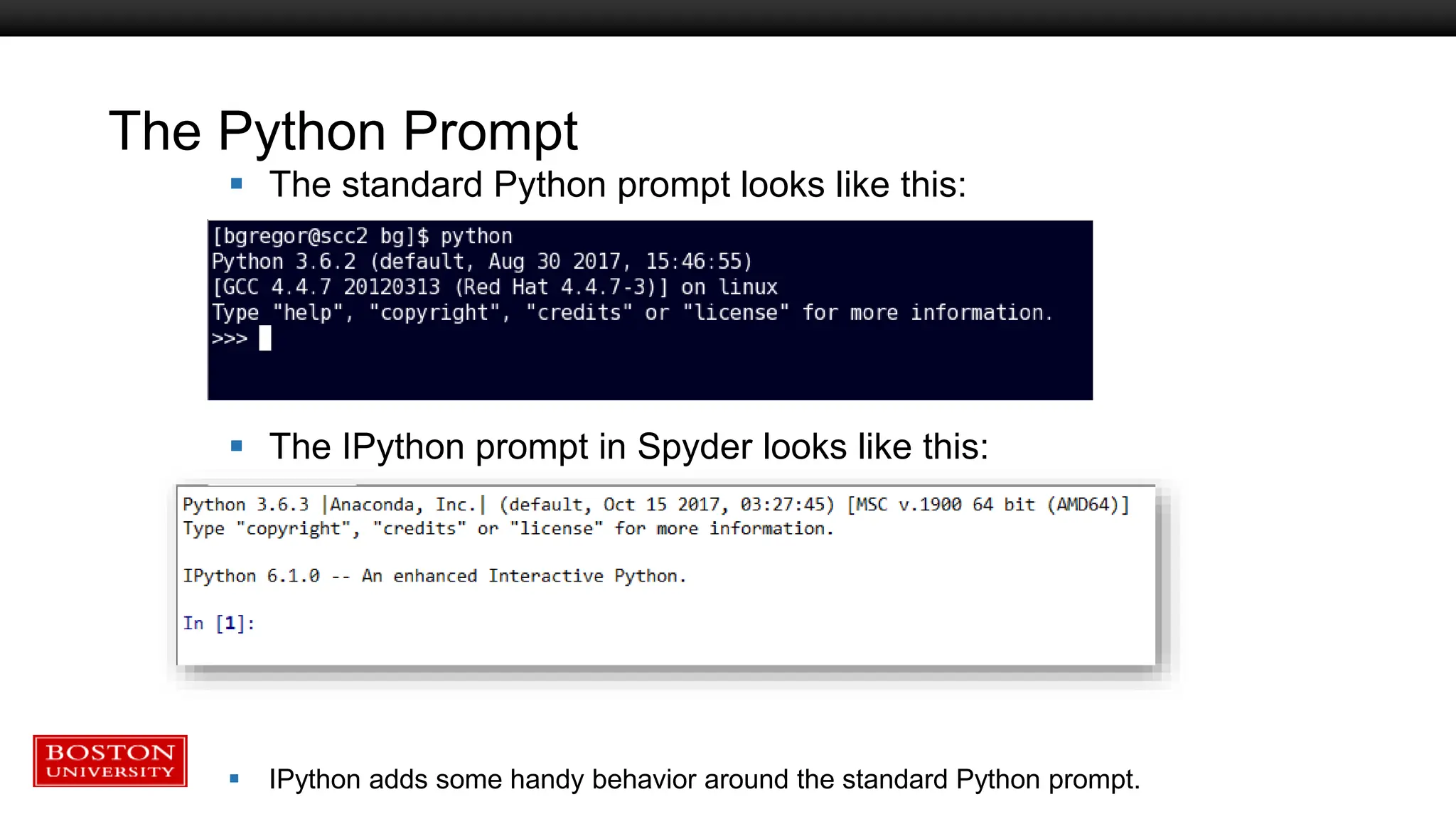
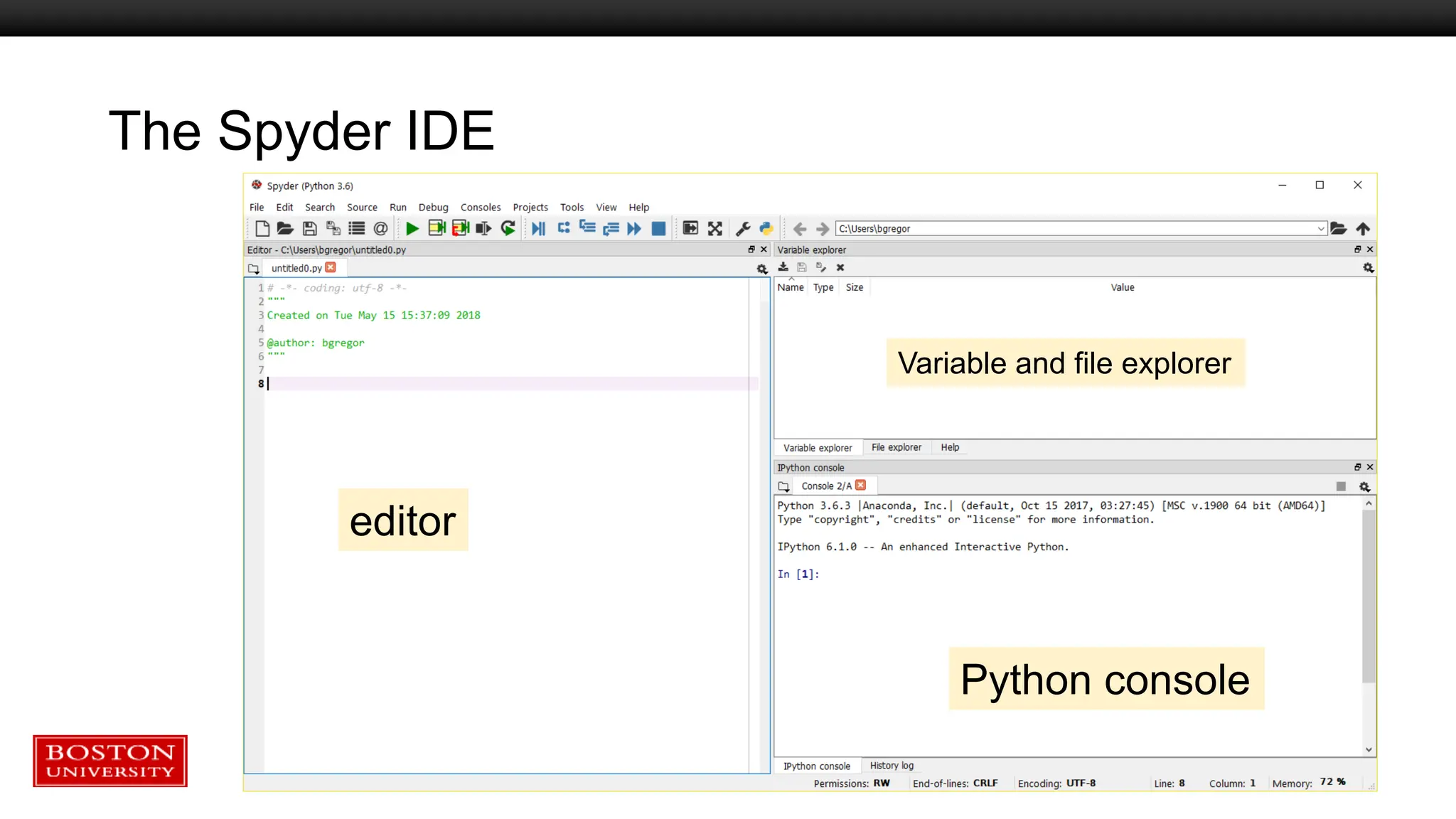
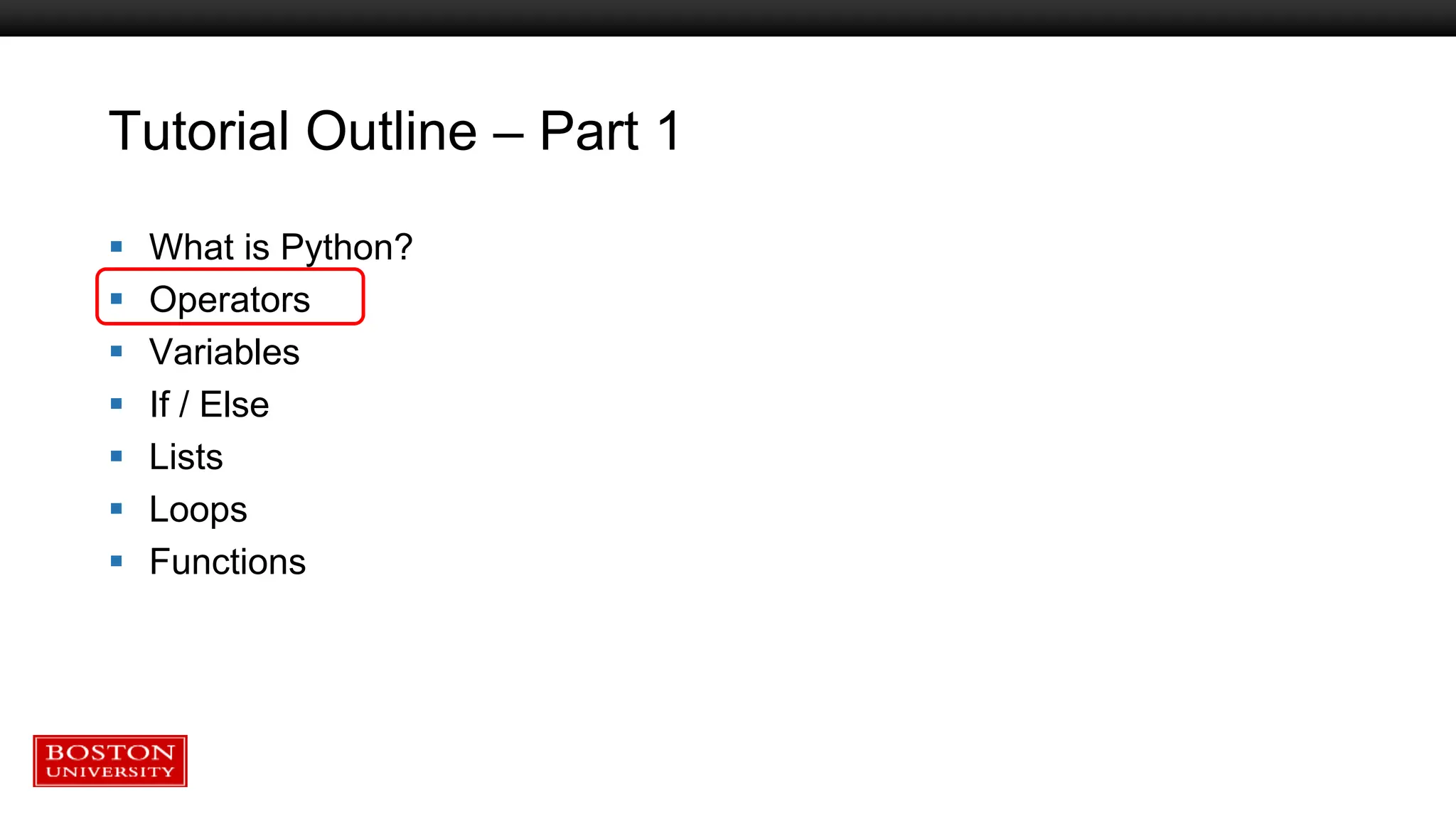
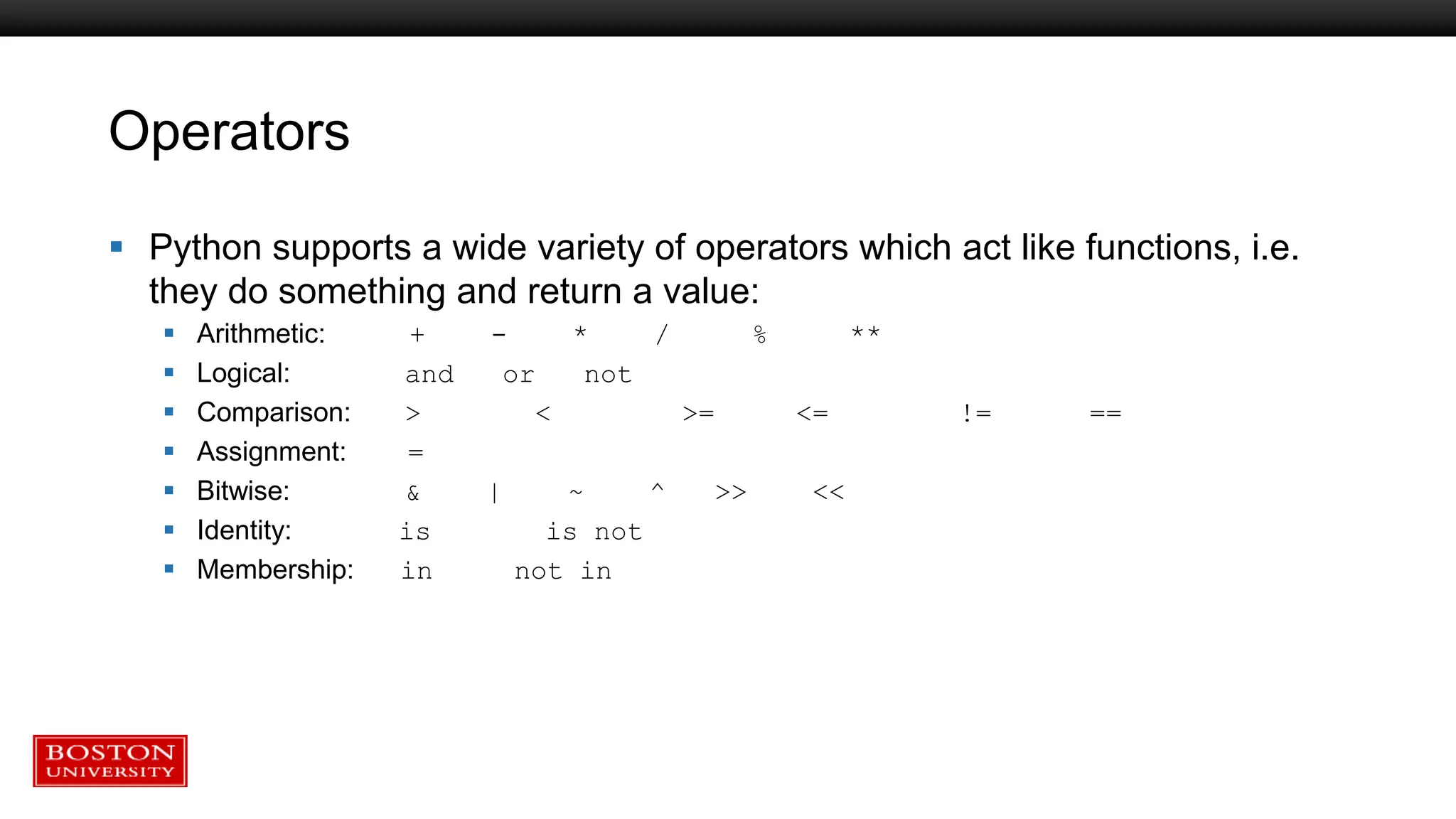
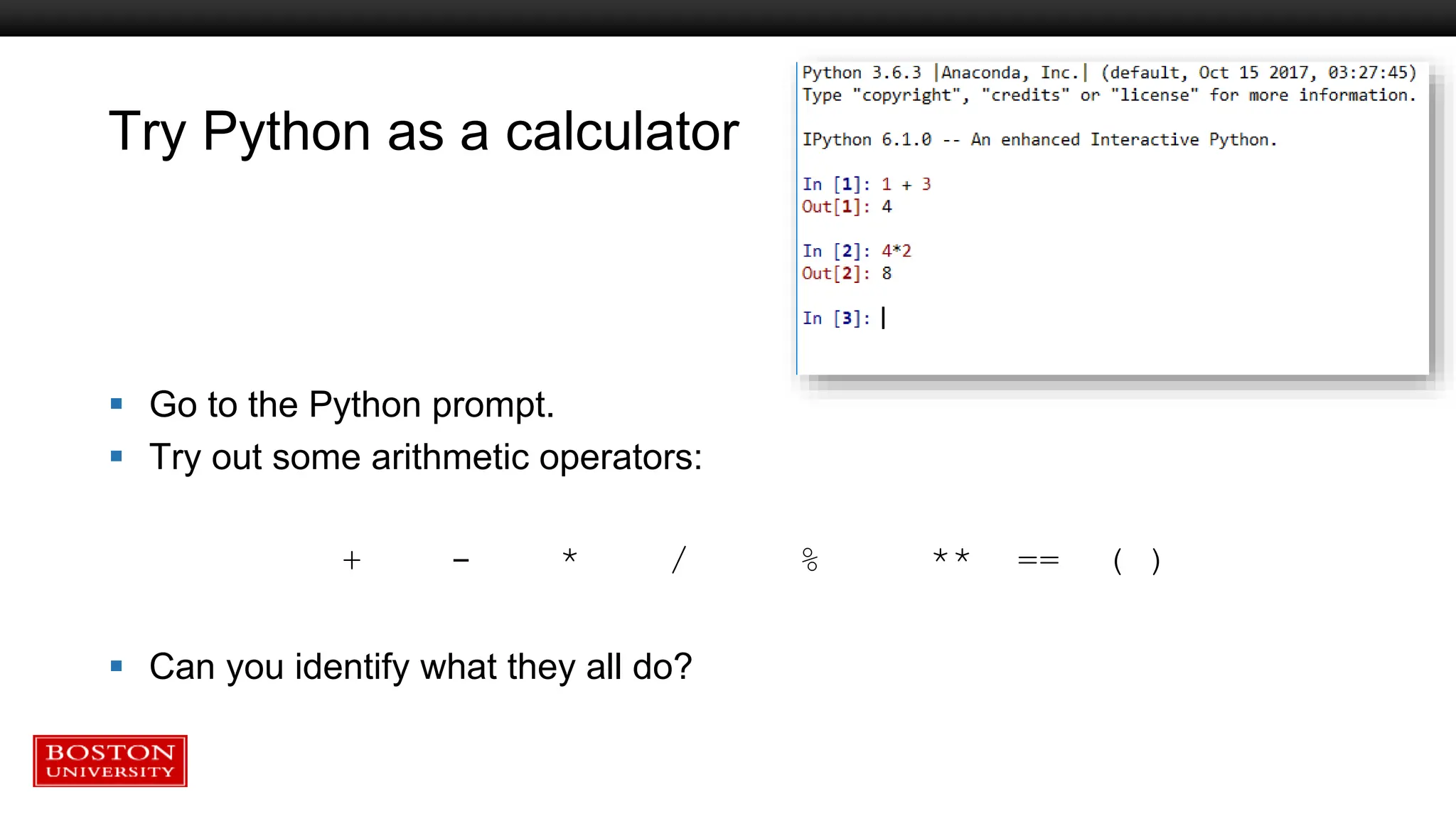
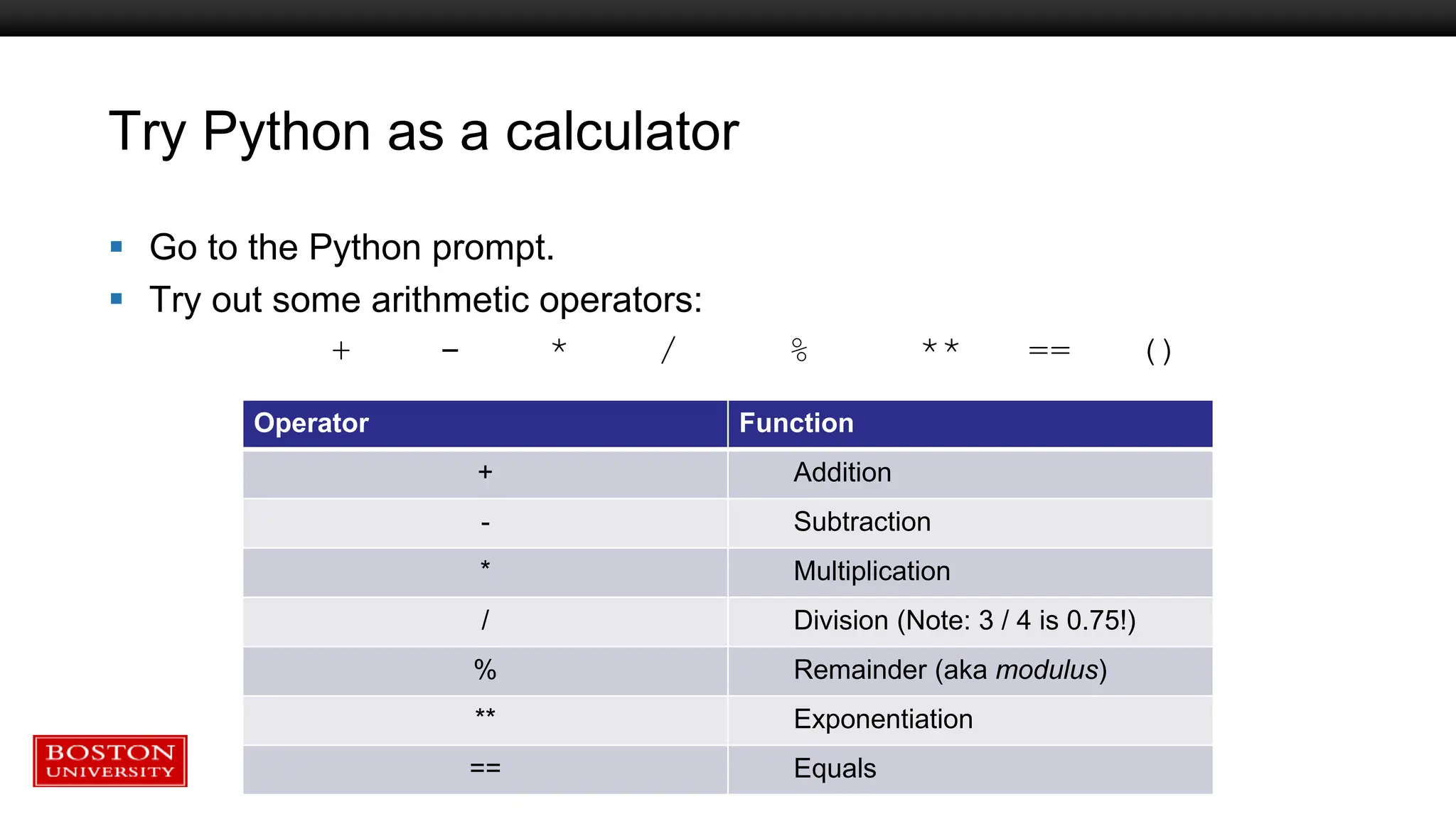
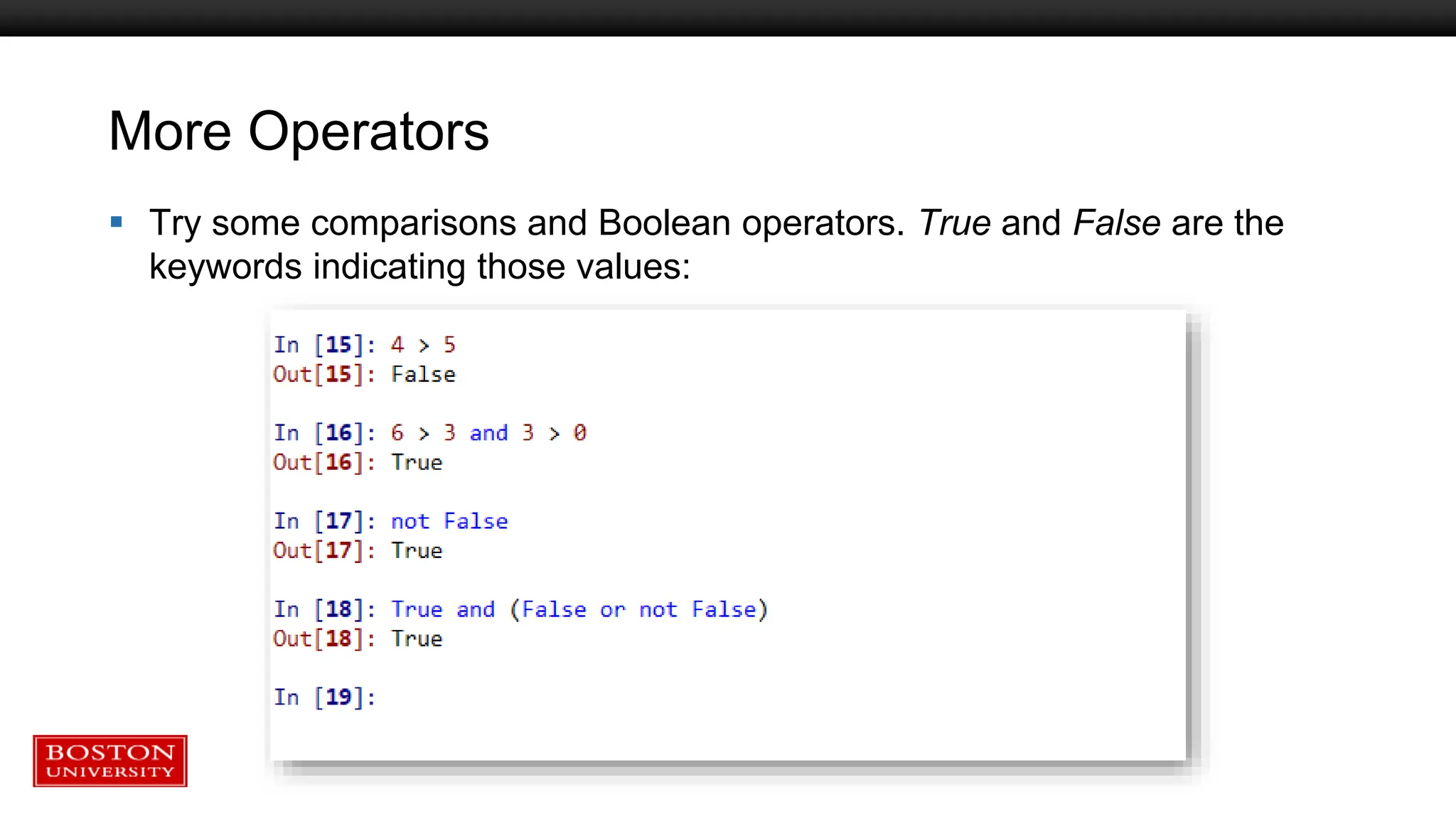
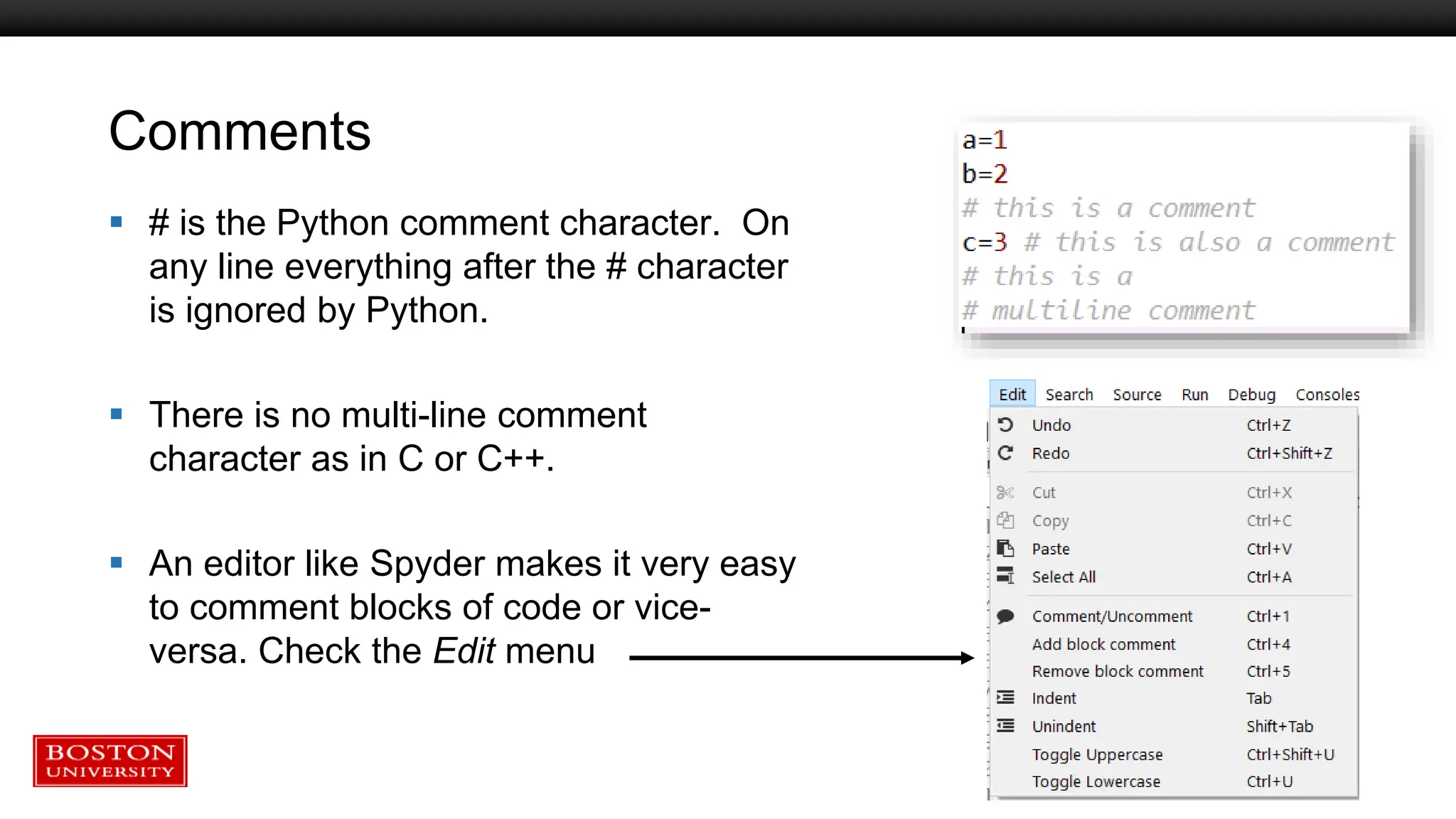
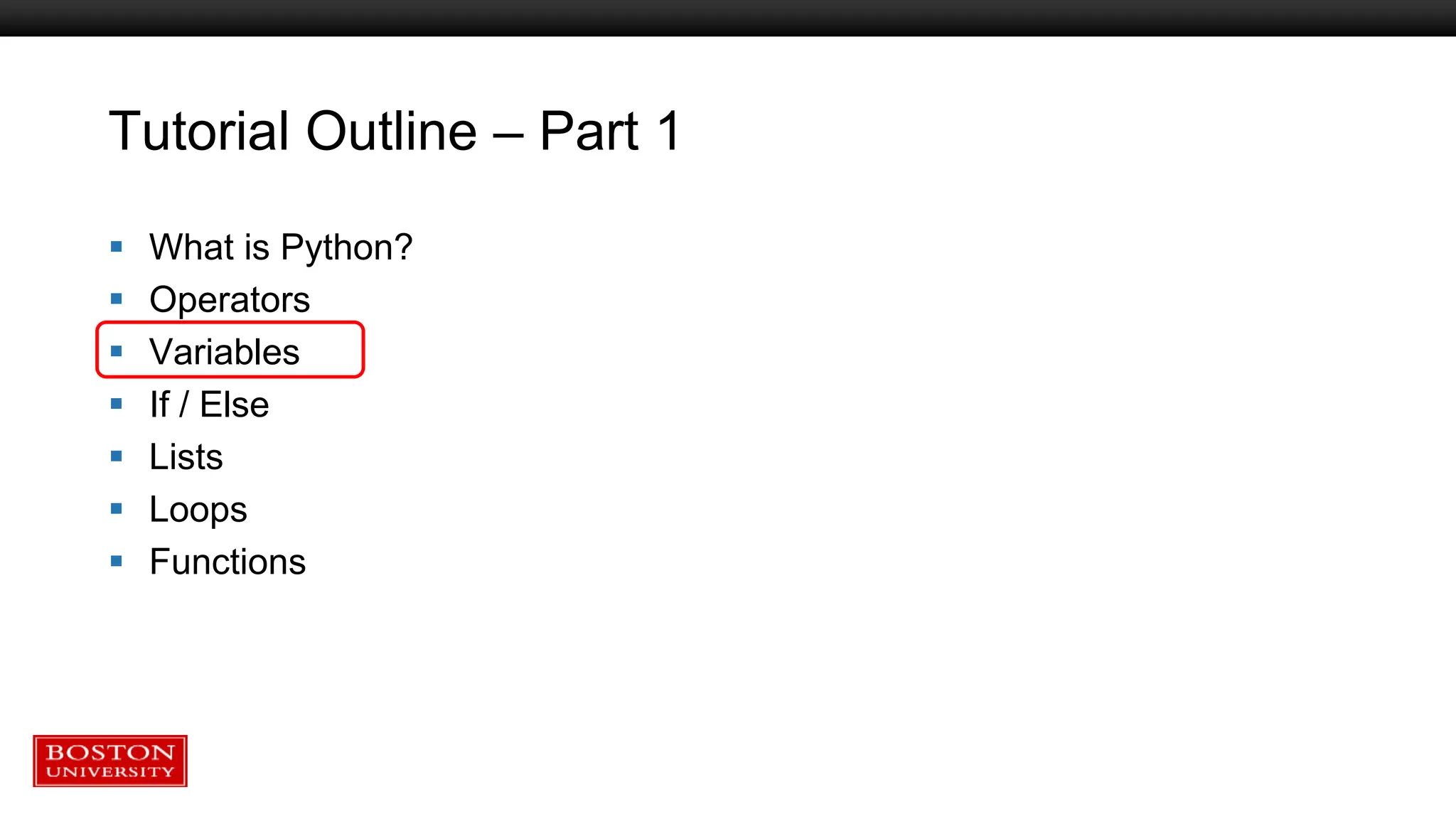
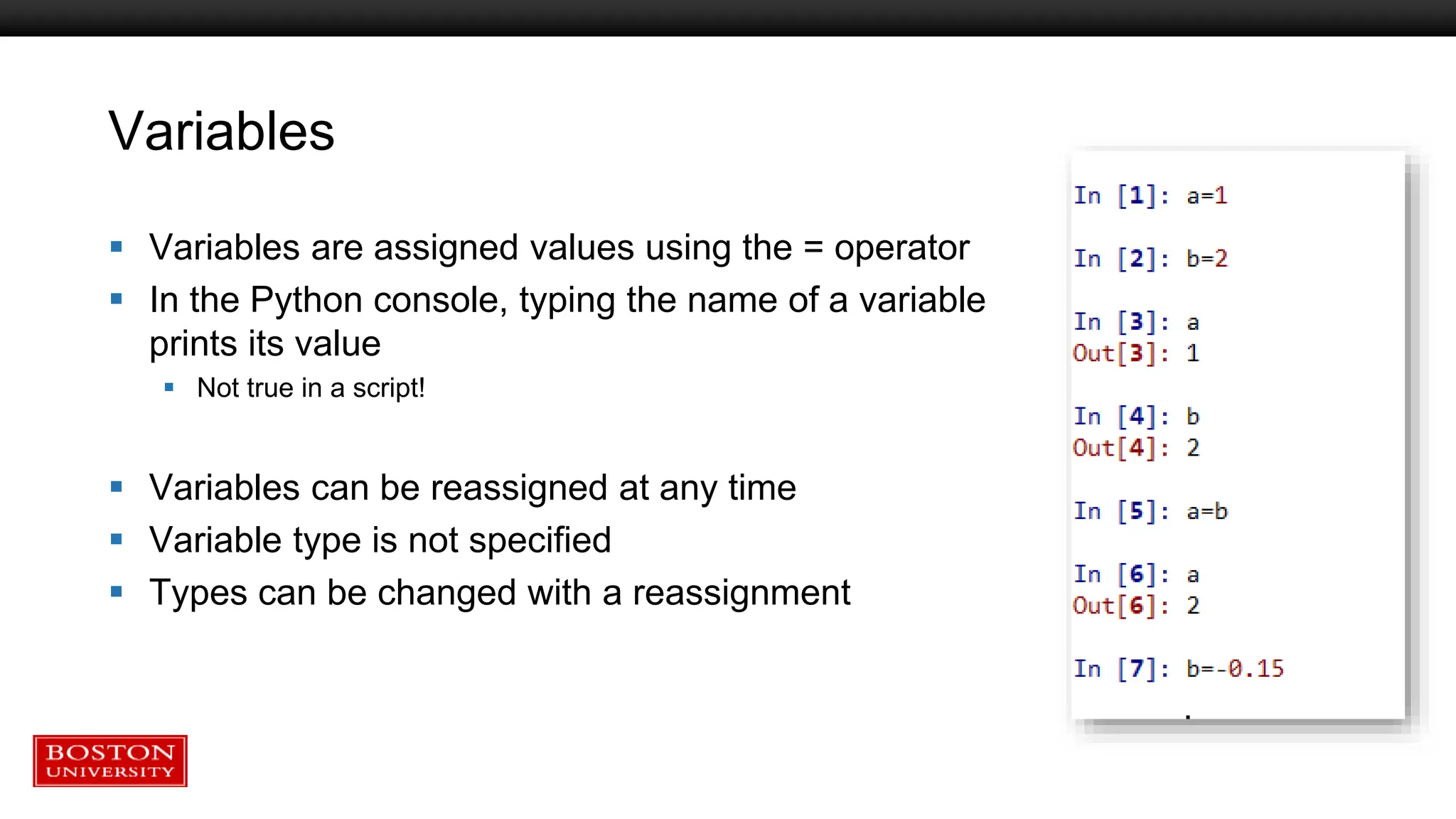
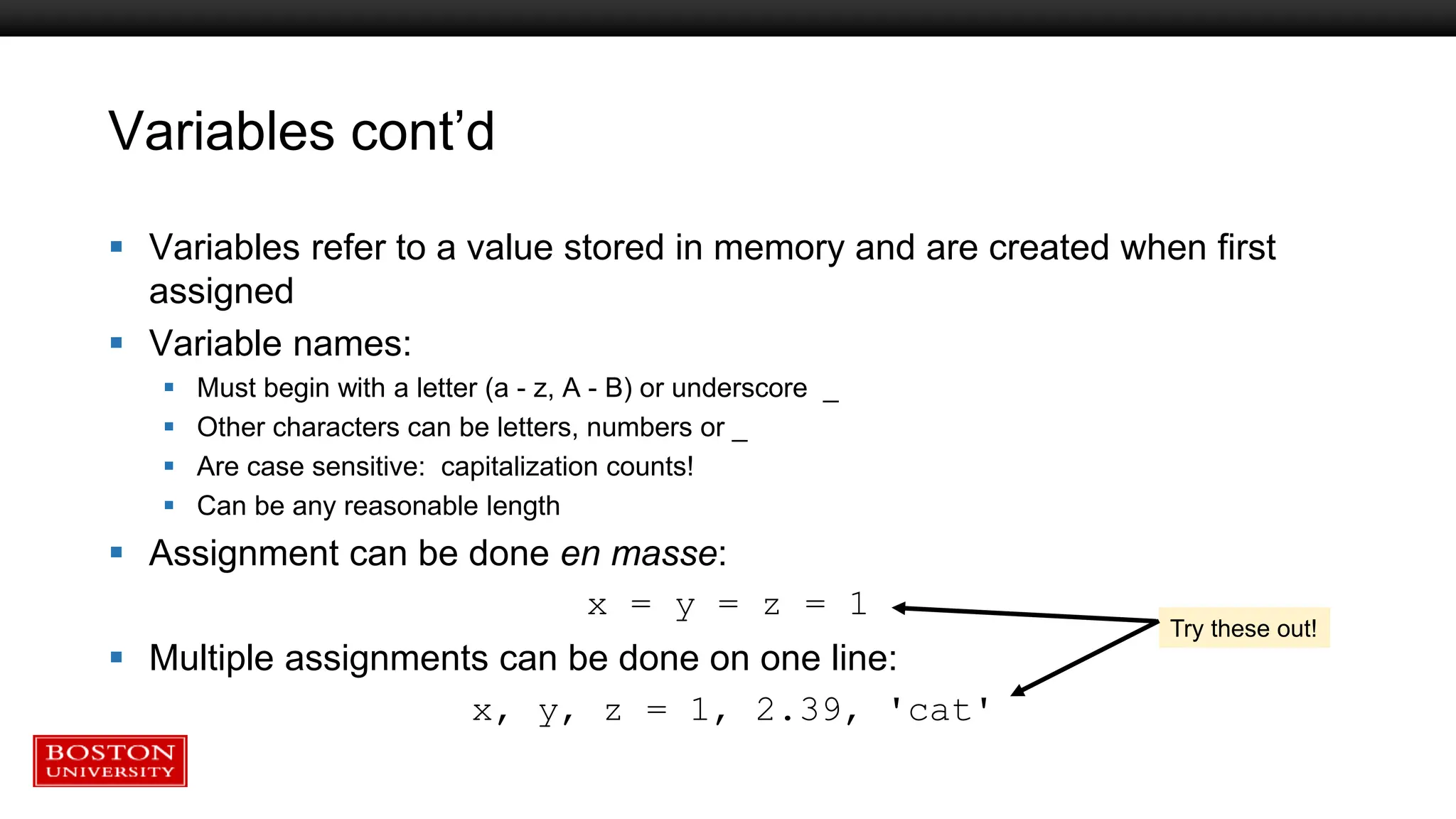
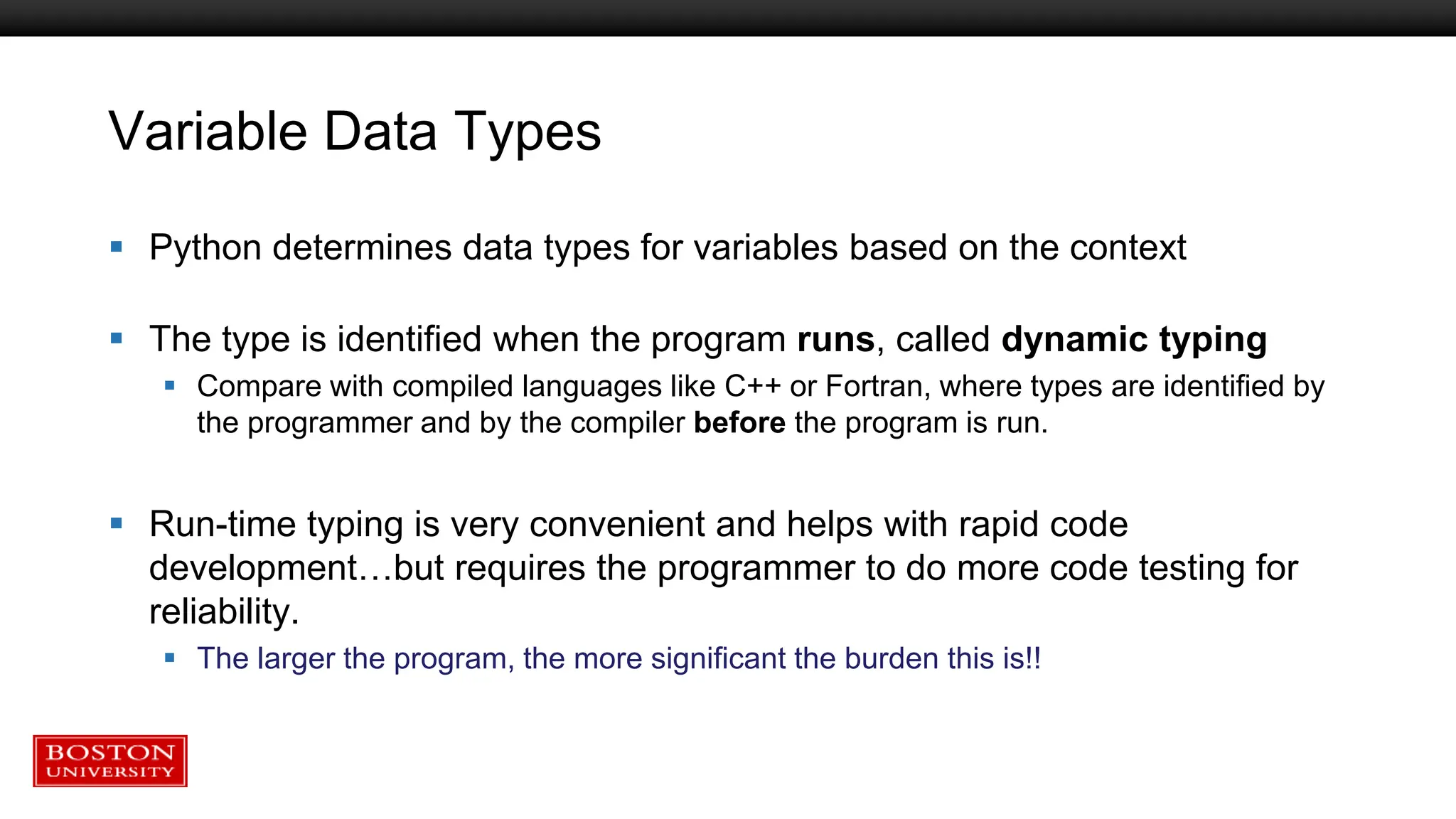
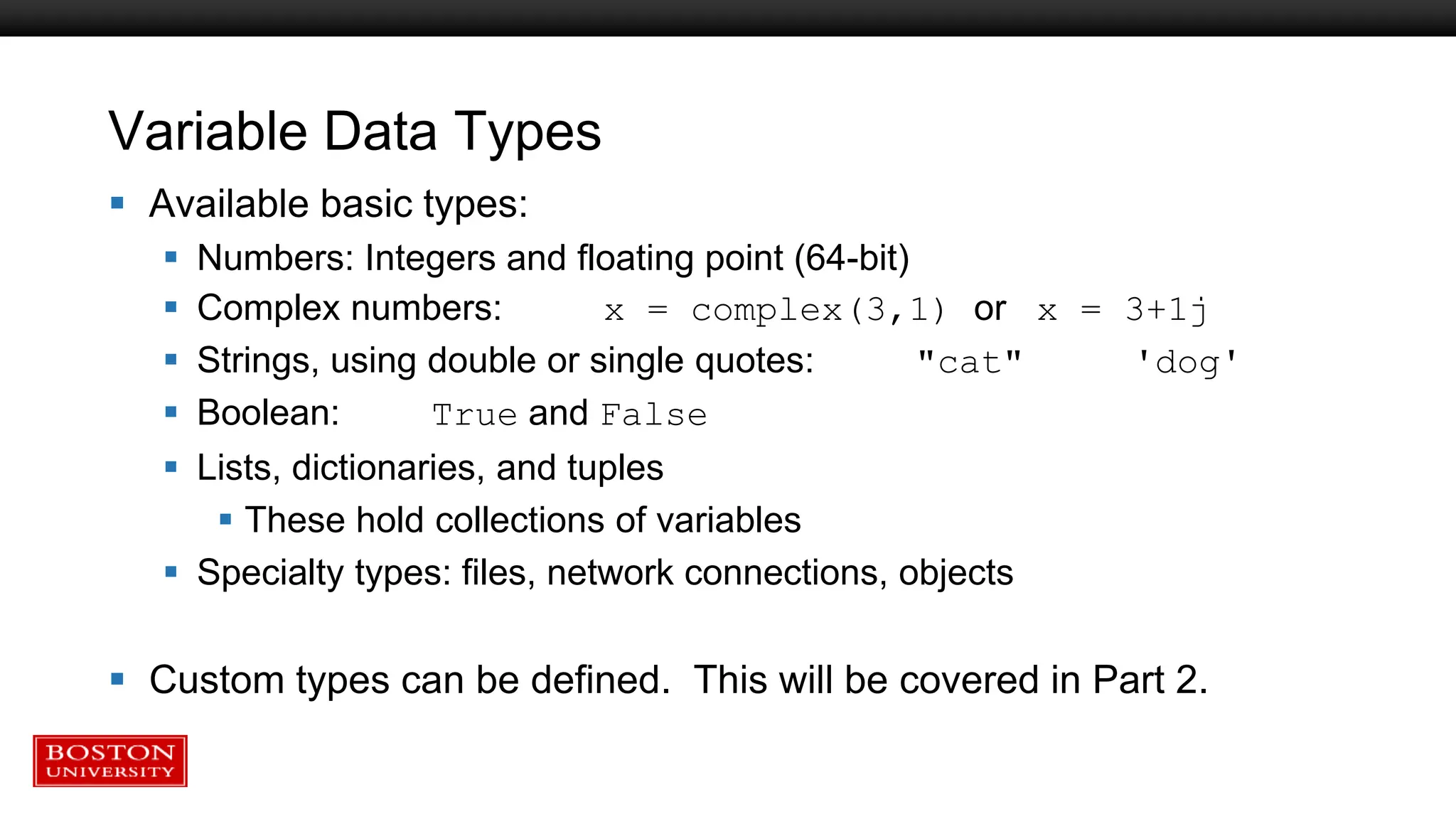
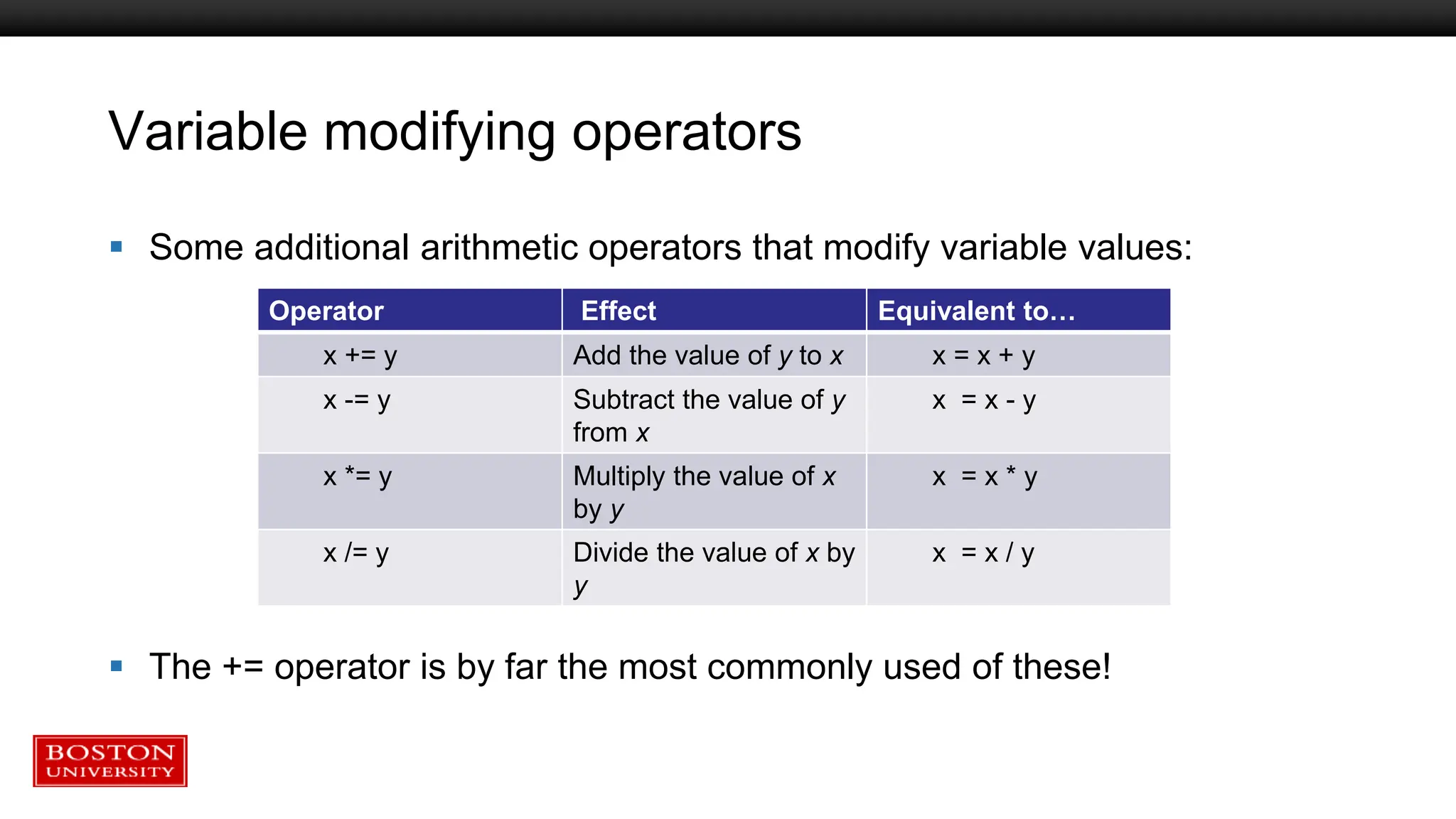
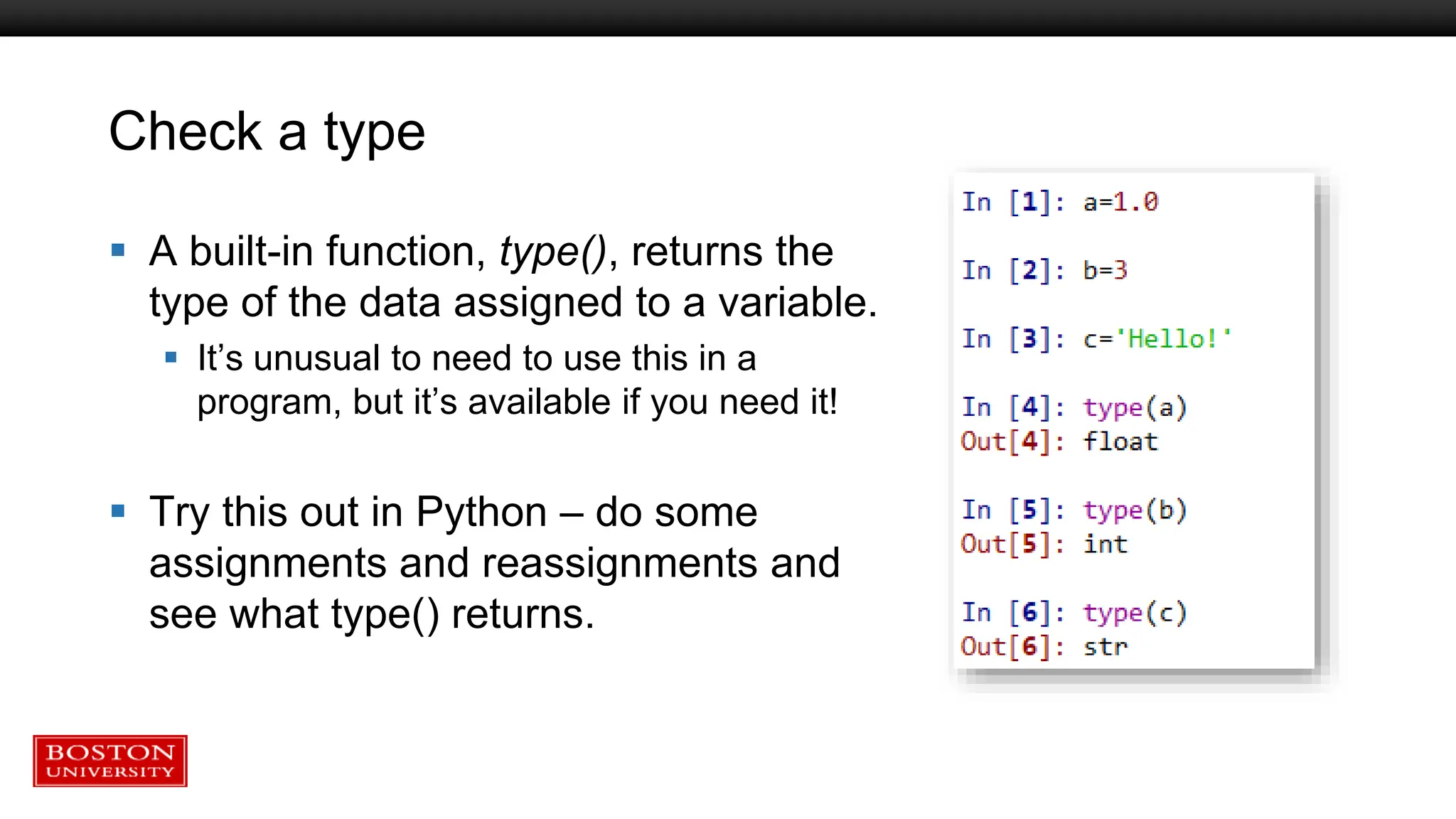
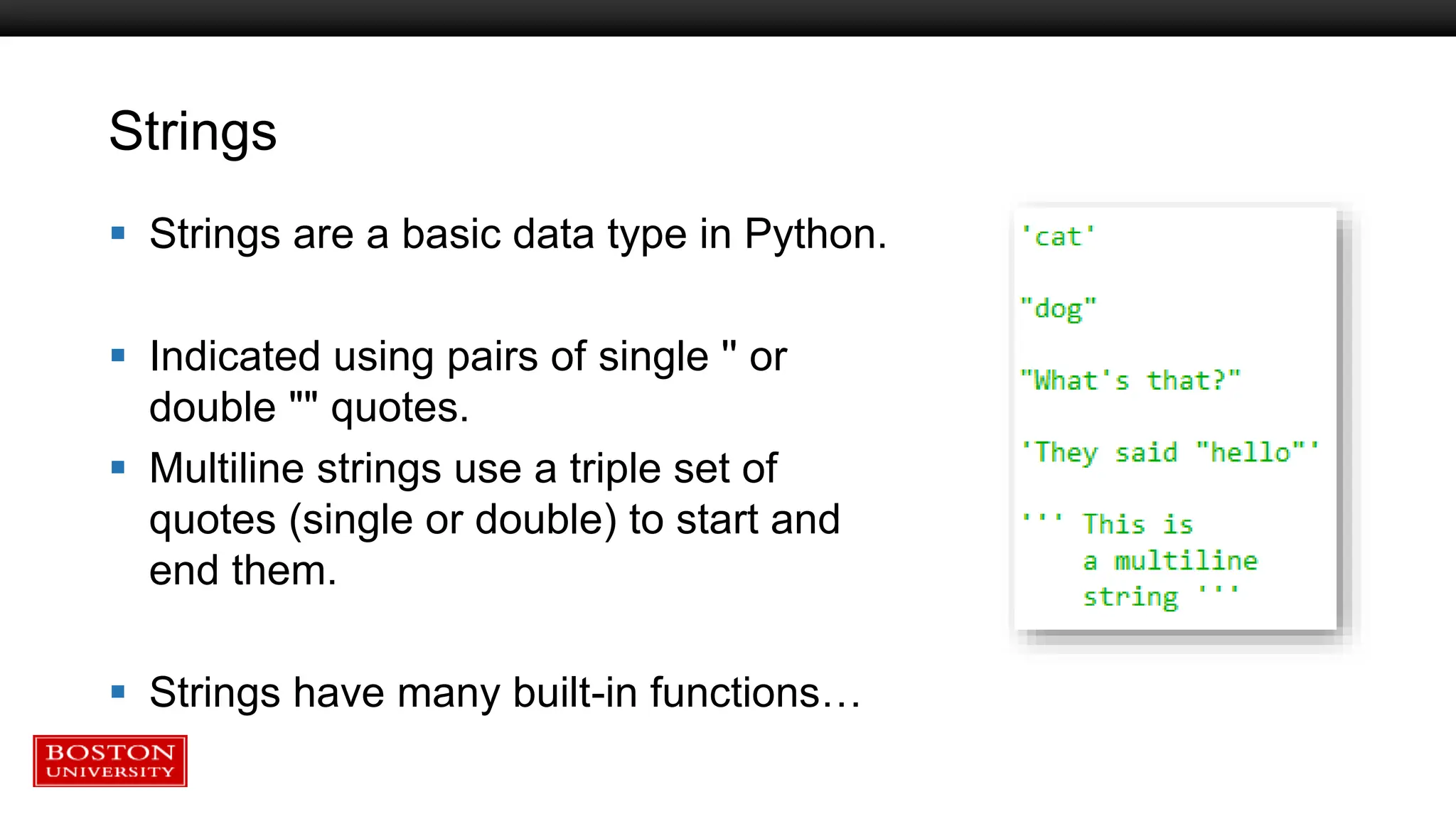
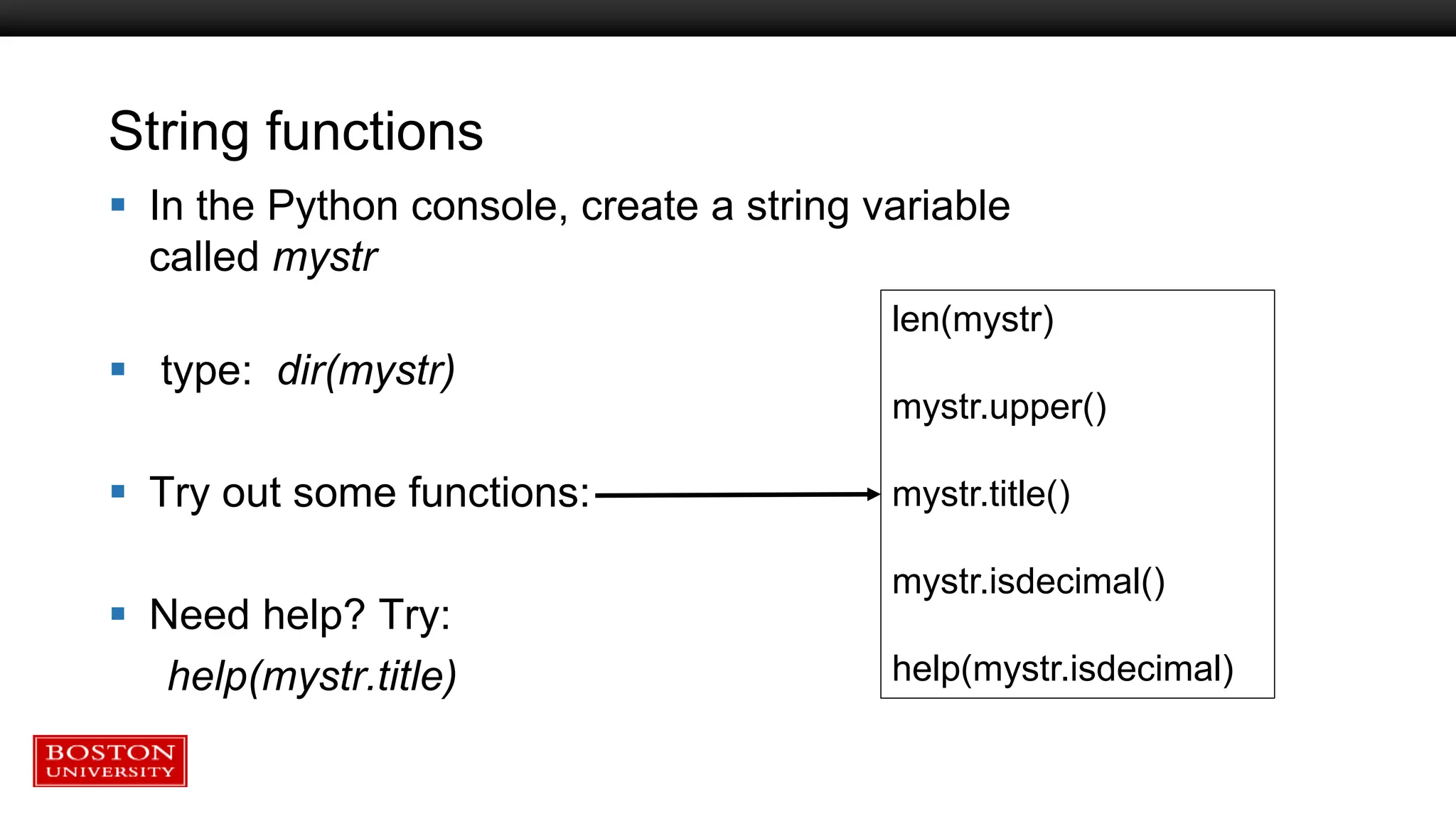
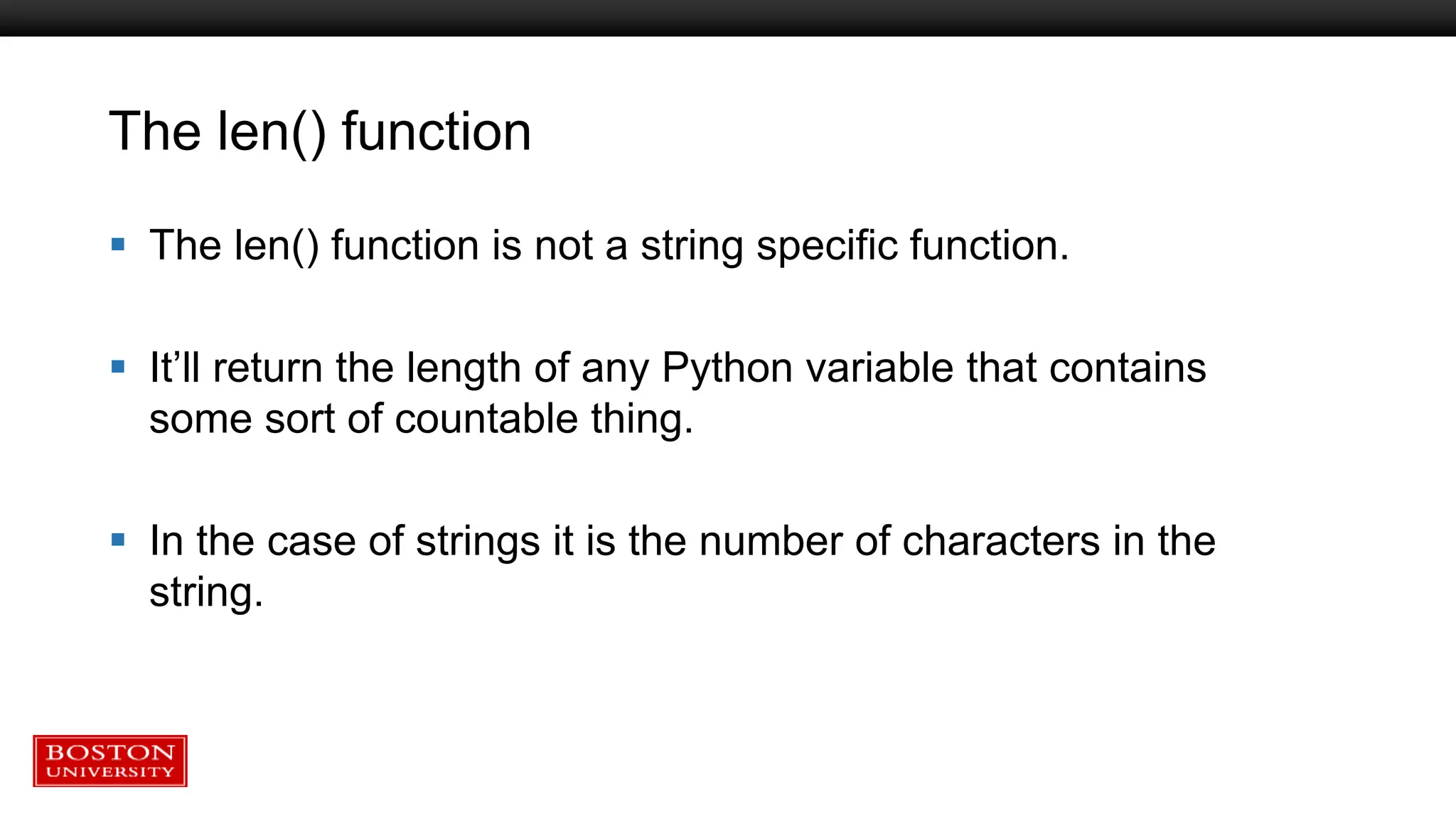
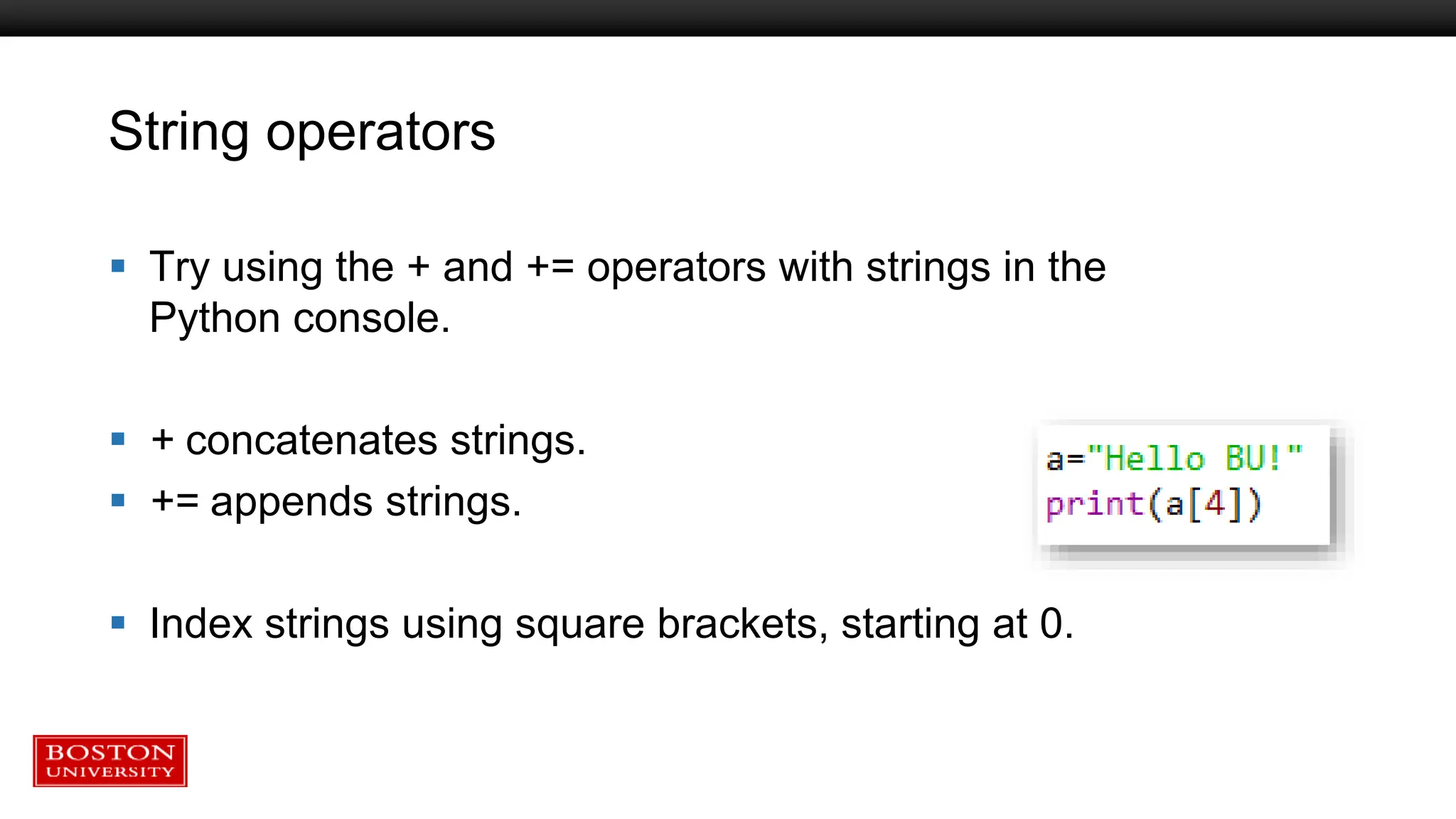
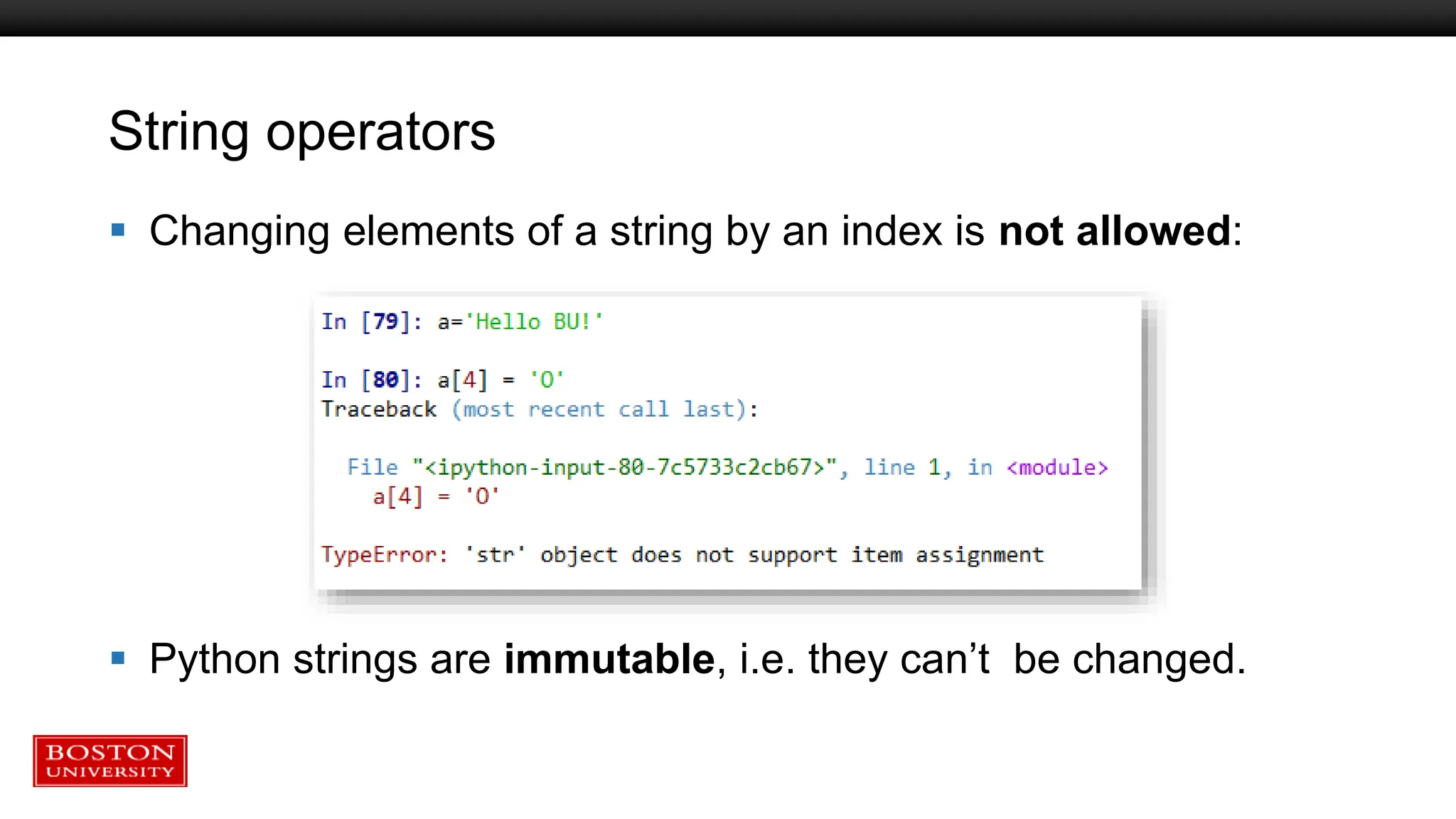
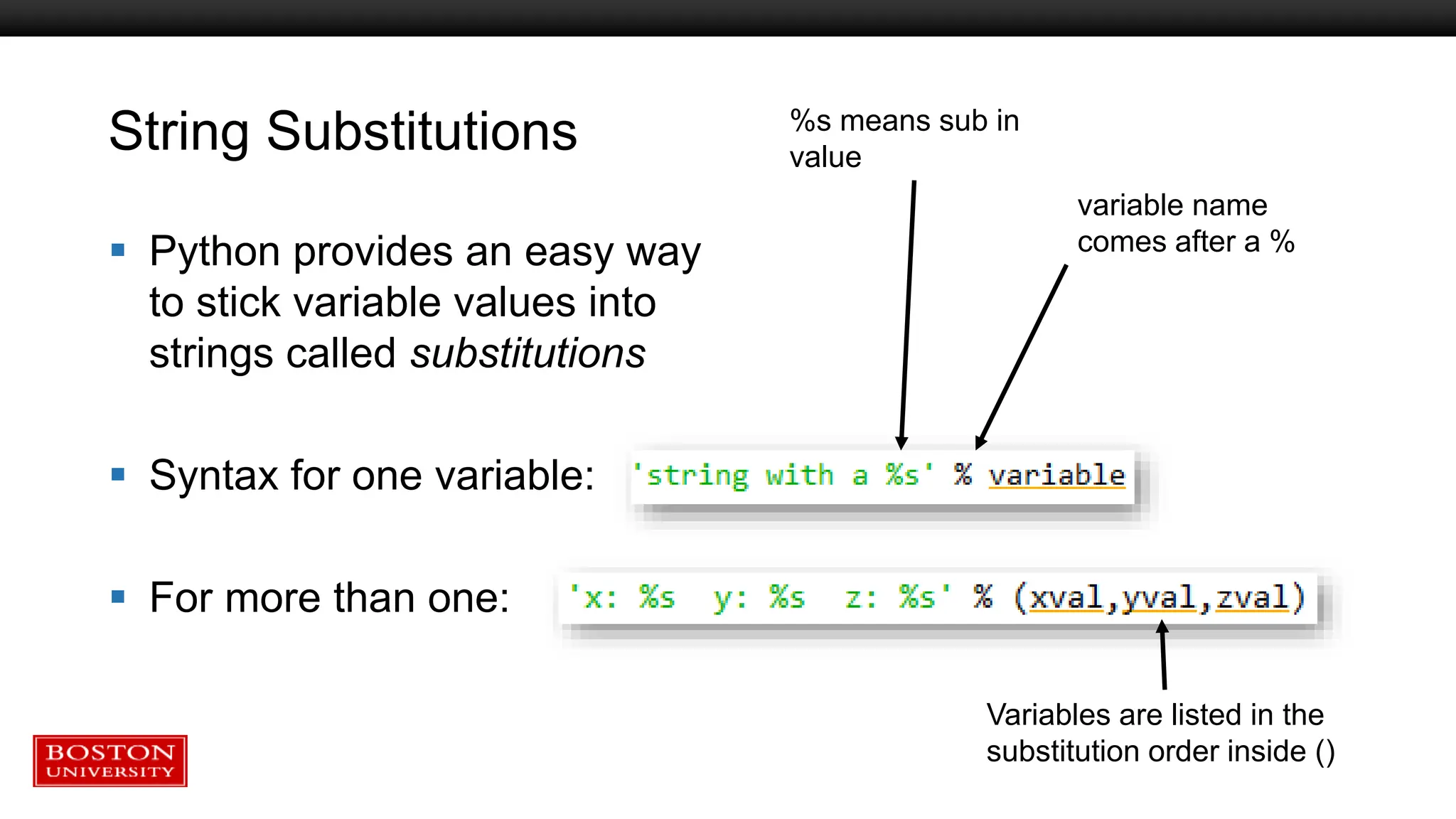
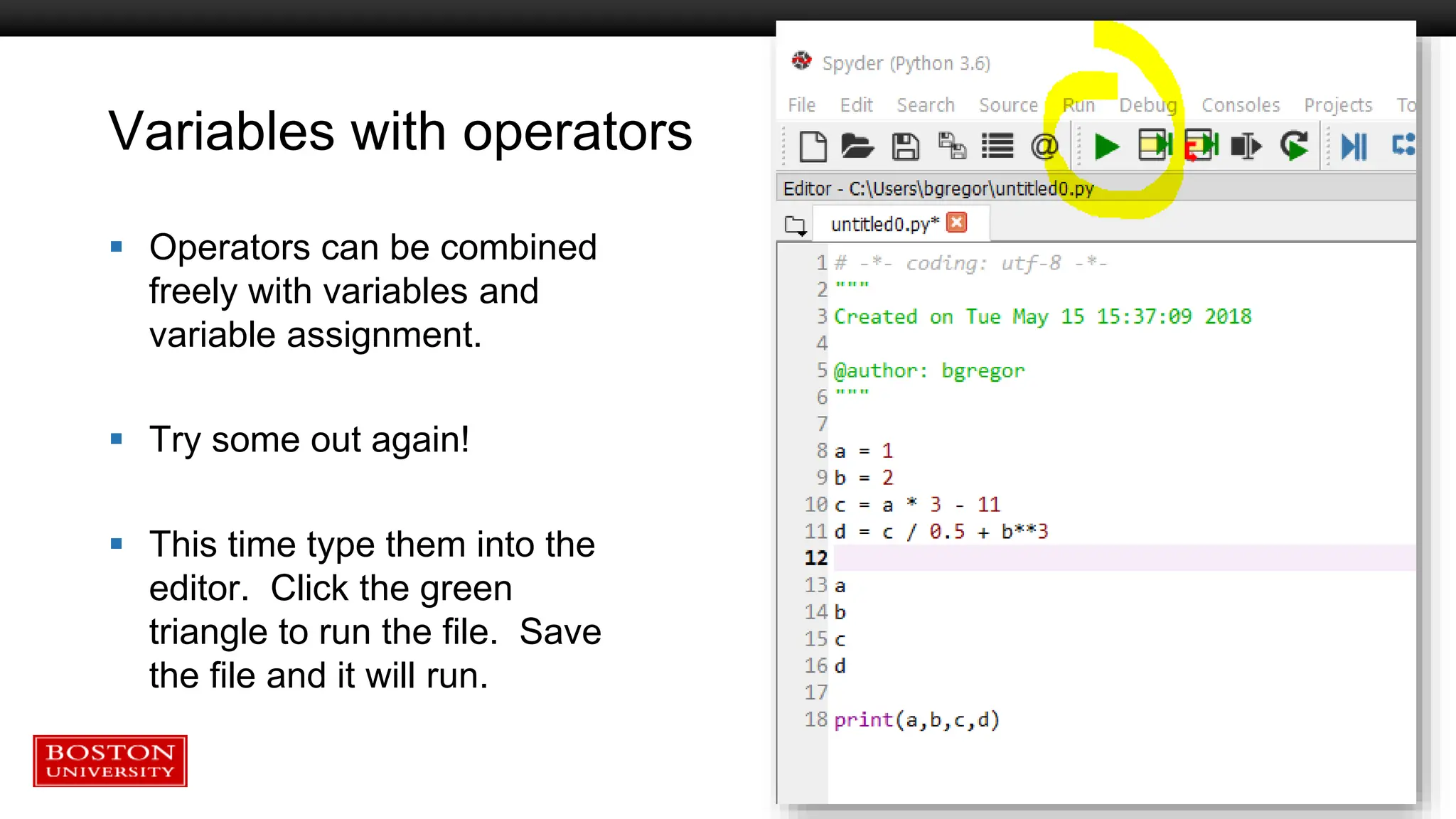
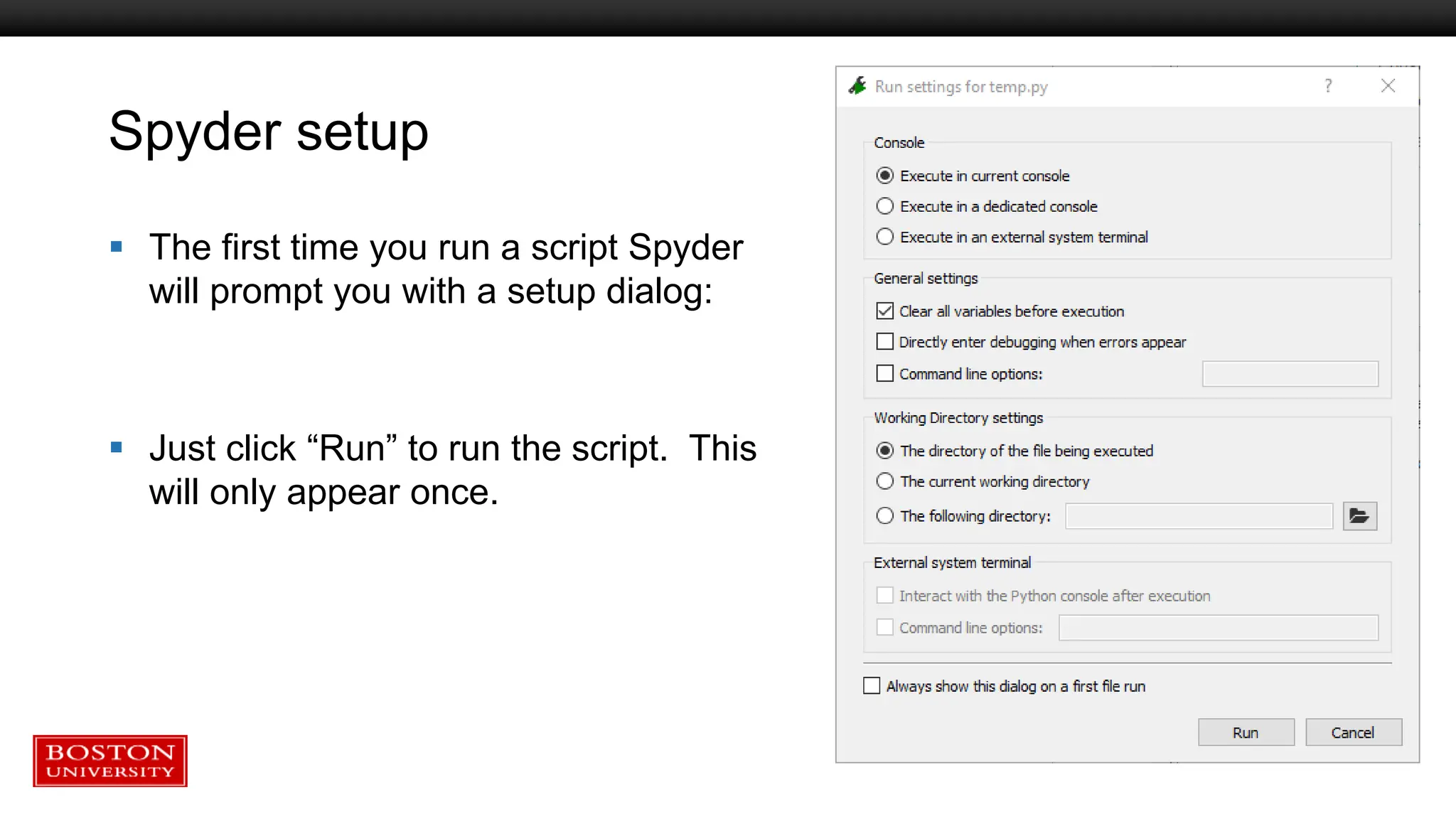
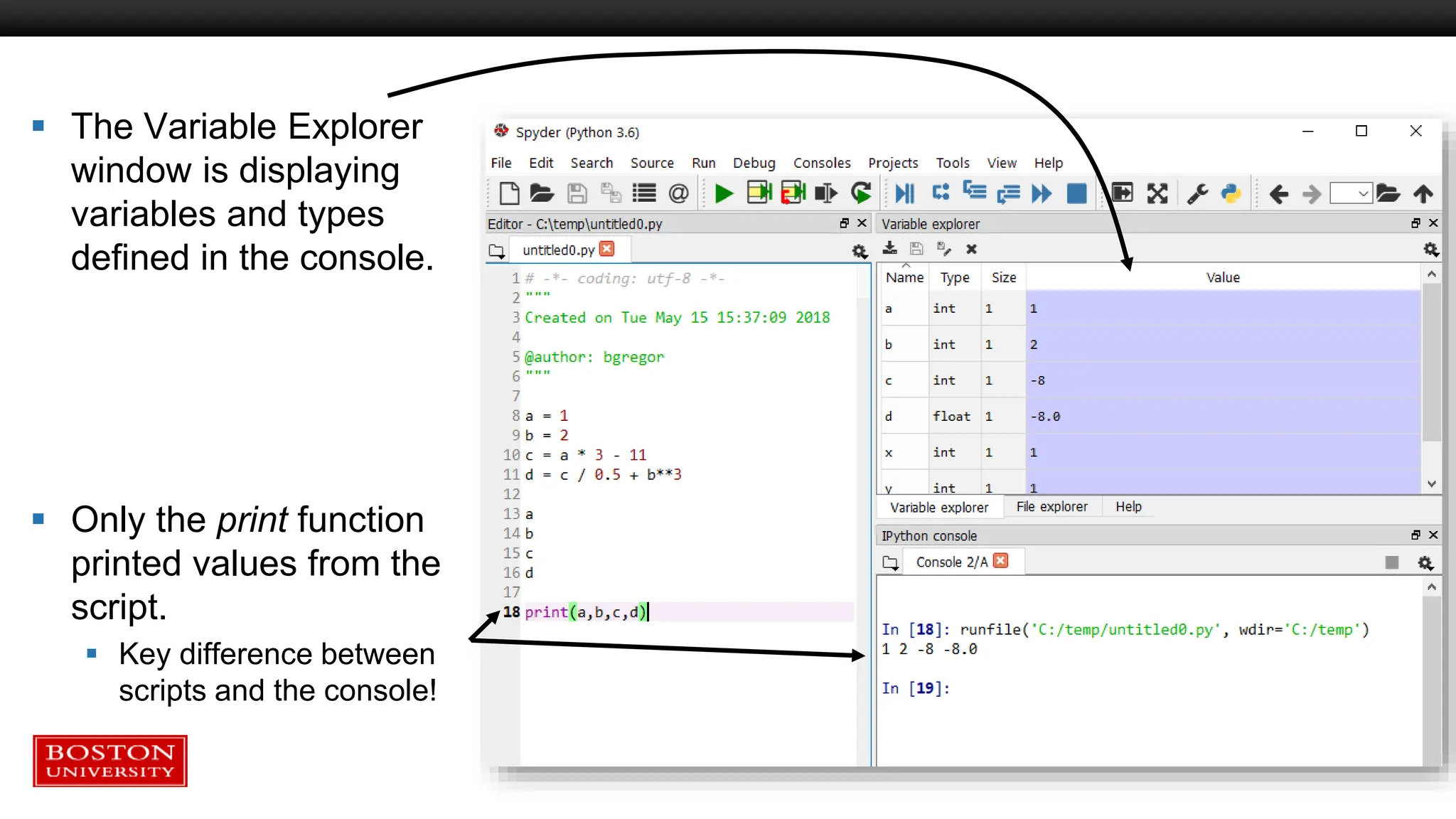
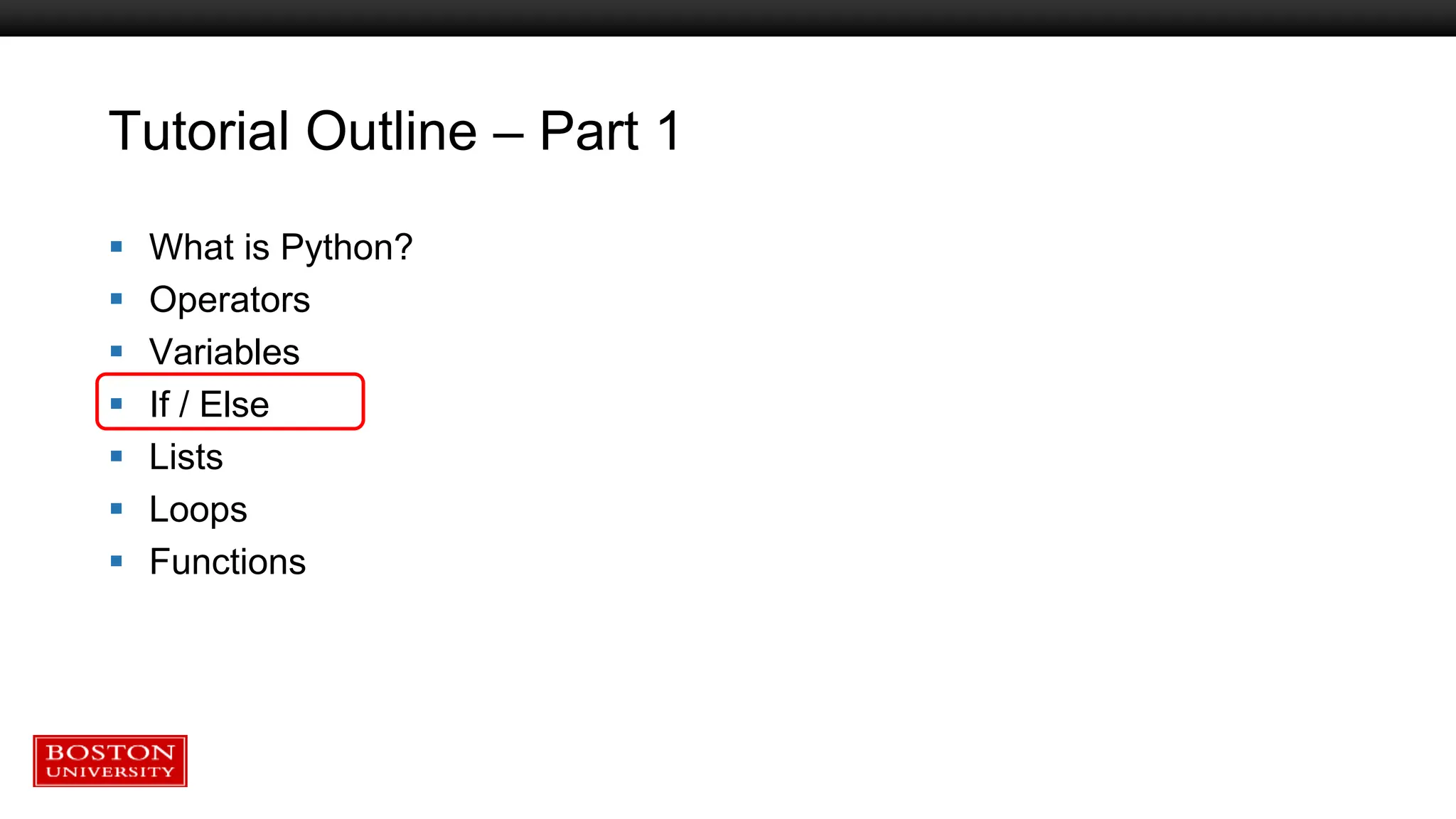
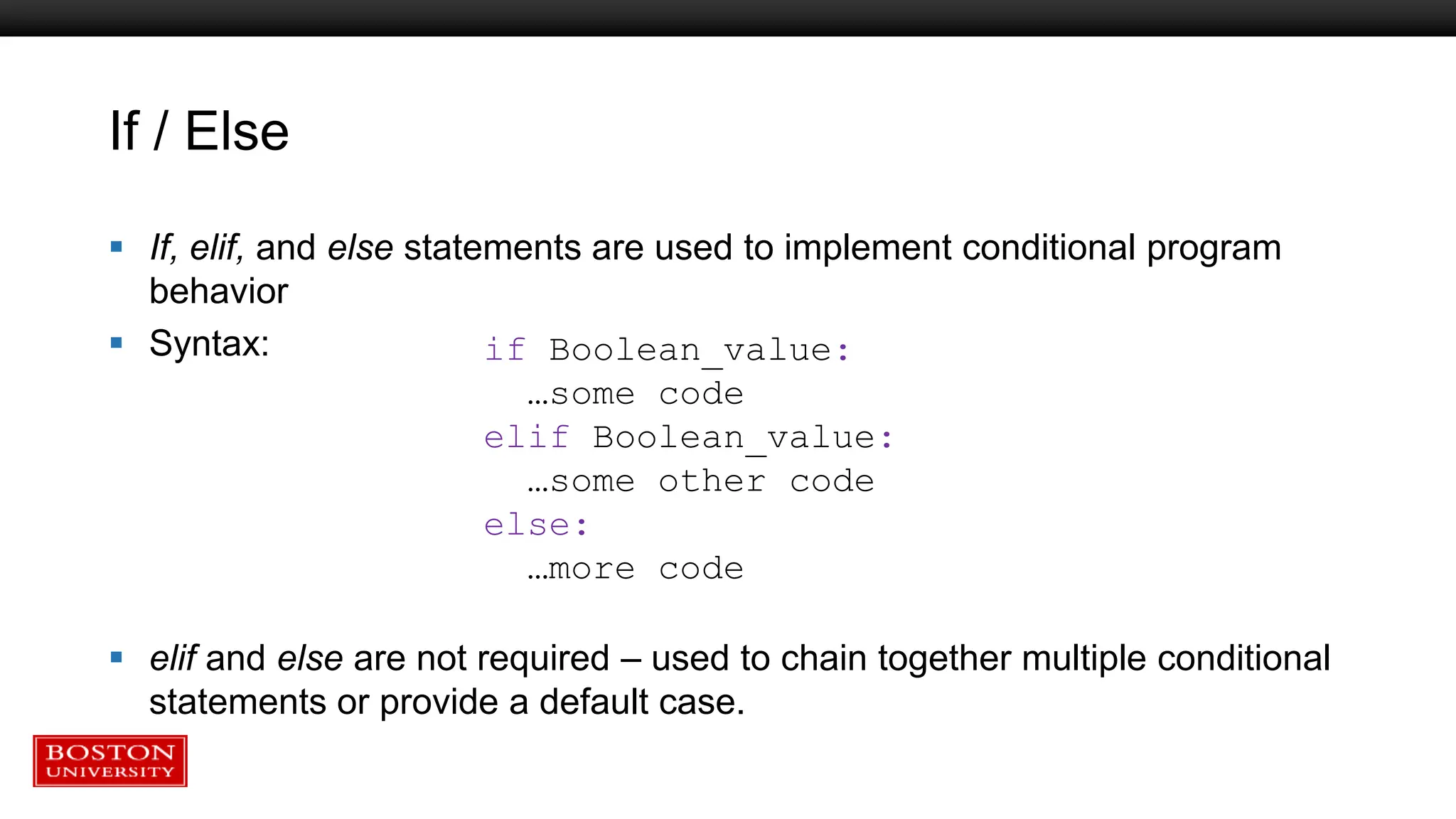
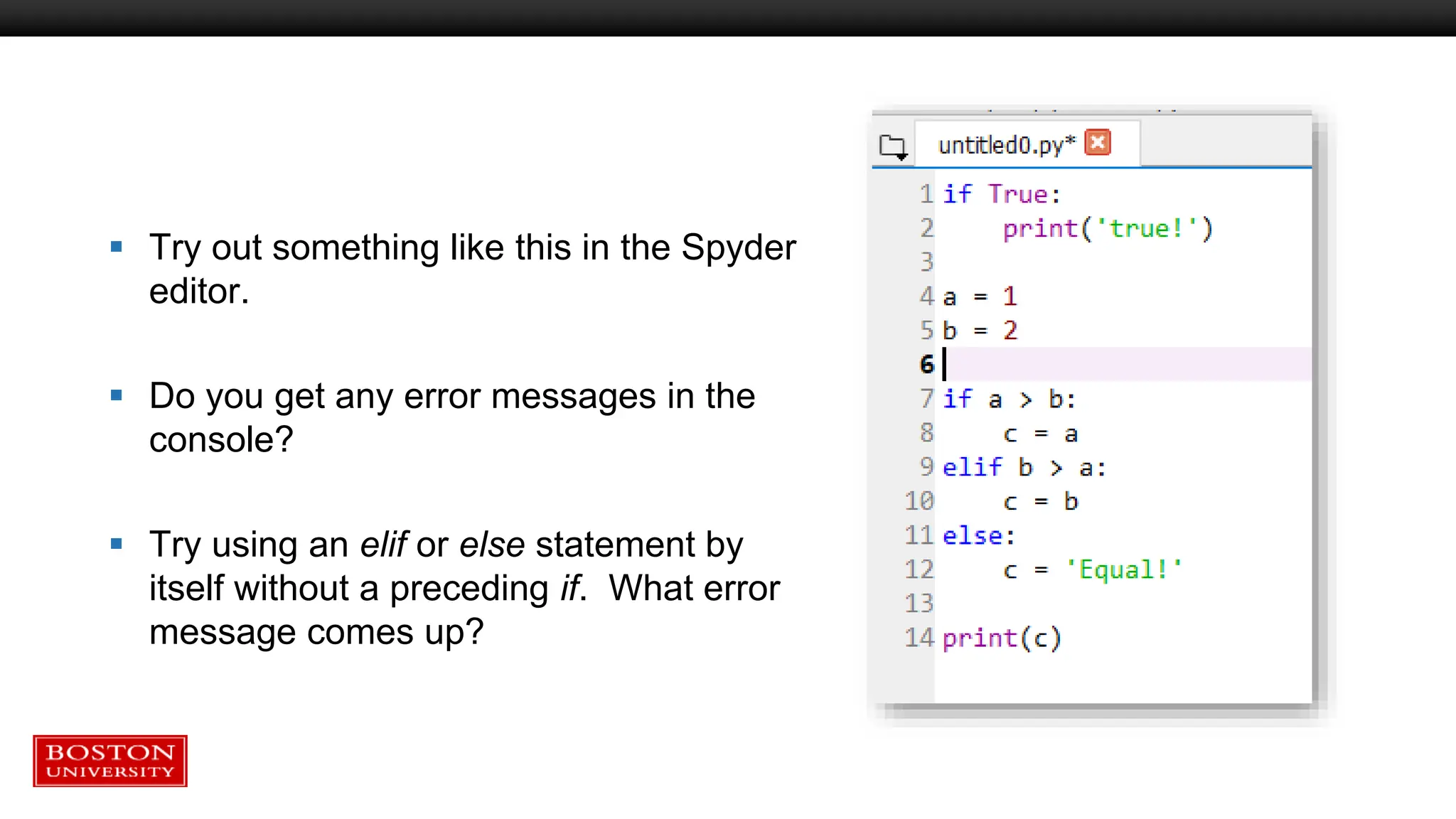
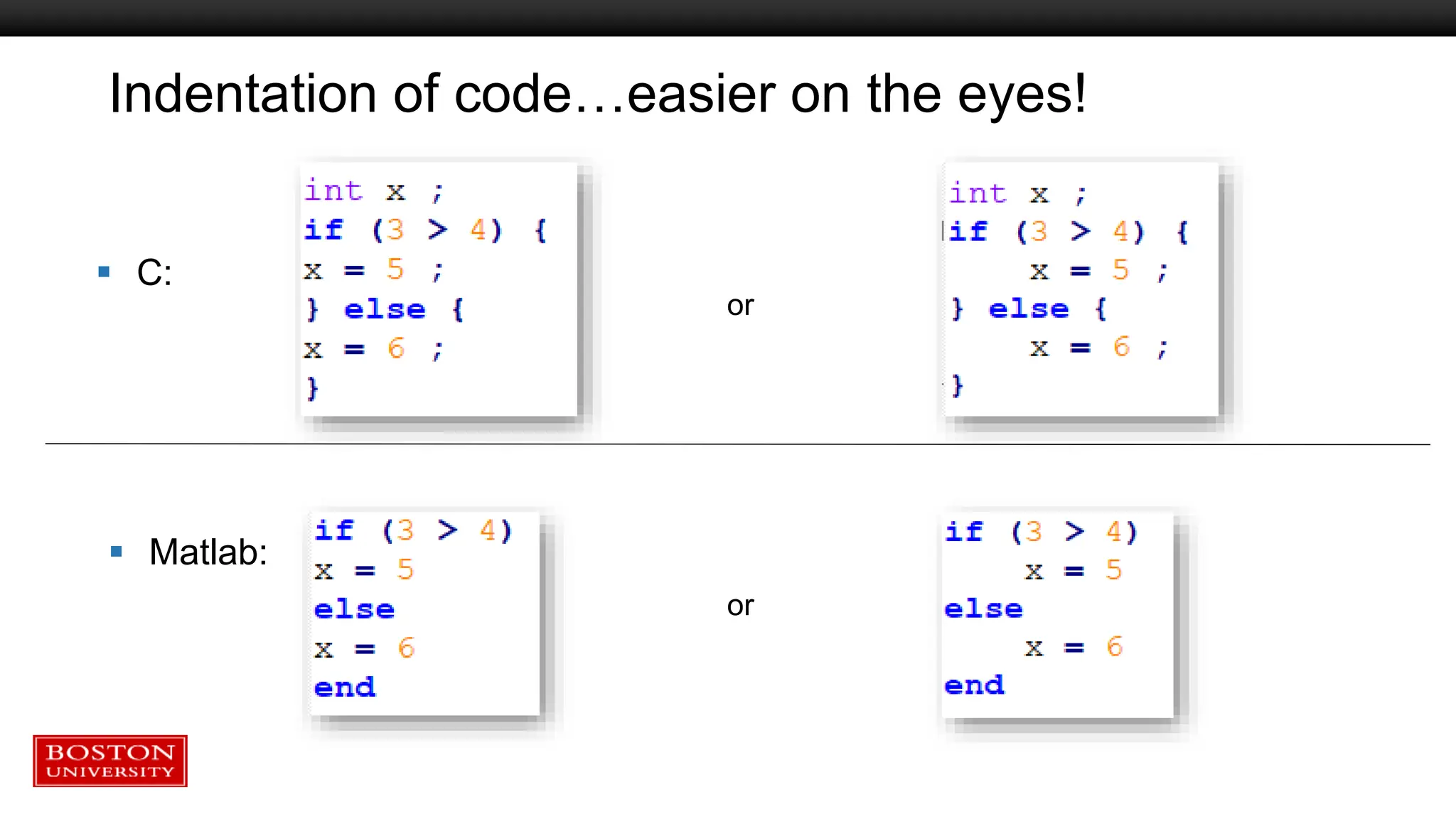
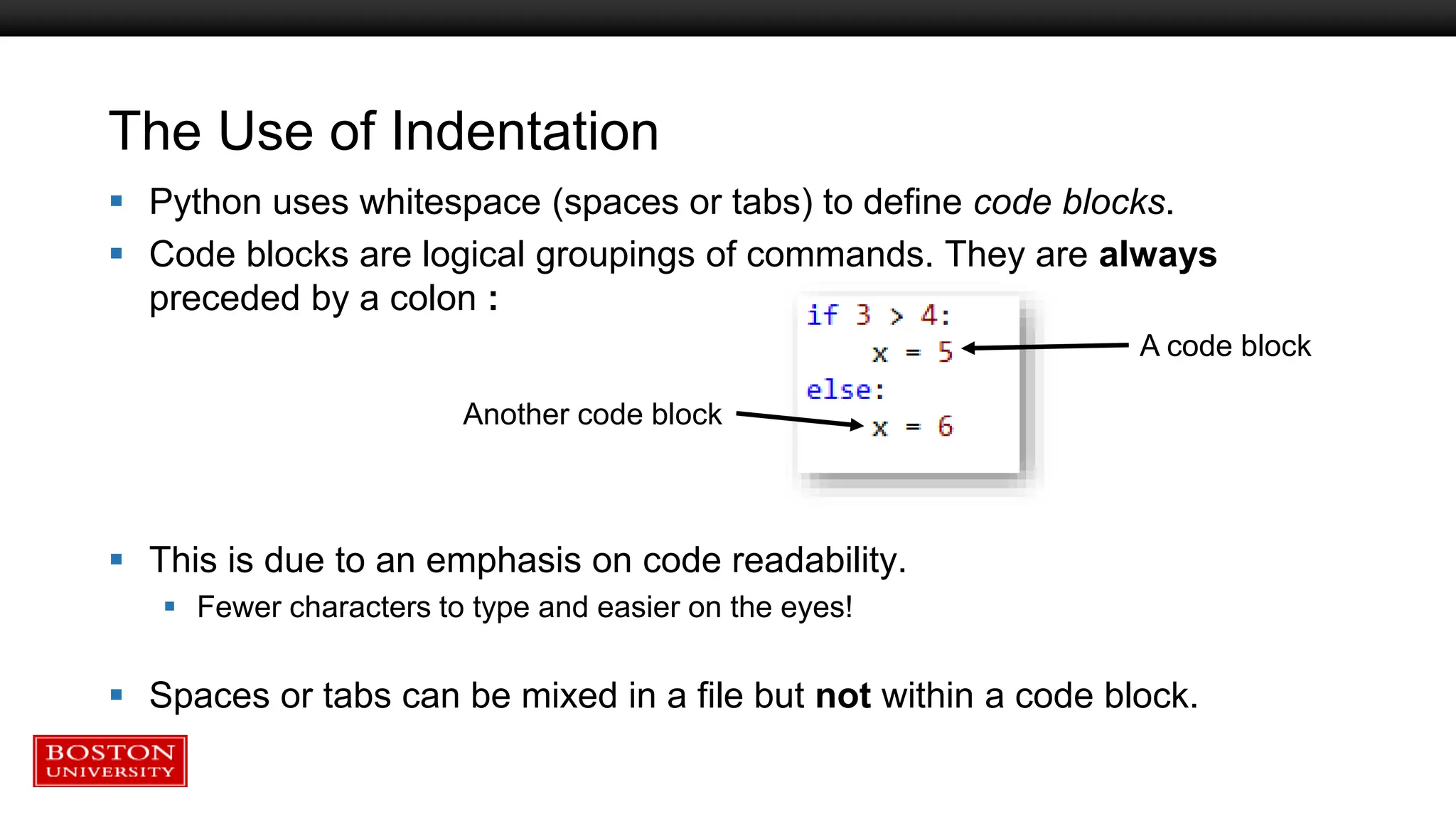
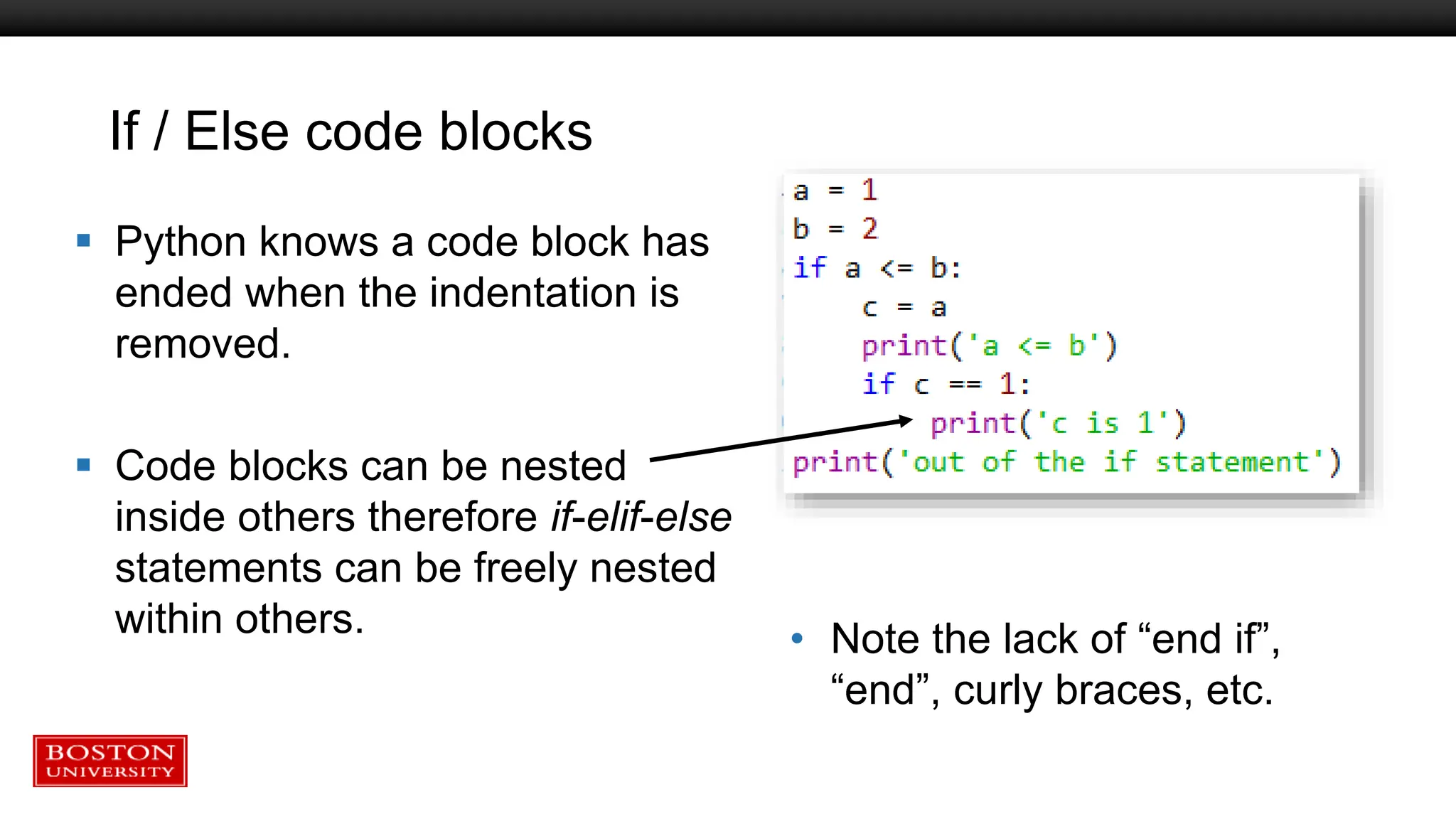
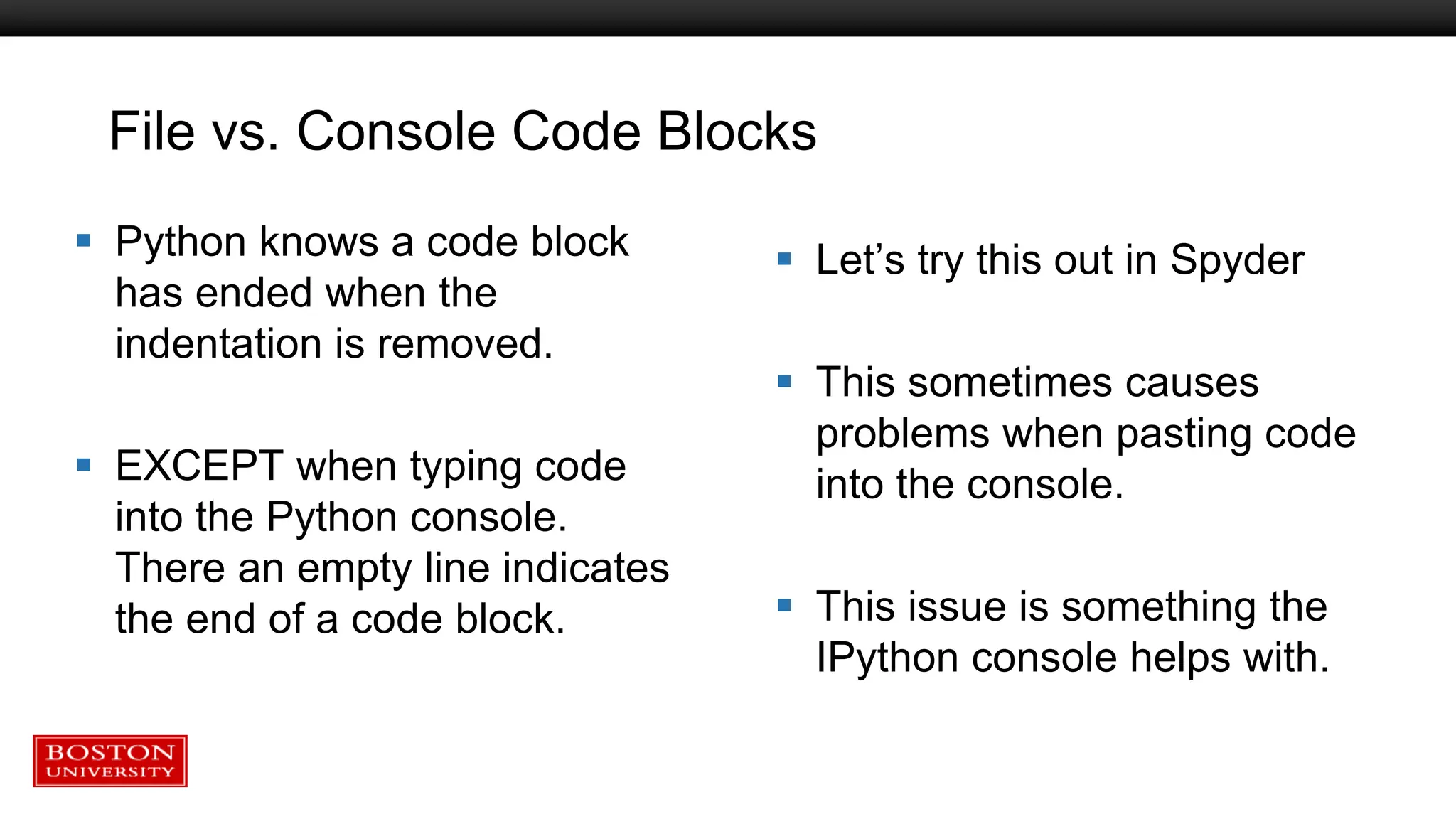
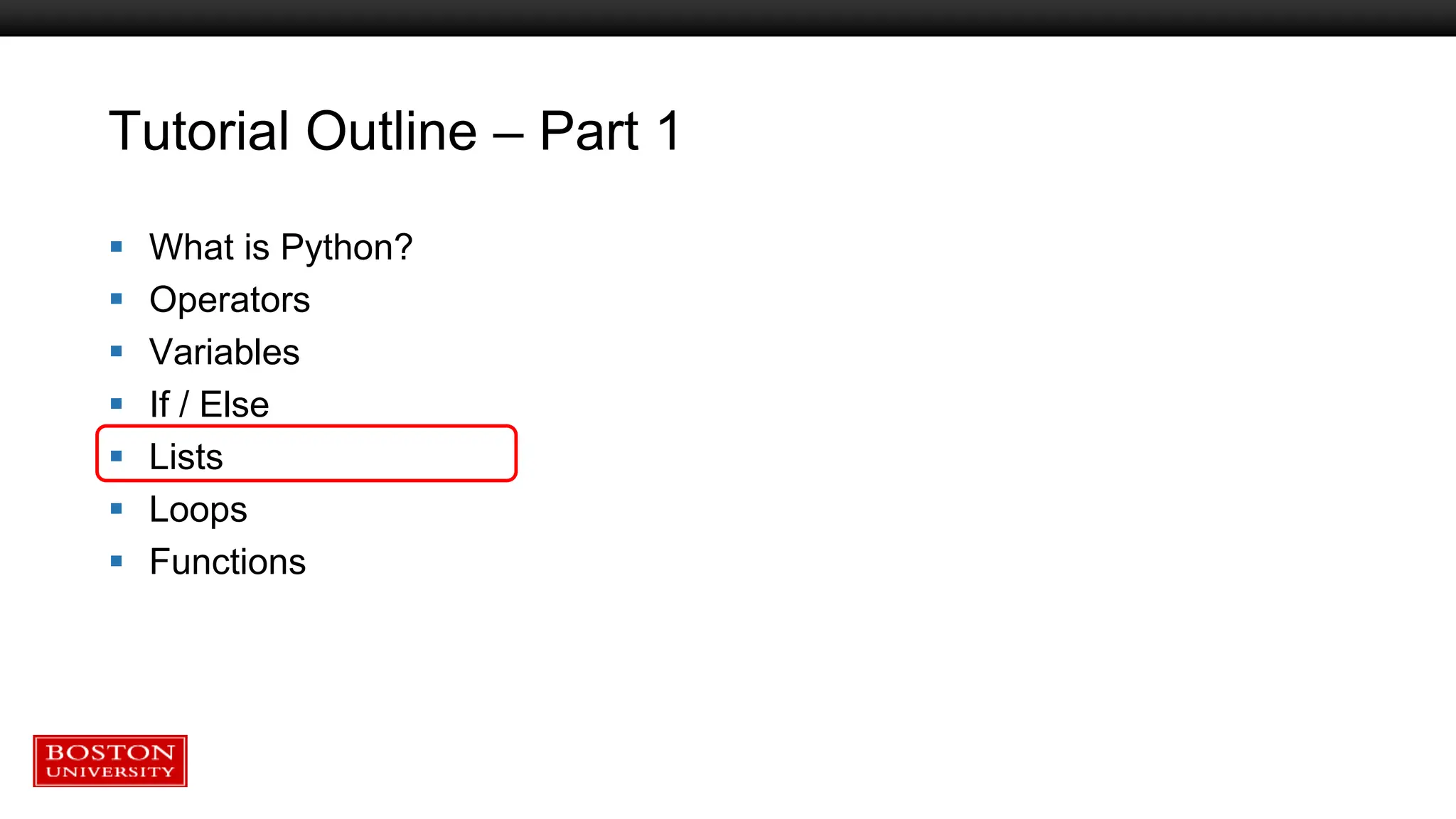
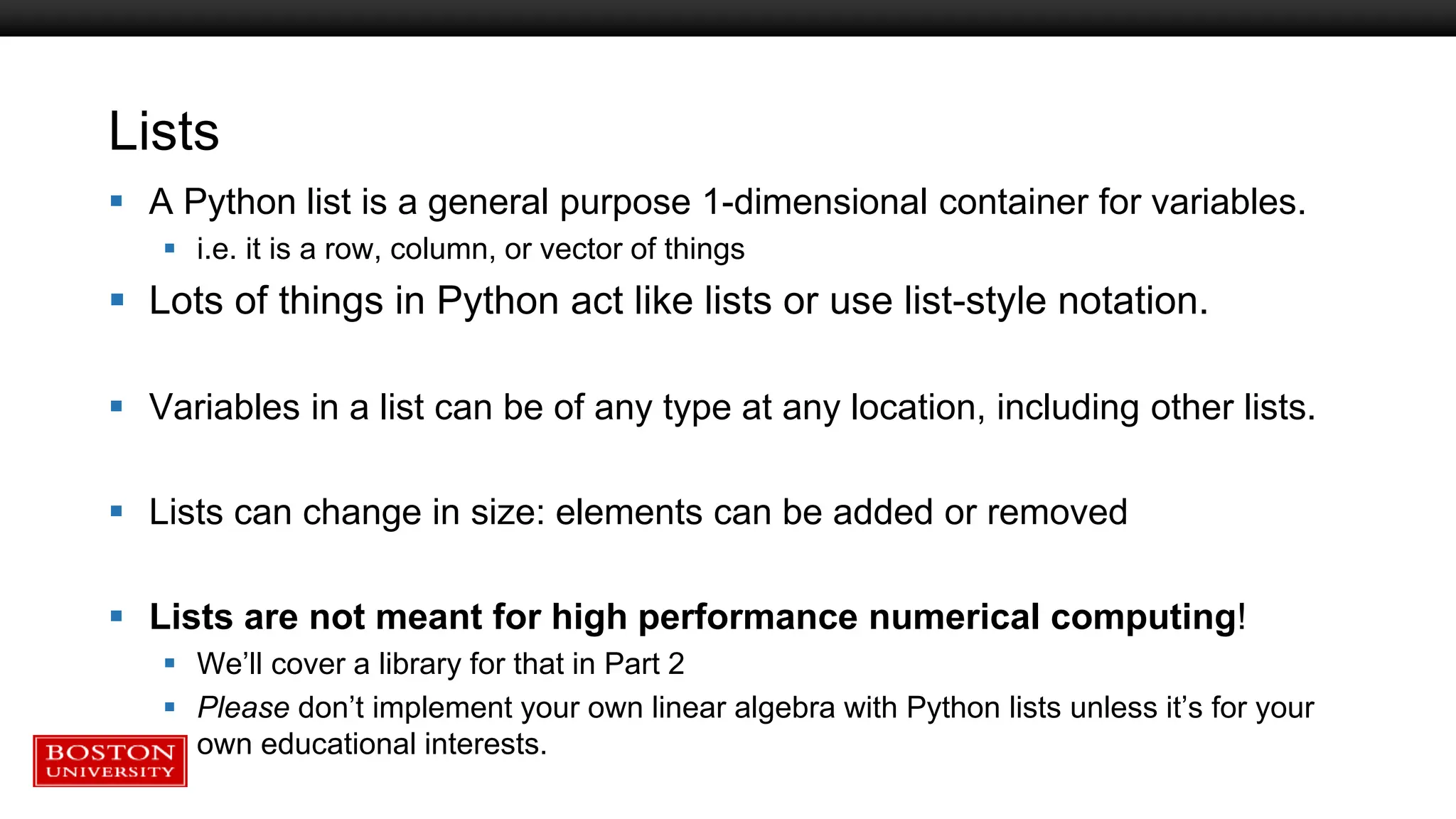
![Making a list and checking it twice…
Make a list with [ ] brackets.
Append with the append() function
Create a list with some initial elements
Create a list with N repeated elements
Try these out yourself!
Edit the file in Spyder and run it.
Add some print() calls to see the lists.](https://image.slidesharecdn.com/intro-to-python-part-1-240612100518-ad49bef3/75/Intro-to-Python-Part-1-first-part-edition-pdf-52-2048.jpg)
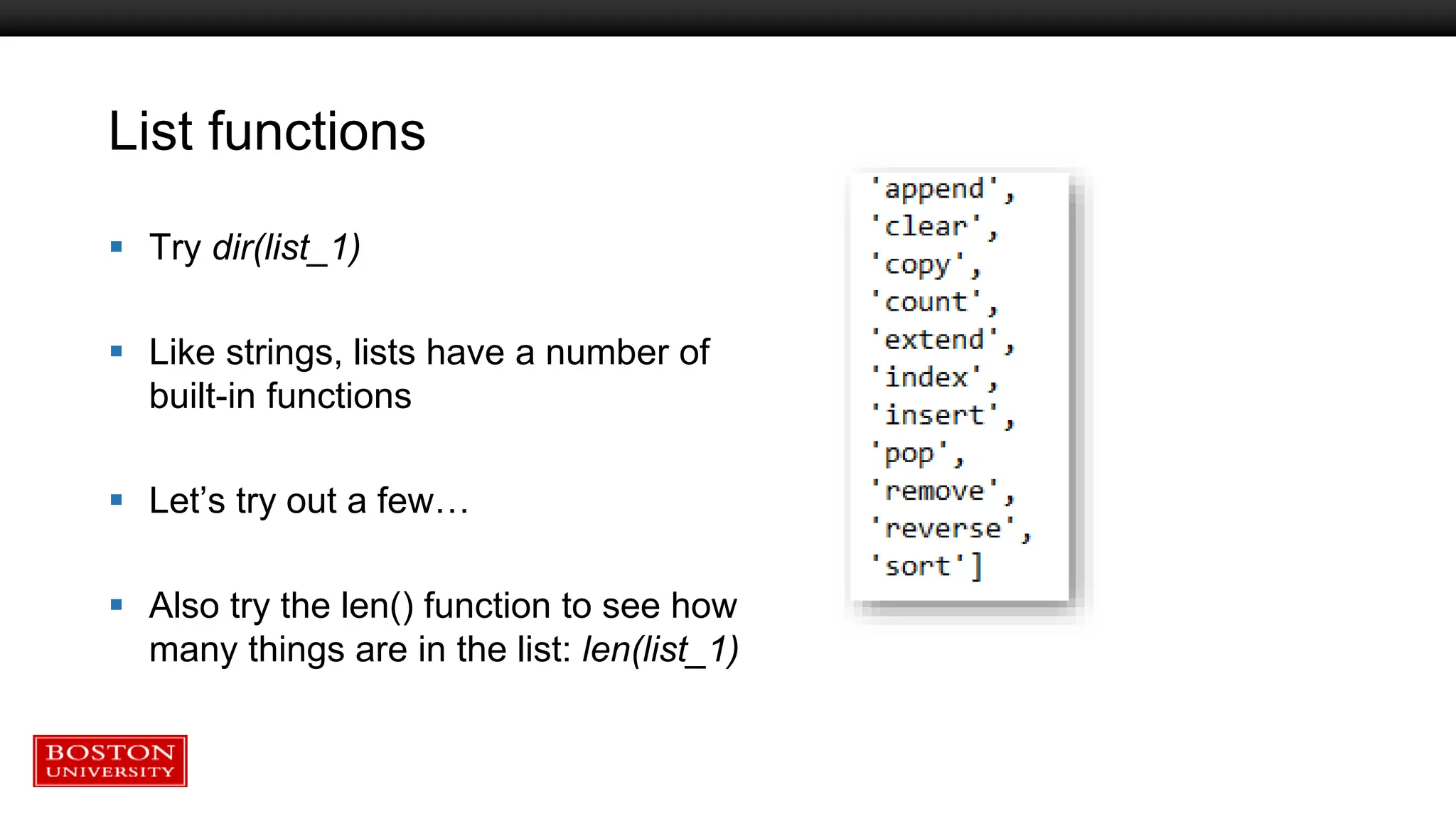
![Accessing List Elements
Lists are accessed by index.
All of this applies to accessing strings by index as well!
Index #’s start at 0.
List: x=['a', 'b', 'c', 'd' ,'e']
First element: x[0]
Nth element: x[2]
Last element: x[-1]
Next-to-last: x[-2]](https://image.slidesharecdn.com/intro-to-python-part-1-240612100518-ad49bef3/75/Intro-to-Python-Part-1-first-part-edition-pdf-54-2048.jpg)
![List Indexing
Elements in a list are accessed by an index number.
Index #’s start at 0.
List: x=['a', 'b', 'c', 'd' ,'e']
First element: x[0] 'a'
Nth element: x[2] 'c'
Last element: x[-1] 'e'
Next-to-last: x[-2] 'd'](https://image.slidesharecdn.com/intro-to-python-part-1-240612100518-ad49bef3/75/Intro-to-Python-Part-1-first-part-edition-pdf-55-2048.jpg)
![List Slicing
List: x=['a', 'b', 'c', 'd' ,'e']
Slice syntax: x[start:end:step]
The start value is inclusive, the end value is exclusive.
Step is optional and defaults to 1.
Leaving out the end value means “go to the end”
Slicing always returns a new list copied from the existing list
x[0:1] ['a']
x[0:2] ['a','b']
x[-3:] ['c', 'd', 'e'] # Third from the end to the end
x[2:5:2] ['c', 'e']](https://image.slidesharecdn.com/intro-to-python-part-1-240612100518-ad49bef3/75/Intro-to-Python-Part-1-first-part-edition-pdf-56-2048.jpg)
![List assignments and deletions
Lists can have their elements overwritten or deleted (with the del) command.
List: x=['a', 'b', 'c', 'd' ,'e']
x[0] = -3.14 x is now [-3.14, 'b', 'c', 'd', 'e']
del x[-1] x is now [-3.14, 'b', 'c', 'd']](https://image.slidesharecdn.com/intro-to-python-part-1-240612100518-ad49bef3/75/Intro-to-Python-Part-1-first-part-edition-pdf-57-2048.jpg)
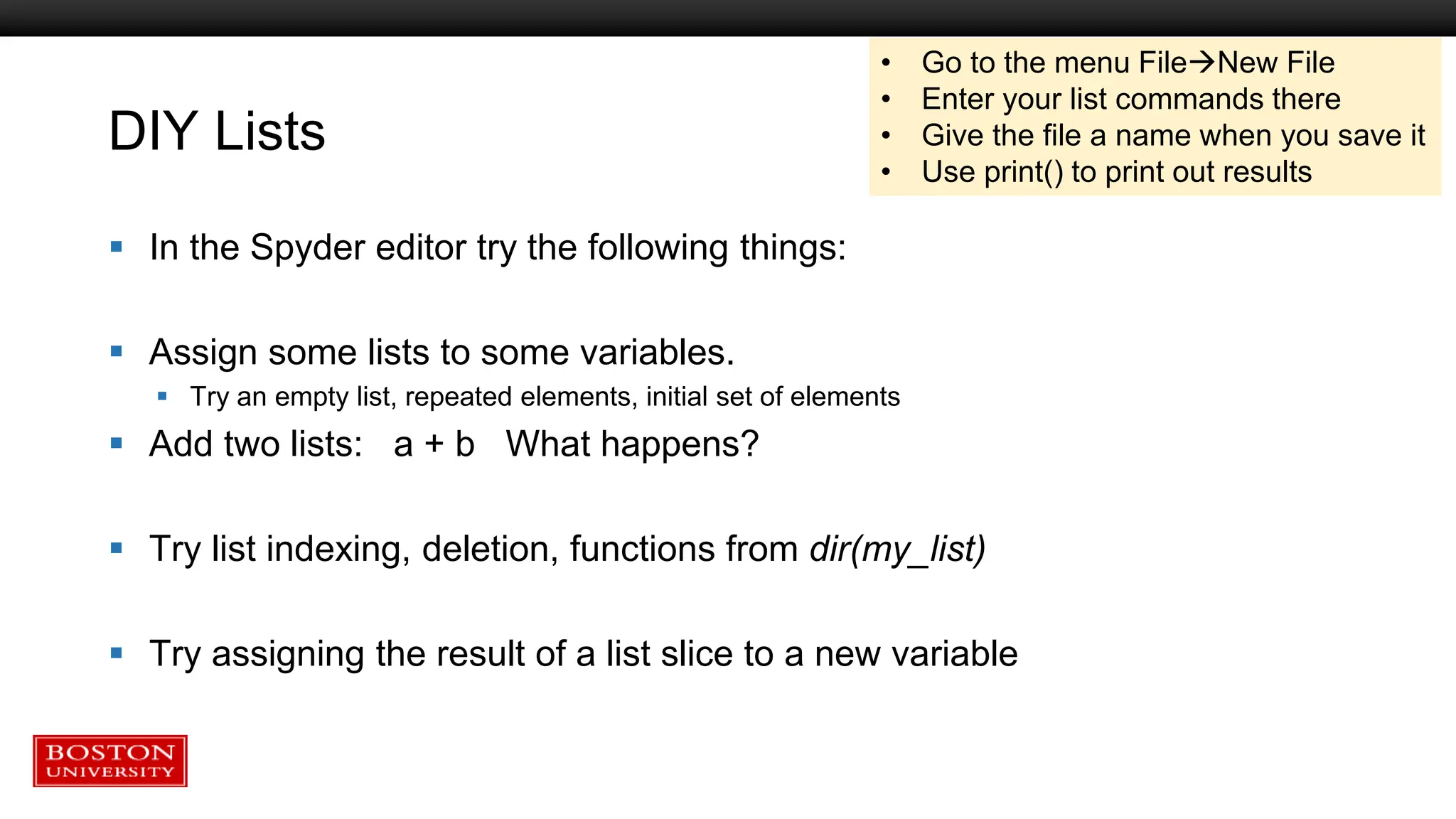
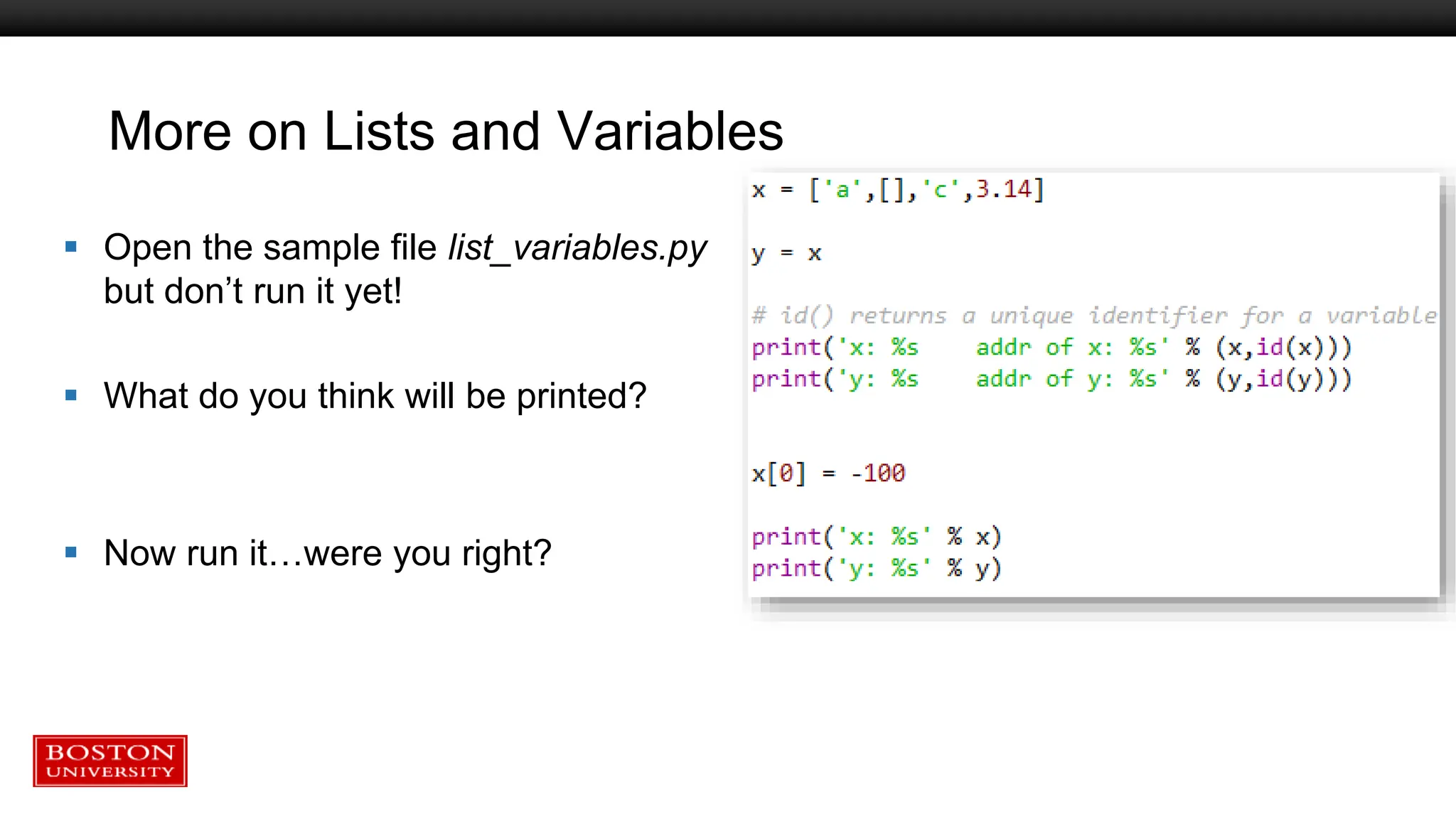
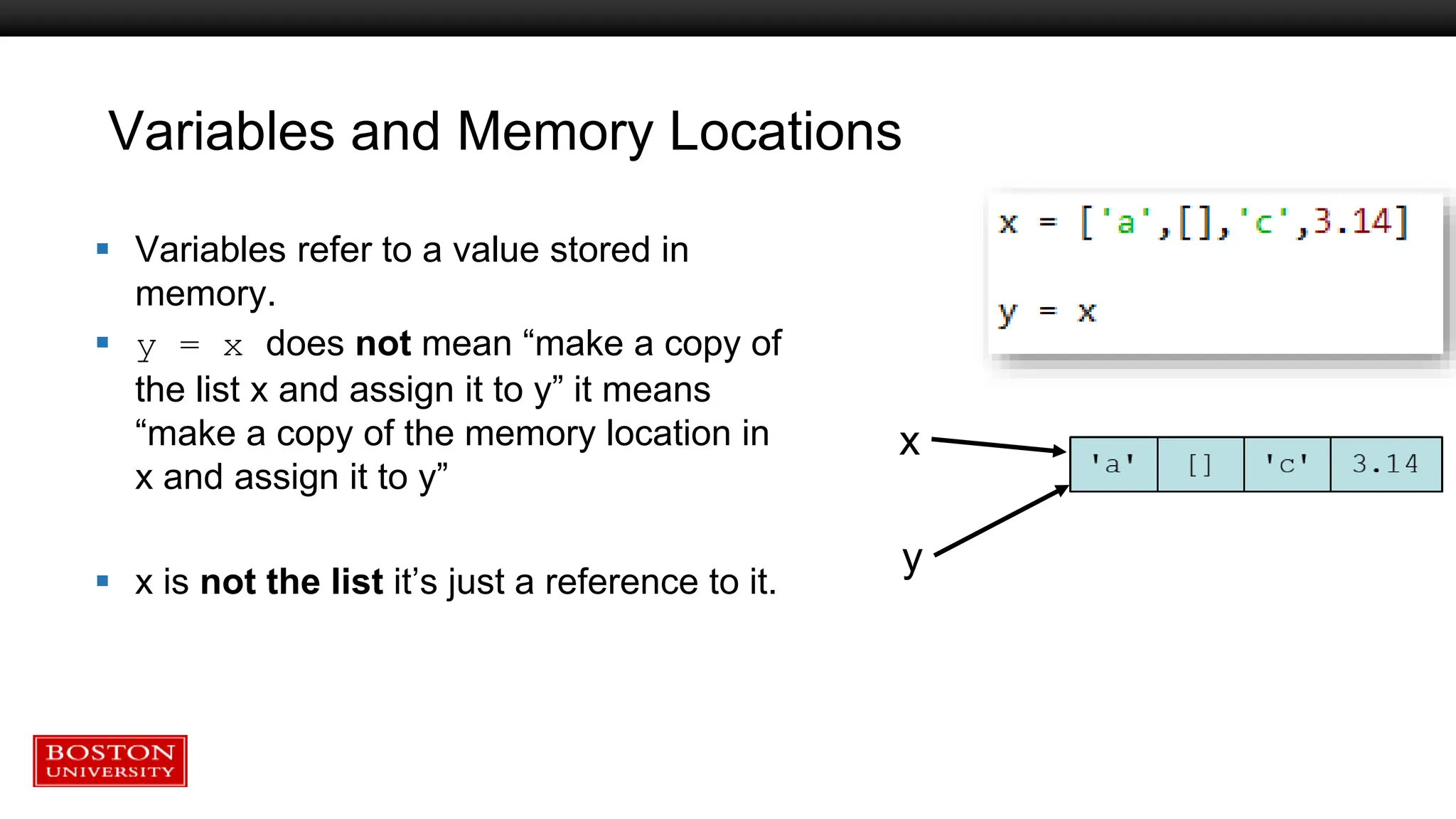
![Copying Lists
How to copy (2 ways…there are more!):
y = x[:] or y=list(x)
In list_variables.py uncomment the code at the bottom and run it.
This behavior seems weird at first. It will make more sense when calling
functions.](https://image.slidesharecdn.com/intro-to-python-part-1-240612100518-ad49bef3/75/Intro-to-Python-Part-1-first-part-edition-pdf-61-2048.jpg)
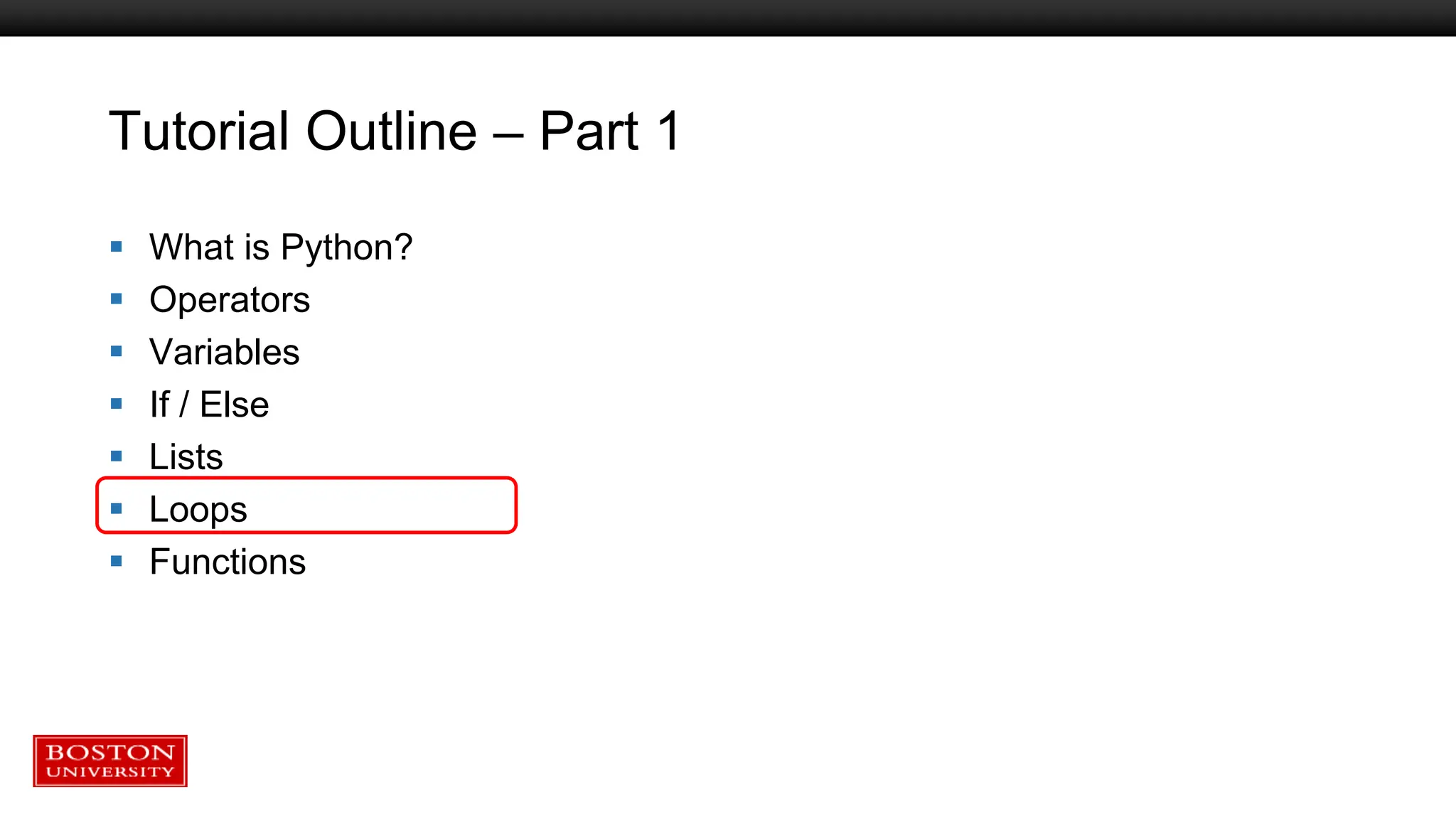
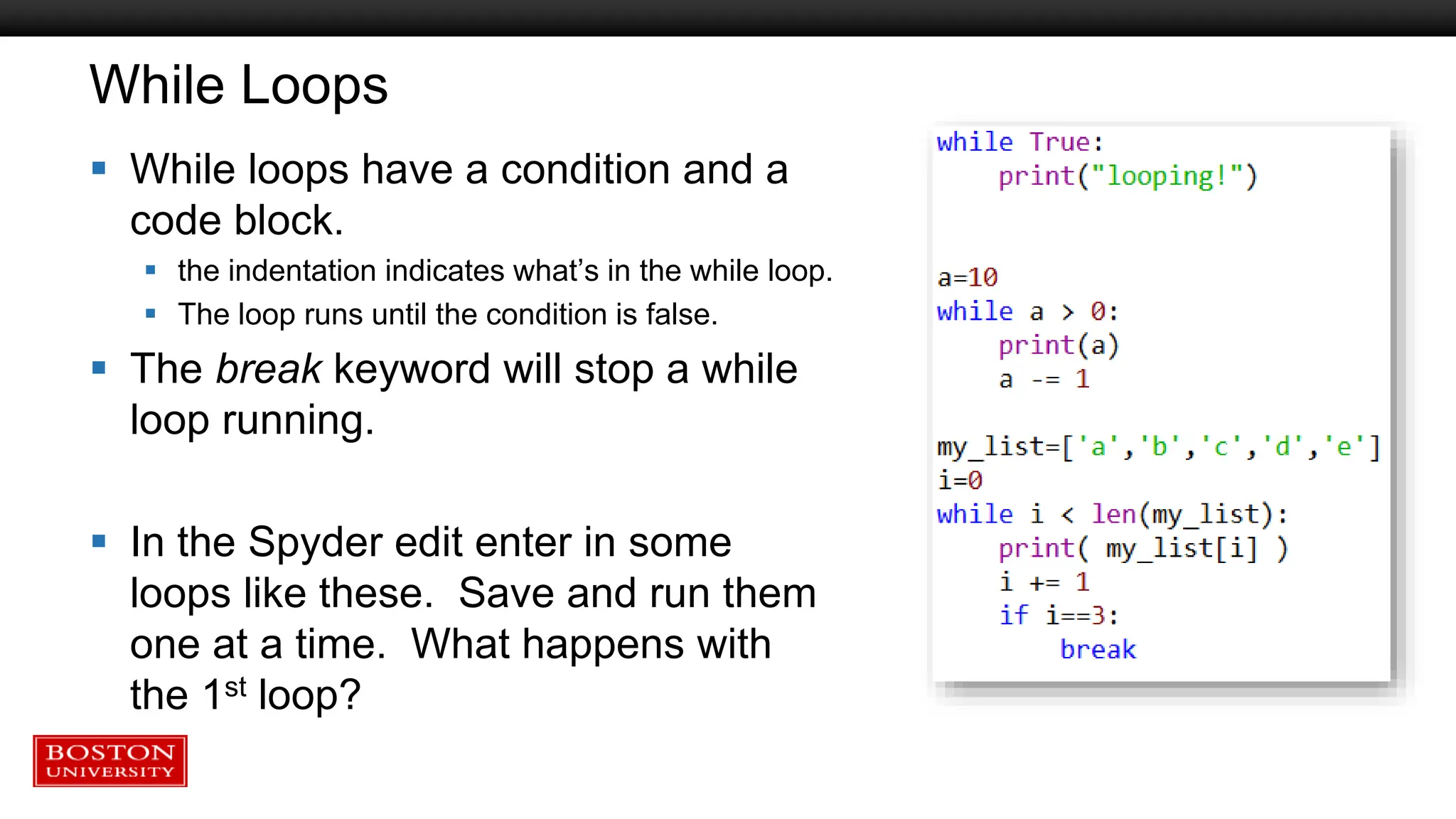
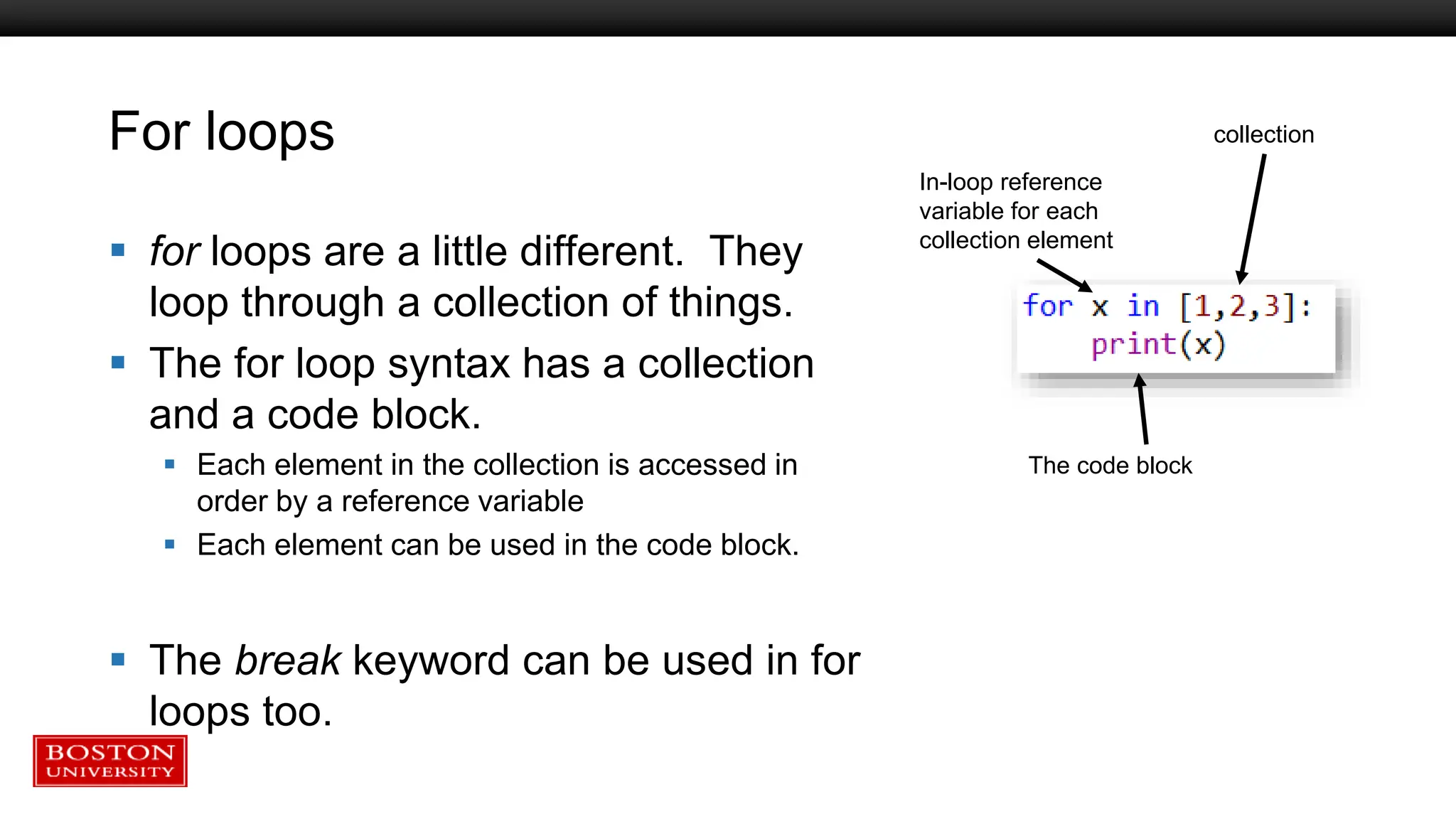
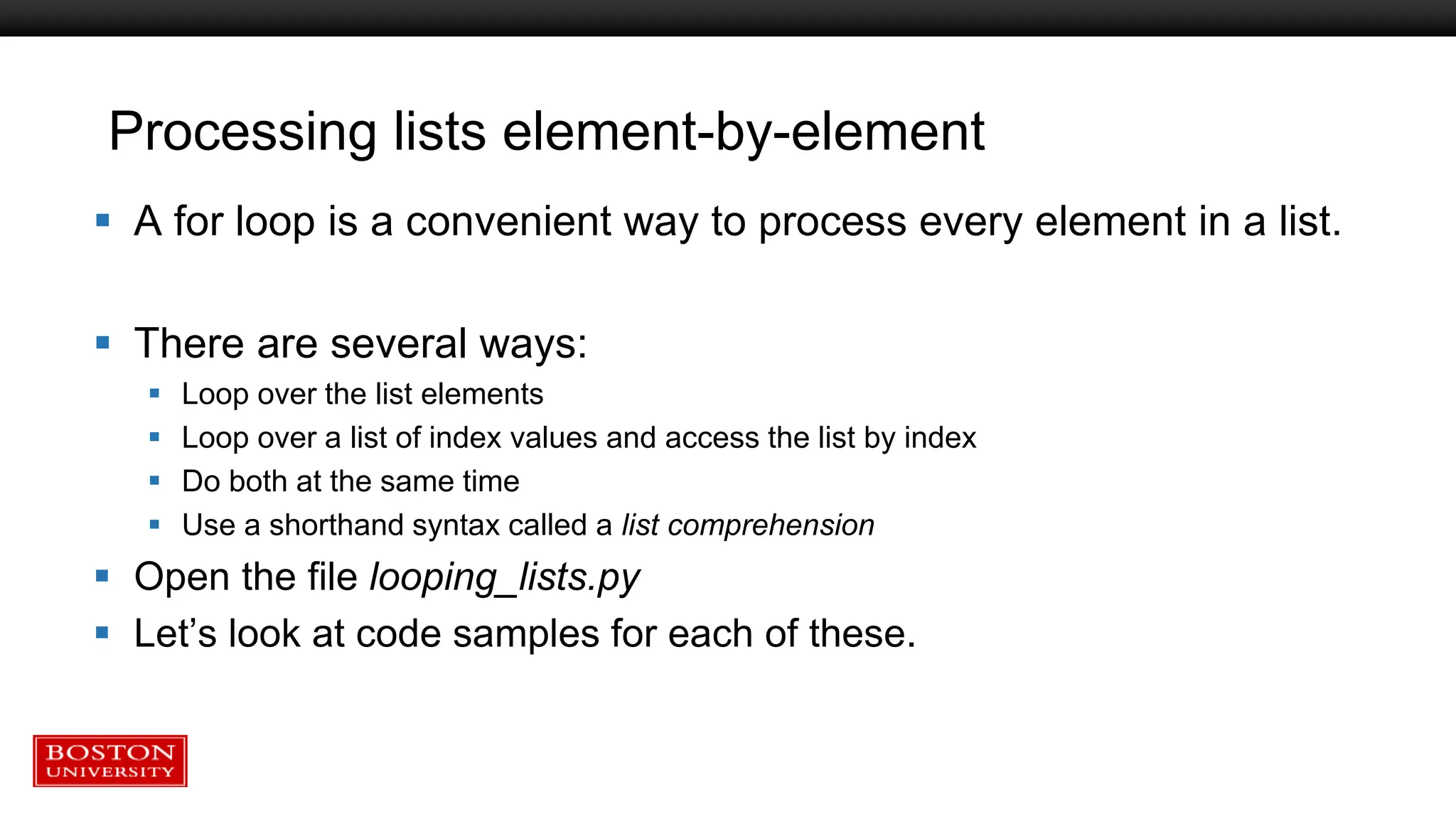
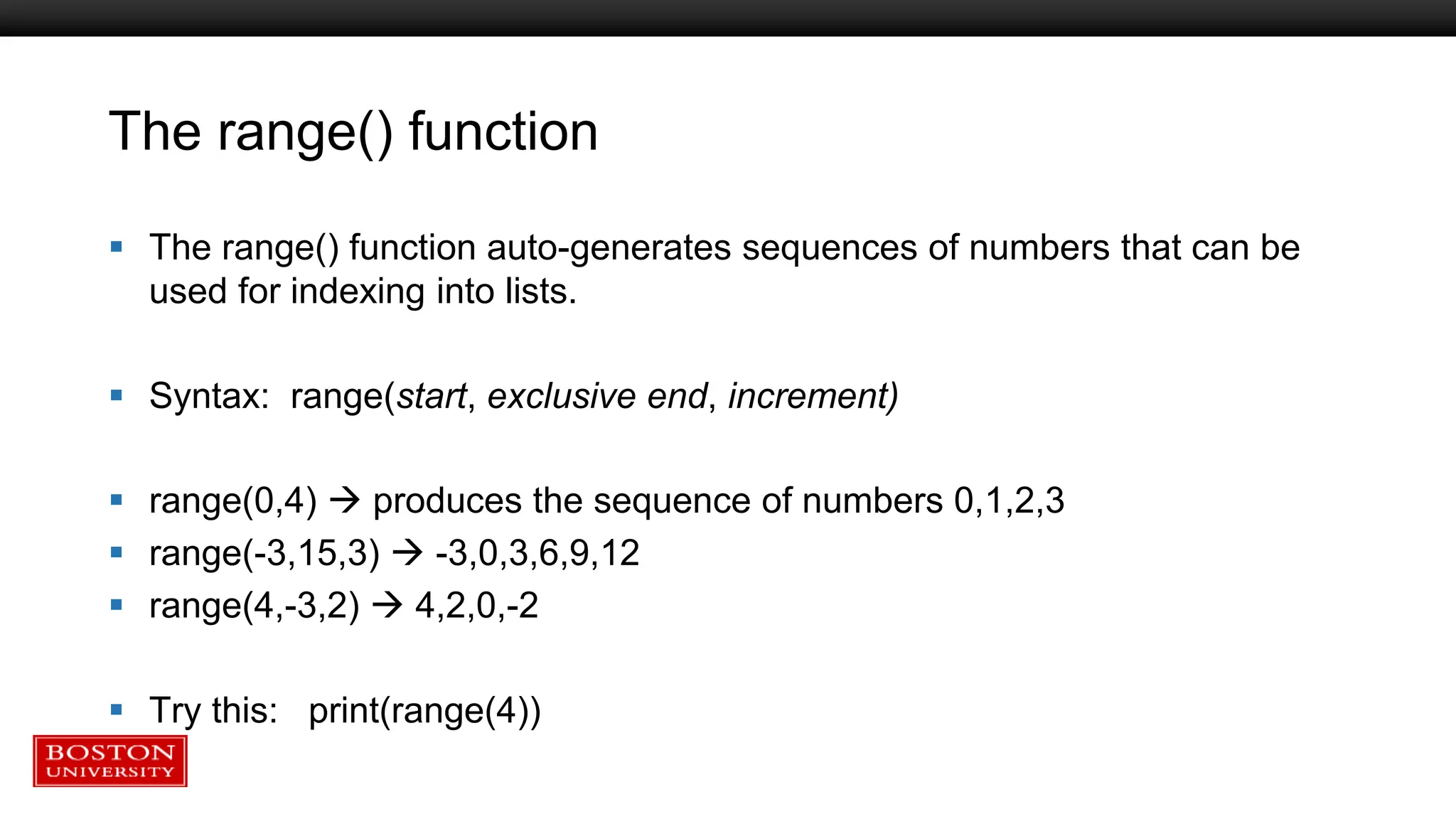
![Lists With Loops
Open the file read_a_file.py
This is an example of reading a file
into a list. The file is shown to the
right, numbers.txt
We want to read the lines in the file
into a list of strings (1 string for each
line), then extract separate lists of
the odd and even numbers.
odds [1,3,5…]
evens [2,4,6…]
• Edit read_a_file.py and try to
figure this out.
• A solution is available in
read_a_file_solved.py
• Use the editor and run the code
frequently after small changes!](https://image.slidesharecdn.com/intro-to-python-part-1-240612100518-ad49bef3/75/Intro-to-Python-Part-1-first-part-edition-pdf-67-2048.jpg)